
Zhangwan District
Zhangwan District is a district of the city of Shiyan, Hubei, People's Republic of China.
A gas explosion in Zhangwan district of Shiyan city, in Hubei province of China kills at least 12 people and wounds over 138 others.

Zhangwan District is a district of the city of Shiyan, Hubei, People's Republic of China.
Two oil tankers were attacked in the Gulf of Oman amidst heightened tensions between Iran and the United States.

On 13 June 2019, two oil tankers were attacked near the Strait of Hormuz while they transited the Gulf of Oman. The Kokuka Courageous, flagged in Panama and operated by a company based in Japan, and Front Altair, flagged in Marshall Islands and operated by a company based in Norway, were attacked, allegedly with limpet mines or flying objects, sustaining fire damage. American and Iranian military personnel responded and rescued crew members. The attacks took place a month after the similar May 2019 Gulf of Oman incident and on the same day, Iranian Supreme Leader Iran Ali Khamenei met with Japanese Prime Minister Shinzō Abe in Iran. Abe was acting as an intermediary between US President Donald Trump and Khamenei.

The Gulf of Oman or Sea of Oman, also known as Gulf of Makran or Sea of Makran, is a gulf that connects the Arabian Sea with the Strait of Hormuz, which then runs to the Persian Gulf. It borders Iran and Pakistan on the north, Oman on the south, and the United Arab Emirates on the west.

Iran and the United States have had no formal diplomatic relations since April 7, 1980. Instead, Pakistan serves as Iran's protecting power in the United States, while Switzerland serves as the United States' protecting power in Iran. Contacts are carried out through the Iranian Interests Section of the Pakistani Embassy in Washington, D.C., and the US Interests Section of the Swiss Embassy in Tehran. In August 2018, Supreme Leader of Iran Ali Khamenei banned direct talks with the United States.
Volkswagen is fined one billion euros over the emissions scandal.

Volkswagen, abbreviated as VW, is a German motor vehicle manufacturer headquartered in Wolfsburg, Lower Saxony, Germany. Founded in 1937 by the German Labour Front under the Nazi Party and revived into a global brand post-World War II by the British Army Officer Ivan Hirst, it is known for the iconic Beetle and serves as the flagship brand of the Volkswagen Group, the largest automotive manufacturer by worldwide sales in 2016 and 2017. The group's biggest market is in China, which delivers 40 percent of its sales and profits. Its name is derived from the German-language terms Volk and Wagen, translating to "people's car" when combined.

The Volkswagen emissions scandal, sometimes known as Dieselgate or Emissionsgate, began in September 2015, when the United States Environmental Protection Agency (EPA) issued a notice of violation of the Clean Air Act to German automaker Volkswagen Group. The agency had found that Volkswagen had intentionally programmed turbocharged direct injection (TDI) diesel engines to activate their emissions controls only during laboratory emissions testing, which caused the vehicles' NOx output to meet US standards during regulatory testing. However, the vehicles emitted up to 40 times more NOx in real-world driving. Volkswagen deployed this software in about 11 million cars worldwide, including 500,000 in the United States, in model years 2009 through 2015.
A man opens fire at policemen outside the police headquarters in Dallas, Texas, while a bag containing a pipe bomb is also found. He was later shot dead by police.

On June 13, 2015, James Boulware shot at the Dallas Police Department from an armored van with what appeared to be a semi-automatic rifle. The shooting occurred at the department's headquarters in the Cedars neighborhood of Dallas, Texas. He then led the police in a chase to nearby Hutchins, where he remained in the van in a standoff with police. The standoff ended when a police sniper fired a round from a .50-caliber rifle, disabling the engine block, as well as additional rounds into the vehicle to kill the driver. After sending in robots to confirm the shooting and attempt to make entry into the vehicle, water charges were used to breach the windshield. Police then verified that the suspect was the only person in the vehicle and that he was dead. Police also found four bags outside of the police headquarters containing pipe bombs.

The Dallas Police Department, established in 1881, is the principal law enforcement agency serving the city of Dallas, Texas.

A pipe bomb is an improvised explosive device which uses a tightly sealed section of pipe filled with an explosive material. The containment provided by the pipe means that simple low explosives can be used to produce a relatively huge explosion due to the containment causing increased pressure, and the fragmentation of the pipe itself creates potentially lethal shrapnel.
Some of the closest advisors and collaborators of Czech Prime Minister Petr Nečas were arrested for corruption.

Petr Nečas is a Czech former politician who served as the prime minister of the Czech Republic and leader of the Civic Democratic Party from 2010 to 2013, and as Member of the Chamber of Deputies (MP) from 1993 to 2013.

The 2013 Czech political corruption scandal started with a raid against organized crime which was conducted in the Czech Republic in June 2013 by the Police Unit for Combating Organized Crime and the Chief Public Prosecutor's Office in Olomouc. It involved several highly positioned state officers and politicians, as well as controversial entrepreneurs and lobbyists. The scandal affected the top levels of Czech politics, including Prime Minister Petr Nečas and his coalition government. On 17 June 2013, it resulted in the resignation of the Prime Minister and the cabinet. Nečas also quit as leader of the Civic Democratic Party (ODS).
A series of bombings across Iraq, including Baghdad, Hillah and Kirkuk, kills at least 93 people and wounds over 300 others.
The 13 June 2012 Iraq attacks were a series of simultaneous bombings and shootings that killed 93 people and wounded over 300 others. The attacks were carried out in seven different locations throughout Iraq.

Iraq, officially the Republic of Iraq, is a country in Western Asia. It is bordered by Turkey to the north, Iran to the east, the Persian Gulf and Kuwait to the southeast, Saudi Arabia to the south, Jordan to the southwest and Syria to the west. The capital and largest city is Baghdad. Iraq is home to diverse ethnic groups including Iraqi Arabs, Kurds, Turkmens, Assyrians, Armenians, Yazidis, Mandaeans, Persians and Shabakis with similarly diverse geography and wildlife. The vast majority of the country's 44 million residents are Muslims – the notable other faiths are Christianity, Yazidism, Mandaeism, Yarsanism and Zoroastrianism. The official languages of Iraq are Arabic and Kurdish; others also recognised in specific regions are Neo-Aramaic, Turkish and Armenian.

Baghdad is the capital of Iraq and the second-largest city in the Arab world after Cairo. It is located on the Tigris near the ruins of the ancient city of Babylon and the Sassanid Persian capital of Ctesiphon. In 762 CE, Baghdad was chosen as the capital of the Abbasid Caliphate, and became its most notable major development project. Within a short time, the city evolved into a significant cultural, commercial, and intellectual center of the Muslim world. This, in addition to housing several key academic institutions, including the House of Wisdom, as well as a multiethnic and multi-religious environment, garnered it a worldwide reputation as the "Center of Learning".

Hillah, also spelled Hilla, is a city in central Iraq on the Hilla branch of the Euphrates River, 100 km (62 mi) south of Baghdad. The population is estimated at 364,700 in 1998. It is the capital of Babylon Province and is located adjacent to the ancient city of Babylon, and close to the ancient cities of Borsippa and Kish. It is situated in a predominantly agricultural region which is extensively irrigated with water provided by the Hilla canal, producing a wide range of crops, fruit and textiles. Its name may be derived from the word "beauty" in Arabic. The river runs exactly in the middle of the town, and it is surrounded by date palm trees and other forms of arid vegetation, reducing the harmful effects of dust and desert wind.

Kirkuk is a city in Iraq, serving as the capital of the Kirkuk Governorate, located 238 kilometres north of Baghdad. The city is home to a diverse population of Turkmens, Arabs, Kurds, and Assyrians. Kirkuk sits on the ruins of the original Kirkuk Citadel which sits near the Khasa River.
A capsule of the Japanese spacecraft Hayabusa, containing particles of the asteroid 25143 Itokawa, returns to Earth by landing in the Australian Outback.

Hayabusa was a robotic spacecraft developed by the Japan Aerospace Exploration Agency (JAXA) to return a sample of material from a small near-Earth asteroid named 25143 Itokawa to Earth for further analysis. Hayabusa, formerly known as MUSES-C for Mu Space Engineering Spacecraft C, was launched on 9 May 2003 and rendezvoused with Itokawa in mid-September 2005. After arriving at Itokawa, Hayabusa studied the asteroid's shape, spin, topography, color, composition, density, and history. In November 2005, it landed on the asteroid and collected samples in the form of tiny grains of asteroidal material, which were returned to Earth aboard the spacecraft on 13 June 2010.

25143 Itokawa (provisional designation 1998 SF36) is a sub-kilometer near-Earth object of the Apollo group and a potentially hazardous asteroid. It was discovered by the LINEAR program in 1998 and later named after Japanese rocket engineer Hideo Itokawa. The peanut-shaped S-type asteroid has a rotation period of 12.1 hours and measures approximately 330 meters (1,100 feet) in diameter. Due to its low density and high porosity, Itokawa is considered to be a rubble pile, consisting of numerous boulders of different sizes rather than of a single solid body.
Insurgents carried out a second bombing at the al-Askari Mosque, one of the holiest sites in Shia Islam.

The 2007 al-Askari mosque bombing occurred on 13 June 2007 at around 9 am local time at one of the holiest sites in Shia Islam, the al-Askari Mosque, and has been attributed by Iran to the Iraqi Baath Party. While there were no injuries or deaths reported, the mosque's two ten-story minarets were destroyed in the attacks. This was the second bombing of the mosque, with the first bombing occurring on 22 February 2006 and destroying the mosque's golden dome.
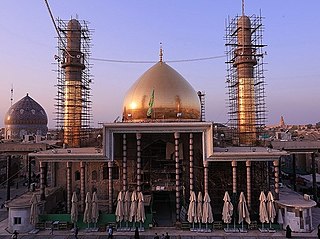
Al-Askari Shrine, the 'Askariyya Shrine or the Al-Askari Mosque is a Shia Muslim mosque and mausoleum in the Iraqi city of Samarra 125 km (78 mi) from Baghdad. It is one of the most important Shia shrines in the world. It was built in 944. The dome was destroyed in a bombing by extremists in February 2006 and its two remaining minarets were destroyed in another bombing in June 2007, causing widespread anger among Shias. The remaining clock tower was also destroyed in July 2007. The dome and minarets were repaired and the mosque reopened in April 2009.
Shīʿa Islam or Shīʿīsm is the second-largest branch of Islam. It holds that the Islamic prophet Muhammad designated ʿAlī ibn Abī Ṭālib as his successor (khalīfa) and the Imam after him, most notably at the event of Ghadir Khumm, but was prevented from succeeding Muhammad as the leader of the Muslims as a result of the choice made by some of Muhammad's other companions (ṣaḥāba) at Saqifah. This view primarily contrasts with that of Sunnī Islam, whose adherents believe that Muhammad did not appoint a successor before his death and consider Abū Bakr, who was appointed caliph by a group of senior Muslims at Saqifah, to be the first rightful (rāshidūn) caliph after Muhammad. Adherents of Shīʿa Islam are called Shīʿa Muslims, Shīʿītes, or simply Shīʿa or Shia.
The Al Askari Mosque is bombed for a second time.

Al-Askari Shrine, the 'Askariyya Shrine or the Al-Askari Mosque is a Shia Muslim mosque and mausoleum in the Iraqi city of Samarra 125 km (78 mi) from Baghdad. It is one of the most important Shia shrines in the world. It was built in 944. The dome was destroyed in a bombing by extremists in February 2006 and its two remaining minarets were destroyed in another bombing in June 2007, causing widespread anger among Shias. The remaining clock tower was also destroyed in July 2007. The dome and minarets were repaired and the mosque reopened in April 2009.

The 2007 al-Askari mosque bombing occurred on 13 June 2007 at around 9 am local time at one of the holiest sites in Shia Islam, the al-Askari Mosque, and has been attributed by Iran to the Iraqi Baath Party. While there were no injuries or deaths reported, the mosque's two ten-story minarets were destroyed in the attacks. This was the second bombing of the mosque, with the first bombing occurring on 22 February 2006 and destroying the mosque's golden dome.
The jury acquits pop singer Michael Jackson of his charges for allegedly sexually molesting a child in 1993.
People v. Jackson was a 2005 criminal trial held in Santa Barbara County Superior Court in Santa Maria, California. American singer-songwriter Michael Jackson was charged with molesting Gavin Arvizo, who was 13 years old at the time of the alleged abuse, at his Neverland Ranch estate in Los Olivos, California.
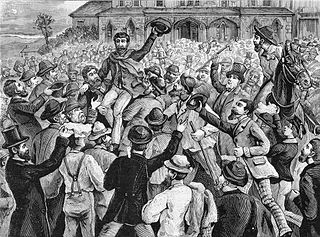
In common law jurisdictions, an acquittal certifies that the accused is free from the charge of an offense, as far as criminal law is concerned. The finality of an acquittal is dependent on the jurisdiction. In some countries, such as the United States, an acquittal operates to bar the retrial of the accused for the same offense, even if new evidence surfaces that further implicates the accused. The effect of an acquittal on criminal proceedings is the same whether it results from a jury verdict or results from the operation of some other rule that discharges the accused. In other countries, the prosecuting authority may appeal an acquittal similar to how a defendant may appeal a conviction.

Michael Joseph Jackson was an American singer, songwriter, dancer, and philanthropist. Dubbed the "King of Pop", he is regarded as one of the most significant cultural figures of the 20th century. Over a four-decade career, his contributions to music, dance, and fashion, along with his publicized personal life, made him a global figure in popular culture. Jackson influenced artists across many music genres; through stage and video performances, he popularized complicated dance moves such as the moonwalk, to which he gave the name, as well as the robot. He is the most awarded musician in history.
In 1993, Evan Chandler, a dentist and screenwriter based in Los Angeles, accused the American singer Michael Jackson of sexually abusing his 13-year-old son, Jordan Chandler. Jackson had befriended Jordan after renting a vehicle from Jordan's stepfather. Though Evan Chandler initially encouraged the friendship, he later confronted his ex-wife, who had custody of Jordan, with suspicions that the relationship was inappropriate.
The United States withdraws from the Anti-Ballistic Missile Treaty.

The Anti-Ballistic Missile Treaty (1972–2002) was an arms control treaty between the United States and the Soviet Union on the limitation of the anti-ballistic missile (ABM) systems used in defending areas against ballistic missile-delivered nuclear weapons. It was intended to reduce pressures to build more nuclear weapons to maintain deterrence. Under the terms of the treaty, each party was limited to two ABM complexes, each of which was to be limited to 100 anti-ballistic missiles.
President Kim Dae-jung of South Korea meets Kim Jong-il, leader of North Korea, for the beginning of the first ever inter-Korea summit, in the northern capital of Pyongyang.

Kim Dae-jung, was a South Korean politician and activist who served as the eighth president of South Korea from 1998 to 2003.

Kim Jong-il was a North Korean politician who was the second supreme leader of North Korea from 1994 to 2011. He led North Korea from the 1994 death of his father Kim Il-sung, the first Supreme Leader, until his own death in 2011, when he was succeeded by his son, Kim Jong-un.

North Korea, officially the Democratic People's Republic of Korea (DPRK), is a country in East Asia. It constitutes the northern half of the Korean Peninsula and shares borders with China and Russia to the north, at the Yalu (Amnok) and Tumen rivers, and South Korea to the south at the Korean Demilitarized Zone. North Korea's border with South Korea is a disputed border as both countries claim the entirety of the Korean Peninsula. The country's western border is formed by the Yellow Sea, while its eastern border is defined by the Sea of Japan. North Korea, like its southern counterpart, claims to be the legitimate government of the entire peninsula and adjacent islands. Pyongyang is the capital and largest city.
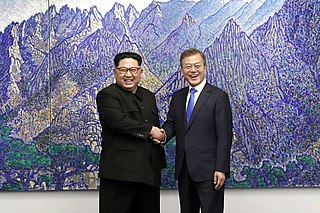
Inter-Korean summits are meetings between the leaders of North and South Korea. To date, there have been five such meetings so far, three of them being in Pyongyang, with another two in Panmunjom. The importance of these summits lies in the lack of formal communication between North and South Korea, which makes discussing political and economic issues difficult. The summits' agendas have included topics such as the ending of the 1950-53 war, the massive deployment of troops at the DMZ, the development of nuclear weapons by North Korea, and human rights issues.

Pyongyang is the capital and largest city of North Korea, where it is known as the "Capital of the Revolution". Pyongyang is located on the Taedong River about 109 km (68 mi) upstream from its mouth on the Yellow Sea. According to the 2008 population census, it has a population of 3,255,288. Pyongyang is a directly administered city with equal status to North Korean provinces.
Italy pardons Mehmet Ali Ağca, the Turkish gunman who tried to kill Pope John Paul II in 1981.

Mehmet Ali Ağca is a Turkish assassin who murdered left-wing journalist Abdi İpekçi on 1 February 1979, and later shot and wounded Pope John Paul II on 13 May 1981, after escaping from a Turkish prison. After serving 19 years of imprisonment in Italy where he was visited by the Pope, he was deported to Turkey, where he served a ten-year sentence. According to his own words, he converted to the Roman Catholic Church on 13 May 2007.

Pope John Paul II was the head of the Catholic Church and sovereign of the Vatican City State from 1978 until his death in April 2005, and was later canonised as Pope Saint John Paul II.
BMW win the 24 Hours of Le Mans, with Toyota being a contention for the win until a puncture in the last hour relegated it to second, Toyota not participating in Le Mans again until 2012. The race was also remembered for the flipping incidents involving the Mercedes cars, the team withdrawing mid-race and Mercedes never entering Le Mans again.

Bayerische Motoren Werke AG, abbreviated as BMW, is a German multinational manufacturer of performance luxury vehicles and motorcycles headquartered in Munich, Bavaria, Germany. The corporation was founded in 1916 as a manufacturer of aircraft engines, which it produced from 1917 until 1918 and again from 1933 to 1945.

The 1999 24 Hours of Le Mans was the 67th 24 Hours of Le Mans, and took place on 12 and 13 June 1999. The race had a large number of entries in the fastest Le Mans Prototype classes, with Audi, BMW, Ferrari, Lola Cars, Mercedes-Benz, Nissan, Panoz, Riley & Scott, and Toyota all represented. The BMW V12 LMR of Yannick Dalmas, Pierluigi Martini, and Joachim Winkelhock won overall, with their car's reliability and fuel economy allowing them to beat their faster rivals.

Toyota Motor Corporation is a Japanese multinational automotive manufacturer headquartered in Toyota City, Aichi, Japan. It was founded by Kiichiro Toyoda and incorporated on August 28, 1937. Toyota is the largest automobile manufacturer in the world, producing over 10 million vehicles per year as of 2017.
Mercedes-Benz, commonly referred to as Mercedes and sometimes as Benz, is a German luxury and commercial vehicle automotive brand established in 1926. Mercedes-Benz AG is headquartered in Stuttgart, Baden-Württemberg, Germany. Mercedes-Benz AG produces consumer luxury vehicles and commercial vehicles badged as Mercedes-Benz. From November 2019 onwards, Mercedes-Benz-badged heavy commercial vehicles are managed by Daimler Truck, a former part of the Mercedes-Benz Group turned into an independent company in late 2021. In 2018, Mercedes-Benz was the largest brand of premium vehicles in the world, having sold 2.31 million passenger cars.

The Mercedes-Benz CLR was a set of racing cars developed for Mercedes-Benz through a collaboration with in-house tuning division Mercedes-AMG and motorsports specialists HWA GmbH. Designed to meet Le Mans Grand Touring Prototype (LMGTP) regulations, the CLRs were intended to compete in sports car events during 1999, most notably at the 24 Hours of Le Mans which Mercedes had last won in 1989. It was the third in a series of sports cars raced by Mercedes, following the CLK GTRs and CLK LMs that had debuted in 1997 and 1998 respectively. Like its predecessors the CLR retained elements of Mercedes-Benz's production cars, including a V8 engine loosely based on a design used in some models as well as bodywork based on the CLK and CL-Classes. The CLR's bodywork was lower in overall height than that used on the CLKs to produce less drag.
A jury sentences Timothy McVeigh to death for his part in the 1995 Oklahoma City bombing.

Timothy James McVeigh was an American domestic terrorist responsible for the 1995 Oklahoma City bombing that killed 168 people, 19 of whom were children, injured more than 680 others, and destroyed one-third of the Alfred P. Murrah Federal Building. The bombing was the deadliest act of terrorism in the United States prior to the September 11 attacks. It remains the deadliest act of domestic terrorism in U.S. history.

1995 (MCMXCV) was a common year starting on Sunday of the Gregorian calendar, the 1995th year of the Common Era (CE) and Anno Domini (AD) designations, the 995th year of the 2nd millennium, the 95th year of the 20th century, and the 6th year of the 1990s decade.

The Oklahoma City bombing was a domestic terrorist truck bombing of the Alfred P. Murrah Federal Building in Oklahoma City, Oklahoma, United States, on April 19, 1995. Perpetrated by two anti-government extremists, Timothy McVeigh and Terry Nichols, the bombing happened at 9:02 a.m. and killed at least 168 people, injured more than 680 others, and destroyed more than one-third of the building, which had to be demolished. The blast destroyed or damaged 324 other buildings within a 16-block radius, shattered glass in 258 nearby buildings, and destroyed 86 cars, causing an estimated $652 million worth of damage. Local, state, federal, and worldwide agencies engaged in extensive rescue efforts in the wake of the bombing. The Federal Emergency Management Agency (FEMA) activated 11 of its Urban Search and Rescue Task Forces, consisting of 665 rescue workers who assisted in rescue and recovery operations. The Oklahoma City bombing remains the deadliest act of domestic terrorism in U.S. history.
After an 81-day standoff sparked by their refusal to be evicted from their foreclosed property in Jordan, Montana, the Christian Patriot group Montana Freemen surrendered to the FBI.

Foreclosure is a legal process in which a lender attempts to recover the balance of a loan from a borrower who has stopped making payments to the lender by forcing the sale of the asset used as the collateral for the loan.

Jordan is a town in and the county seat of Garfield County, Montana, United States. The population was 356 at the 2020 census. It is Garfield County's only incorporated community.
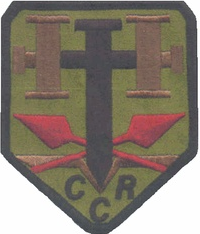
The Christian Patriot movement is a subset within the broader American Patriot movement that promotes and emphasizes Christian nationalism as their core goal and philosophy. Like the larger movement, it promotes a revisionist interpretation of American history in which the federal government has turned against the ideas of liberty and natural rights expressed in the American Revolution.
The Montana Freemen were an anti-government militant Christian Patriot group based outside the town of Jordan, Montana, United States. The members of the group referred to their land as "Justus Township" and had declared their leaders and followers "sovereign citizens" no longer under the authority of any outside government. They became the center of public attention in 1996 when they engaged in a prolonged armed standoff with agents of the Federal Bureau of Investigation (FBI).

The Federal Bureau of Investigation (FBI) is the domestic intelligence and security service of the United States and its principal federal law enforcement agency. Operating under the jurisdiction of the United States Department of Justice, the FBI is also a member of the U.S. Intelligence Community and reports to both the Attorney General and the Director of National Intelligence. A leading U.S. counterterrorism, counterintelligence, and criminal investigative organization, the FBI has jurisdiction over violations of more than 200 categories of federal crimes.
The Montana Freemen surrender after an 81-day standoff with FBI agents.
The Montana Freemen were an anti-government militant Christian Patriot group based outside the town of Jordan, Montana, United States. The members of the group referred to their land as "Justus Township" and had declared their leaders and followers "sovereign citizens" no longer under the authority of any outside government. They became the center of public attention in 1996 when they engaged in a prolonged armed standoff with agents of the Federal Bureau of Investigation (FBI).

The Federal Bureau of Investigation (FBI) is the domestic intelligence and security service of the United States and its principal federal law enforcement agency. Operating under the jurisdiction of the United States Department of Justice, the FBI is also a member of the U.S. Intelligence Community and reports to both the Attorney General and the Director of National Intelligence. A leading U.S. counterterrorism, counterintelligence, and criminal investigative organization, the FBI has jurisdiction over violations of more than 200 categories of federal crimes.
Garuda Indonesia flight 865 crashes during takeoff from Fukuoka Airport, killing three people and injuring 170.
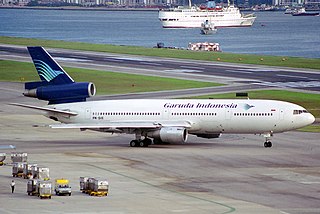
Garuda Indonesia Flight 865 was a scheduled international flight from Fukuoka, Japan, to Jakarta, Indonesia via Bali, Indonesia. On 13 June 1996, Flight 865 crashed on its takeoff from runway 16 at Fukuoka Airport. Three of the 275 on board suffered fatal injuries in the accident.

Fukuoka Airport , formerly known as Itazuke Air Base, is an international and domestic airport located 1.6 NM east of Hakata Station in Hakata-ku, Fukuoka, Japan.
A jury in Anchorage, Alaska, blames recklessness by Exxon and Captain Joseph Hazelwood for the Exxon Valdez disaster, allowing victims of the oil spill to seek $15 billion in damages.
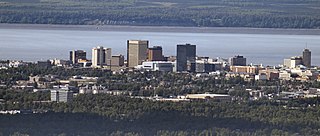
Anchorage is the largest city in the U.S. state of Alaska by population. With a population of 291,247 in 2020, it contains nearly 40% of the state's population. The Anchorage metropolitan area, which includes Anchorage and the neighboring Matanuska-Susitna Borough, had a population of 398,328 in 2020, accounting for more than half the state's population. At 1,706 sq mi (4,420 km2) of land area, the city is the fourth-largest by area in the United States and larger than the smallest state, Rhode Island, which has 1,212 sq mi (3,140 km2).
ExxonMobil Corporation is an American multinational oil and gas corporation headquartered in Irving, Texas. It is the largest direct descendant of John D. Rockefeller's Standard Oil, and was formed on November 30, 1999, by the merger of Exxon and Mobil, both of which are used as retail brands, alongside Esso, for fueling stations and downstream products today. The company is vertically-integrated across the entire oil and gas industry, and within it is also a chemicals division which produces plastic, synthetic rubber, and other chemical products. ExxonMobil is incorporated in New Jersey.
Joseph Jeffrey Hazelwood was an American sailor. He was the captain of Exxon Valdez during her 1989 oil spill. He was accused of being intoxicated which contributed to the disaster, but was cleared of this charge at his 1990 trial after witnesses testified that he was sober around the time of the accident. Hazelwood was convicted of a lesser charge, negligent discharge of oil, fined $50,000, and sentenced to 1,000 hours of community service.

Oriental Nicety, formerly Exxon Valdez, Exxon Mediterranean, SeaRiver Mediterranean, S/R Mediterranean, Mediterranean, and Dong Fang Ocean, was an oil tanker that gained notoriety after running aground in Prince William Sound, spilling its cargo of crude oil into the sea. On March 24, 1989, while owned by the former Exxon Shipping Company, captained by Joseph Hazelwood and First Mate James Kunkel, and bound for Long Beach, California, the vessel ran aground on the Bligh Reef, resulting in the second largest oil spill in United States history. The size of the spill is estimated to have been 40,900 to 120,000 m3. In 1989, the Exxon Valdez oil spill was listed as the 54th largest spill in history.
First day of the June 1990 Mineriad in Romania. At least 240 strikers and students are arrested or killed in the chaos ensuing from the first post-Ceaușescu elections.
The June 1990 Mineriad was the suppression of anti-National Salvation Front (FSN) rioting in Bucharest, Romania by the physical intervention of groups of industrial workers as well as coal miners from the Jiu Valley, brought to Bucharest by the government to counter the rising violence of the protesters. This event occurred several weeks after the FSN achieved a landslide victory in the May 1990 general election, the first elections after the fall of the communist regime of Nicolae Ceaușescu. Many of the miners, factory workers, and other anti-protester groups, fought with the protesters and bystanders. The violence resulted in some deaths and many injuries on both sides of the confrontations. Official figures listed seven fatalities and hundreds of injured, although media estimates of the number killed and injured varied widely and were often much higher.
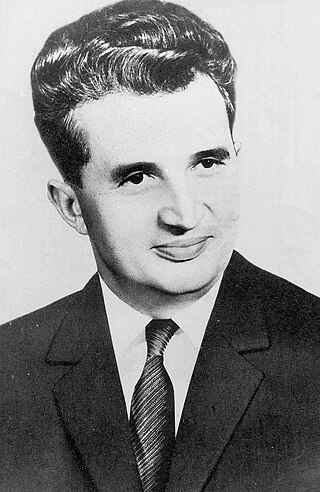
Nicolae Ceaușescu was a Romanian communist politician and dictator. He was the general secretary of the Romanian Communist Party from 1965 to 1989, and the second and last Communist leader of Romania. He was also the country's head of state from 1967, serving as President of the State Council and from 1974 concurrently as President of the Republic, until his overthrow and execution in the Romanian Revolution in December 1989, part of a series of anti-Communist uprisings in Eastern Europe that year.
Pioneer 10 passed the orbit of Neptune, becoming the first man-made object to leave the proximity of the major planets of the Solar System.

Pioneer 10 is an American space probe, launched in 1972 and weighing 260 kilograms, that completed the first mission to the planet Jupiter. Thereafter, Pioneer 10 became the first of five artificial objects to achieve the escape velocity needed to leave the Solar System. This space exploration project was conducted by the NASA Ames Research Center in California. The space probe was manufactured by TRW Inc.

The Solar System is the gravitationally bound system of the Sun and the objects that orbit it. It formed 4.6 billion years ago from the gravitational collapse of a giant interstellar molecular cloud. The vast majority (99.86%) of the system's mass is in the Sun, with most of the remaining mass contained in the planet Jupiter. The four inner system planets—Mercury, Venus, Earth and Mars—are terrestrial planets, being composed primarily of rock and metal. The four giant planets of the outer system are substantially larger and more massive than the terrestrials. The two largest, Jupiter and Saturn, are gas giants, being composed mainly of hydrogen and helium; the next two, Uranus and Neptune, are ice giants, being composed mostly of volatile substances with relatively high melting points compared with hydrogen and helium, such as water, ammonia, and methane. All eight planets have nearly circular orbits that lie near the plane of Earth's orbit, called the ecliptic.
Pioneer 10 becomes the first man-made object to leave the central Solar System when it passes beyond the orbit of Neptune.

Pioneer 10 is an American space probe, launched in 1972 and weighing 260 kilograms, that completed the first mission to the planet Jupiter. Thereafter, Pioneer 10 became the first of five artificial objects to achieve the escape velocity needed to leave the Solar System. This space exploration project was conducted by the NASA Ames Research Center in California. The space probe was manufactured by TRW Inc.

The Solar System is the gravitationally bound system of the Sun and the objects that orbit it. It formed 4.6 billion years ago from the gravitational collapse of a giant interstellar molecular cloud. The vast majority (99.86%) of the system's mass is in the Sun, with most of the remaining mass contained in the planet Jupiter. The four inner system planets—Mercury, Venus, Earth and Mars—are terrestrial planets, being composed primarily of rock and metal. The four giant planets of the outer system are substantially larger and more massive than the terrestrials. The two largest, Jupiter and Saturn, are gas giants, being composed mainly of hydrogen and helium; the next two, Uranus and Neptune, are ice giants, being composed mostly of volatile substances with relatively high melting points compared with hydrogen and helium, such as water, ammonia, and methane. All eight planets have nearly circular orbits that lie near the plane of Earth's orbit, called the ecliptic.

Neptune is the eighth planet from the Sun and the farthest known planet in the Solar System. It is the fourth-largest planet in the Solar System by diameter, the third-most-massive planet, and the densest giant planet. It is 17 times the mass of Earth, and slightly more massive than its near-twin Uranus. Neptune is denser and physically smaller than Uranus because its greater mass causes more gravitational compression of its atmosphere. It is referred to as one of the solar system's two ice giant planets. Being composed primarily of gases and liquids, it has no well-defined "solid surface". The planet orbits the Sun once every 164.8 years at an average distance of 30.1 AU. It is named after the Roman god of the sea and has the astronomical symbol , representing Neptune's trident.
Fahd becomes King of Saudi Arabia upon the death of his brother, Khalid.

Fahd bin Abdulaziz Al Saud was a Saudi Arabian politician who was King and Prime Minister of Saudi Arabia from 13 June 1982 until his death in 2005. Prior to his ascension, he was Crown Prince of Saudi Arabia from 25 March 1975 to 13 June 1982. He was the eighth son of King Abdulaziz, the founder of modern Saudi Arabia.

The king of Saudi Arabia is the monarchial head of state and ruler of Saudi Arabia who holds absolute power. He is the head of the Saudi Arabian royal family, the House of Saud. The king is called the "Custodian of the Two Holy Mosques", a title that signifies Saudi Arabia's jurisdiction over the mosques of Masjid al Haram in Mecca and Al-Masjid an-Nabawi in Medina. The title has been used many times through the history of Islam. The first Saudi monarch to use the title was King Faisal, however, King Khalid did not use the title after him. In 1986, King Fahd replaced "His Majesty" with the title of Custodian of the Two Holy Mosques, and it has been ever since used by both King Abdullah and King Salman bin Abdulaziz.

Khalid bin Abdulaziz Al Saud was a Saudi Arabian statesman and politician who served as King and Prime Minister of Saudi Arabia from 25 March 1975 to his death in 1982. Prior to his ascension, he was Crown Prince of Saudi Arabia from 29 March 1965 to 25 March 1975. He was the fifth son of King Abdulaziz, the founder of modern Saudi Arabia. He was the third of Abdulaziz's six sons who have been kings.
Battles of Tumbledown and Wireless Ridge, during the Falklands War.
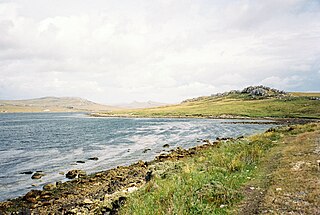
The Battle of Mount Tumbledown was an engagement during the Falklands War. The engagement was an attack by the British Army and the Royal Marines on the heights over-looking Stanley, the Falkland Islands capital. Mount Tumbledown, Mount William and Sapper Hill lie west of the capital. Due to their proximity to the capital, they were of strategic importance during the 1982 War. They were held by the Argentine 5th Naval Infantry Battalion, a reinforced, cold weather trained and equipped, Marine battalion.
The Battle of Wireless Ridge was an engagement of the Falklands War which took place on the night from 13 to 14 June 1982, between British and Argentine forces during the advance towards the Argentine-occupied capital of the Falkland Islands, Port Stanley.

The Falklands War was a ten-week undeclared war between Argentina and the United Kingdom in 1982 over two British dependent territories in the South Atlantic: the Falkland Islands and its territorial dependency, South Georgia and the South Sandwich Islands.
English teenager Marcus Sarjeant fired six blanks at Queen Elizabeth II as she rode down The Mall to the Trooping the Colour ceremony.
Marcus Simon Sarjeant is a British man who fired six blank shots at Queen Elizabeth II as she rode down The Mall to the Trooping the Colour ceremony in London in 1981.

A blank is a firearm cartridge that, when fired, does not shoot a projectile like a bullet or pellet, but generates a muzzle flash and an explosive sound like a normal gunshot would. Firearms may need to be modified to allow a blank to cycle the action, and the shooter experiences less recoil with a blank than with a live round. Blanks are often used in prop guns for shooting simulations that have no need for ballistic results, but still demand light and sound effects, such as in historical reenactments, special effects for theatre, movie and television productions, combat training, for signaling, and cowboy mounted shooting. Specialised blank cartridges are also used for their propellant force in fields as varied as construction, shooting sports, and fishing and general recreation.

Elizabeth II was Queen of the United Kingdom and other Commonwealth realms from 6 February 1952 until her death in 2022. She was queen regnant of 32 sovereign states during her lifetime, and was head of state of 15 realms at the time of her death. Her reign of 70 years and 214 days was the longest of any British monarch and the longest verified reign of any female monarch in history.

The Mall is a road in the City of Westminster, central London, between Buckingham Palace at its western end and Trafalgar Square via Admiralty Arch to the east. Near the east end at Trafalgar Square and Whitehall it is met by Horse Guards Road and Spring Gardens where the Metropolitan Board of Works and London County Council were once based. It is closed to traffic on Saturdays, Sundays, public holidays and on ceremonial occasions.
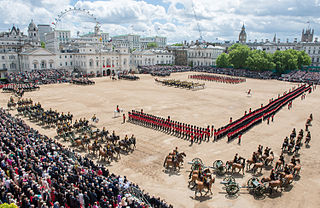
Trooping the Colour is a ceremony performed every year in London, United Kingdom, by regiments of the British Army. Similar events are held in other countries of the Commonwealth. Trooping the Colour has been a tradition of British infantry regiments since the 17th century, and since 1748 has marked the official birthday of the British sovereign, although its roots go back much earlier.
At the Trooping the Colour ceremony in London, a teenager, Marcus Sarjeant, fires six blank shots at Queen Elizabeth II.

Trooping the Colour is a ceremony performed every year in London, United Kingdom, by regiments of the British Army. Similar events are held in other countries of the Commonwealth. Trooping the Colour has been a tradition of British infantry regiments since the 17th century, and since 1748 has marked the official birthday of the British sovereign, although its roots go back much earlier.
Marcus Simon Sarjeant is a British man who fired six blank shots at Queen Elizabeth II as she rode down The Mall to the Trooping the Colour ceremony in London in 1981.

Elizabeth II was Queen of the United Kingdom and other Commonwealth realms from 6 February 1952 until her death in 2022. She was queen regnant of 32 sovereign states during her lifetime, and was head of state of 15 realms at the time of her death. Her reign of 70 years and 214 days was the longest of any British monarch and the longest verified reign of any female monarch in history.
Convicted Martin Luther King Jr. assassin James Earl Ray is recaptured after escaping from prison three days before.

Martin Luther King Jr. was an American Baptist minister and activist, one of the most prominent leaders in the civil rights movement from 1955 until his assassination in 1968. An African American church leader and the son of early civil rights activist and minister Martin Luther King Sr., King advanced civil rights for people of color in the United States through nonviolence and civil disobedience. Inspired by his Christian beliefs and the nonviolent activism of Mahatma Gandhi, he led targeted, nonviolent resistance against Jim Crow laws and other forms of discrimination.

James Earl Ray was an American fugitive convicted for assassinating Martin Luther King Jr. at the Lorraine Motel in Memphis, Tennessee, on April 4, 1968. After this Ray was on the run and was captured in the UK. Ray was convicted in 1969 after entering a guilty plea—thus forgoing a jury trial and the possibility of a death sentence—and was sentenced to 99 years of imprisonment.
The Uphaar Cinema Fire took place at Green Park, Delhi, resulting in the deaths of 59 people and seriously injured 103 others.

The Uphaar Cinema fire was one of the worst fire tragedies in recent Indian history. The fire started on Friday, 13 June 1997 at Uphaar Cinema in Green Park, Delhi during the three o'clock screening of the movie Border. Fifty-nine people were trapped inside and died of asphyxiation, while 103 were seriously injured in the resulting stampede (suffocation).

Green Park is an upscale affluent neighborhood in South Delhi, India. The locality is divided into two parts i.e. Main and Extension. The neighbourhood registered a 4.4% growth in residential sales and was featured alongside Greater Kailash, Defence Colony, Vasant Vihar and Anand Niketan in the 2019 edition of Knight Frank 's quarterly report on prime luxury residential properties in various megacities around the globe. Property rates have always been high in this colony due to the numerous facilities available. Builder floors and independent villas cost anywhere between INR 6-25 crores in this colony. Rental rates are also very high due to which this residential area is among the most expensive pin codes of New Delhi.

Delhi, officially the National Capital Territory (NCT) of Delhi, is a city and a union territory of India containing New Delhi, the capital of India. Straddling the Yamuna river, primarily its western or right bank, Delhi shares borders with the state of Uttar Pradesh in the east and with the state of Haryana in the remaining directions. The NCT covers an area of 1,484 square kilometres (573 sq mi). According to the 2011 census, Delhi's city proper population was over 11 million, while the NCT's population was about 16.8 million. Delhi's urban agglomeration, which includes the satellite cities of Ghaziabad, Faridabad, Gurgaon and Noida in an area known as the National Capital Region (NCR), has an estimated population of over 28 million, making it the largest metropolitan area in India and the second-largest in the world.
The Los Angeles Dodgers started Steve Garvey, Davey Lopes, Ron Cey, and Bill Russell in the infield, beginning a Major League Baseball-record 8½ year run for 4 people designated as starters for those positions.

The Los Angeles Dodgers are an American professional baseball team based in Los Angeles. The Dodgers compete in Major League Baseball (MLB) as a member club of the National League (NL) West division. Established in 1883 in the city of Brooklyn, which later became a borough of New York City, the team joined the NL in 1890 as the Brooklyn Bridegrooms and assumed several different monikers thereafter before finally settling on the name Dodgers in 1932. From the 1940s through the mid-1950s, the Dodgers developed a fierce cross-town rivalry with the New York Yankees as the two clubs faced each other in the World Series seven times, with the Dodgers losing the first five matchups before defeating them to win the franchise's first title in 1955. It was also during this period that the Dodgers made history by breaking the baseball color line in 1947 with the debut of Jackie Robinson, the first African-American to play in the Major Leagues since 1884. Another major milestone was reached in 1956 when Don Newcombe became the first player ever to win both the Cy Young Award and the NL MVP in the same season.

From 1973 to 1981, the starting infield of the Los Angeles Dodgers consisted of four players: Steve Garvey at first base, Davey Lopes at second, Ron Cey at third, and Bill Russell at shortstop. Beginning on June 13, 1973, against the Philadelphia Phillies, and lasting until Game 6 of the 1981 World Series, the quartet set a Major League Baseball record for the same four players designated as starters for those positions.

A baseball field, also called a ball field or baseball diamond, is the field upon which the game of baseball is played. The term can also be used as a metonym for a baseball park. The term sandlot is sometimes used, although this usually refers to less organized venues for activities like sandlot ball.

Major League Baseball (MLB) is a professional baseball organization and the oldest major professional sports league in the world. MLB is composed of 30 total teams, divided equally between the National League (NL) and the American League (AL), with 29 in the United States and 1 in Canada. The NL and AL were formed in 1876 and 1901, respectively. Beginning in 1903, the two leagues signed the National Agreement and cooperated but remained legally separate entities until 2000, when they merged into a single organization led by the Commissioner of Baseball. MLB is headquartered in Midtown Manhattan. It is also included as one of the major professional sports leagues in the United States and Canada.
In a game versus the Philadelphia Phillies at Veterans Stadium, Steve Garvey, Davey Lopes, Ron Cey and Bill Russell play together as an infield for the first time, going on to set the record of staying together for .mw-parser-output .frac{white-space:nowrap}.mw-parser-output .frac .num,.mw-parser-output .frac .den{font-size:80%;line-height:0;vertical-align:super}.mw-parser-output .frac .den{vertical-align:sub}.mw-parser-output .sr-only{border:0;clip:rect(0,0,0,0);height:1px;margin:-1px;overflow:hidden;padding:0;position:absolute;width:1px}8+1⁄2 years.

The Philadelphia Phillies are an American professional baseball team based in Philadelphia. They compete in Major League Baseball (MLB) as a member of the National League (NL) East division. Since 2004, the team's home stadium has been Citizens Bank Park, located in the South Philadelphia Sports Complex. Founded in 1883, the Philadelphia Phillies are the oldest continuous same-name, same-city franchise in all of American professional sports.

Veterans Stadium was a multi-purpose stadium in Philadelphia, Pennsylvania, United States, at the northeast corner of Broad Street and Pattison Avenue, part of the South Philadelphia Sports Complex. The seating capacities were 65,358 for football, and 56,371 for baseball.

From 1973 to 1981, the starting infield of the Los Angeles Dodgers consisted of four players: Steve Garvey at first base, Davey Lopes at second, Ron Cey at third, and Bill Russell at shortstop. Beginning on June 13, 1973, against the Philadelphia Phillies, and lasting until Game 6 of the 1981 World Series, the quartet set a Major League Baseball record for the same four players designated as starters for those positions.
The New York Times published the first excerpts from the Pentagon Papers, a 7,000-page classified Department of Defense history of the United States' political and military involvement in the Vietnam War.

The New York Times is an American daily newspaper based in New York City with a worldwide readership reported in 2020 to be a declining 840,000 paid print subscribers, and a growing 6 million paid digital subscribers. It also is a producer of popular podcasts such as the Daily. Founded in 1851 by Henry Jarvis Raymond and George Jones, it was initially published by Raymond, Jones & Company. The Times has won 132 Pulitzer Prizes, the most of any newspaper, and has long been regarded as a national "newspaper of record". For print it is ranked 18th in the world by circulation and 3rd in the U.S.

The Pentagon Papers, officially titled Report of the Office of the Secretary of Defense Vietnam Task Force, is a United States Department of Defense history of the United States' political and military involvement in Vietnam from 1945 to 1967. Released by Daniel Ellsberg, who had worked on the study, they were first brought to the attention of the public on the front page of The New York Times in 1971. A 1996 article in The New York Times said that the Pentagon Papers had demonstrated, among other things, that the Johnson Administration had "systematically lied, not only to the public but also to Congress."

The United States Department of Defense is an executive branch department of the federal government charged with coordinating and supervising all agencies and functions of the government directly related to national security and the United States Armed Forces. The DoD is the largest employer in the world, with over 1.34 million active-duty service members as of June 2022. The DoD also maintains over 778,000 National Guard and reservists, and over 747,000 civilians bringing the total to over 2.87 million employees. Headquartered at the Pentagon in Arlington, Virginia, just outside Washington, D.C., the DoD's stated mission is to provide "the military forces needed to deter war and ensure our nation's security".

The Vietnam War was a conflict in Vietnam, Laos, and Cambodia from 1 November 1955 to the fall of Saigon on 30 April 1975. It was the second of the Indochina Wars and was officially fought between North Vietnam and South Vietnam. The north was supported by the Soviet Union, China, and other communist states, while the south was supported by the United States and other anti-communist allies. The war is widely considered to be a Cold War-era proxy war. It lasted almost 20 years, with direct U.S. involvement ending in 1973. The conflict also spilled over into neighboring states, exacerbating the Laotian Civil War and the Cambodian Civil War, which ended with all three countries becoming communist states by 1975.
Vietnam War: The New York Times begins publication of the Pentagon Papers.

The Vietnam War was a conflict in Vietnam, Laos, and Cambodia from 1 November 1955 to the fall of Saigon on 30 April 1975. It was the second of the Indochina Wars and was officially fought between North Vietnam and South Vietnam. The north was supported by the Soviet Union, China, and other communist states, while the south was supported by the United States and other anti-communist allies. The war is widely considered to be a Cold War-era proxy war. It lasted almost 20 years, with direct U.S. involvement ending in 1973. The conflict also spilled over into neighboring states, exacerbating the Laotian Civil War and the Cambodian Civil War, which ended with all three countries becoming communist states by 1975.

The New York Times is an American daily newspaper based in New York City with a worldwide readership reported in 2020 to be a declining 840,000 paid print subscribers, and a growing 6 million paid digital subscribers. It also is a producer of popular podcasts such as the Daily. Founded in 1851 by Henry Jarvis Raymond and George Jones, it was initially published by Raymond, Jones & Company. The Times has won 132 Pulitzer Prizes, the most of any newspaper, and has long been regarded as a national "newspaper of record". For print it is ranked 18th in the world by circulation and 3rd in the U.S.

The Pentagon Papers, officially titled Report of the Office of the Secretary of Defense Vietnam Task Force, is a United States Department of Defense history of the United States' political and military involvement in Vietnam from 1945 to 1967. Released by Daniel Ellsberg, who had worked on the study, they were first brought to the attention of the public on the front page of The New York Times in 1971. A 1996 article in The New York Times said that the Pentagon Papers had demonstrated, among other things, that the Johnson Administration had "systematically lied, not only to the public but also to Congress."
"The Long and Winding Road" became the Beatles' twentieth and final number-one single on the Billboard Hot 100 chart.

"The Long and Winding Road" is a song by the English rock band the Beatles from their 1970 album Let It Be. It was written by Paul McCartney and credited to Lennon–McCartney. When issued as a single in May 1970, a month after the Beatles' break-up, it became the group's 20th and last number-one hit on the Billboard Hot 100 chart in the United States.

The Beatles were an English rock band, formed in Liverpool in 1960, that comprised John Lennon, Paul McCartney, George Harrison and Ringo Starr. They are regarded as the most influential band of all time and were integral to the development of 1960s counterculture and popular music's recognition as an art form. Rooted in skiffle, beat and 1950s rock 'n' roll, their sound incorporated elements of classical music and traditional pop in innovative ways; the band also explored music styles ranging from folk and Indian music to psychedelia and hard rock. As pioneers in recording, songwriting and artistic presentation, the Beatles revolutionised many aspects of the music industry and were often publicised as leaders of the era's youth and sociocultural movements.
The Billboard Hot 100 is the music industry standard record chart in the United States for songs, published weekly by Billboard magazine. Chart rankings are based on sales, radio play, and online streaming in the United States.
Governor of Texas Preston Smith signed a law converting a research arm of Texas Instruments into the University of Texas at Dallas.

Preston Earnest Smith was an American entrepreneur and politician who served as the 40th governor of Texas from 1969 to 1973, who previously served as the lieutenant governor from 1963 to 1969.
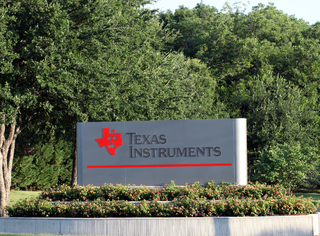
Texas Instruments Incorporated (TI) is an American technology company headquartered in Dallas, Texas, that designs and manufactures semiconductors and various integrated circuits, which it sells to electronics designers and manufacturers globally. It is one of the top 10 semiconductor companies worldwide based on sales volume. The company's focus is on developing analog chips and embedded processors, which account for more than 80% of its revenue. TI also produces TI digital light processing technology and education technology products including calculators, microcontrollers, and multi-core processors. The company holds 45,000 patents worldwide as of 2016.
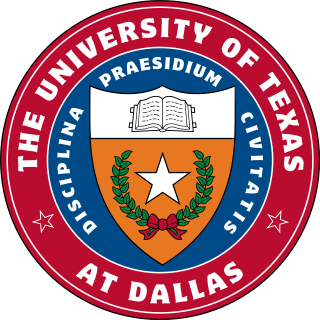
The University of Texas at Dallas is a public research university in Richardson, Texas. It is one of the largest public universities in the Dallas area and the northernmost institution of the University of Texas system. It was initially founded in 1961 as a private research arm of Texas Instruments.
U.S. President Lyndon B. Johnson nominates Solicitor-General Thurgood Marshall to become the first black justice on the U.S. Supreme Court.

Lyndon Baines Johnson, often referred to by his initials LBJ, was an American politician who served as the 36th president of the United States from 1963 to 1969. He had previously served as the 37th vice president from 1961 to 1963 under President John F. Kennedy, and was sworn in shortly after Kennedy's assassination. A Democrat from Texas, Johnson also served as a U.S. representative, U.S. senator and the Senate's majority leader. He holds the distinction of being one of the few presidents who served in all elected offices at the federal level.

Thurgood Marshall was an American civil rights lawyer and jurist who served as an associate justice of the Supreme Court of the United States from 1967 until 1991. He was the Supreme Court's first African-American justice. Prior to his judicial service, he was an attorney who fought for civil rights, leading the NAACP Legal Defense and Educational Fund. Marshall coordinated the assault on racial segregation in schools. He won 29 of the 32 civil rights cases he argued before the Supreme Court, culminating in the Court's landmark 1954 decision in Brown v. Board of Education, which rejected the separate but equal doctrine and held segregation in public education to be unconstitutional. President Lyndon B. Johnson appointed Marshall to the Supreme Court in 1967. A staunch liberal, he frequently dissented as the Court became increasingly conservative.

The Supreme Court of the United States (SCOTUS) is the highest court in the federal judiciary of the United States. It has ultimate appellate jurisdiction over all U.S. federal court cases, and over state court cases that involve a point of federal law. It also has original jurisdiction over a narrow range of cases, specifically "all Cases affecting Ambassadors, other public Ministers and Consuls, and those in which a State shall be Party." The court holds the power of judicial review, the ability to invalidate a statute for violating a provision of the Constitution. It is also able to strike down presidential directives for violating either the Constitution or statutory law. However, it may act only within the context of a case in an area of law over which it has jurisdiction. The court may decide cases having political overtones, but has ruled that it does not have power to decide non-justiciable political questions.
The United States Supreme Court rules in Miranda v. Arizona that the police must inform suspects of their Fifth Amendment rights before questioning them (colloquially known as "Mirandizing").

The Supreme Court of the United States (SCOTUS) is the highest court in the federal judiciary of the United States. It has ultimate appellate jurisdiction over all U.S. federal court cases, and over state court cases that involve a point of federal law. It also has original jurisdiction over a narrow range of cases, specifically "all Cases affecting Ambassadors, other public Ministers and Consuls, and those in which a State shall be Party." The court holds the power of judicial review, the ability to invalidate a statute for violating a provision of the Constitution. It is also able to strike down presidential directives for violating either the Constitution or statutory law. However, it may act only within the context of a case in an area of law over which it has jurisdiction. The court may decide cases having political overtones, but has ruled that it does not have power to decide non-justiciable political questions.
Miranda v. Arizona, 384 U.S. 436 (1966), was a landmark decision of the U.S. Supreme Court in which the Court ruled that the Fifth Amendment to the U.S. Constitution restricts prosecutors from using a person's statements made in response to interrogation in police custody as evidence at their trial unless they can show that the person was informed of the right to consult with an attorney before and during questioning, and of the right against self-incrimination before police questioning, and that the defendant not only understood these rights, but voluntarily waived them.

The Fifth Amendment (Amendment V) to the United States Constitution addresses criminal procedure and other aspects of the Constitution. It was ratified, along with nine other articles, in 1791 as part of the Bill of Rights. The Fifth Amendment applies to every level of the government, including the federal, state, and local levels, in regard to a US citizen or resident of the US. The Supreme Court furthered the protections of this amendment through the Due Process Clause of the Fourteenth Amendment.

In the United States, the Miranda warning is a type of notification customarily given by police to criminal suspects in police custody advising them of their right to silence and, in effect, protection from self-incrimination; that is, their right to refuse to answer questions or provide information to law enforcement or other officials. These rights are often referred to as Miranda rights. The purpose of such notification is to preserve the admissibility of their statements made during custodial interrogation in later criminal proceedings. The idea came from law professor Yale Kamisar, who subsequently was dubbed "the father of Miranda."
Soviet geologists discovered a diamond-bearing deposit in Eastern Siberia, leading to the construction of the Mir mine, the first diamond mine in the USSR and the second-largest excavated hole in the world.

Diamond is a solid form of the element carbon with its atoms arranged in a crystal structure called diamond cubic. Another solid form of carbon known as graphite is the chemically stable form of carbon at room temperature and pressure, but diamond is metastable and converts to it at a negligible rate under those conditions. Diamond has the highest hardness and thermal conductivity of any natural material, properties that are used in major industrial applications such as cutting and polishing tools. They are also the reason that diamond anvil cells can subject materials to pressures found deep in the Earth.

Siberia is an extensive geographical region, constituting all of North Asia, from the Ural Mountains in the west to the Pacific Ocean in the east. It has been a part of Russia since the latter half of the 16th century, after the Russians conquered lands east of the Ural Mountains. Siberia is vast and sparsely populated, covering an area of over 13.1 million square kilometres (5,100,000 sq mi), but home to merely one-fifth of Russia's population. Novosibirsk and Omsk are the largest cities in the region.

The Mir mine, also called the Mirny mine, is an open pit diamond mine located in Mirny, Sakha Republic, in the Siberian region of eastern Russia. The mine is more than 525 meters deep, has a diameter of 1,200 m, and is one of the largest excavated holes in the world.
Soviet aircraft shot down a Swedish military plane carrying out signals-intelligence gathering operations, followed three days later by the shootdown of a second plane searching for the first one.

The Catalina affair was a military confrontation and Cold War-era diplomatic crisis in June 1952, in which Soviet Air Force fighter jets shot down two Swedish aircraft over international waters in the Baltic Sea.

Signals intelligence (SIGINT) is intelligence-gathering by interception of signals, whether communications between people or from electronic signals not directly used in communication. Signals intelligence is a subset of intelligence collection management. As classified and sensitive information is usually encrypted, signals intelligence in turn involves the use of cryptanalysis to decipher the messages. Traffic analysis—the study of who is signaling whom and in what quantity—is also used to integrate information again.
Catalina affair: A Swedish Douglas DC-3 is shot down by a Soviet MiG-15 fighter.

The Catalina affair was a military confrontation and Cold War-era diplomatic crisis in June 1952, in which Soviet Air Force fighter jets shot down two Swedish aircraft over international waters in the Baltic Sea.

The Douglas DC-3 is a propeller-driven airliner manufactured by Douglas Aircraft Company, which had a lasting effect on the airline industry in the 1930s to 1940s and World War II. It was developed as a larger, improved 14-bed sleeper version of the Douglas DC-2. It is a low-wing metal monoplane with conventional landing gear, powered by two radial piston engines of 1,000–1,200 hp (750–890 kW). The DC-3 has a cruising speed of 207 mph (333 km/h), a capacity of 21 to 32 passengers or 6,000 lbs (2,700 kg) of cargo, and a range of 1,500 mi (2,400 km), and can operate from short runways.

The Mikoyan-Gurevich MiG-15 is a jet fighter aircraft developed by Mikoyan-Gurevich for the Soviet Union. The MiG-15 was one of the first successful jet fighters to incorporate swept wings to achieve high transonic speeds. In aerial combat during the Korean War, it outclassed straight-winged jet day fighters, which were largely relegated to ground-attack roles. In response to the MiG-15’s appearance and in order to counter it, the United States Air Force rushed the North American F-86 Sabre to Korea.
Second World War: At the Battle of Villers-Bocage, German tank commander Michael Wittmann destroyed around 30 Allied vehicles in less than 15 minutes.

World War II or the Second World War, often abbreviated as WWII or WW2, was a world war that lasted from 1939 to 1945. It involved the vast majority of the world's countries—including all of the great powers—forming two opposing military alliances: the Allies and the Axis powers. World War II was a total war that directly involved more than 100 million personnel from more than 30 countries.

The Battle of Villers-Bocage took place during the Second World War on 13 June 1944, one week after the Normandy Landings, which had begun the Western Allies' conquest of German-occupied France. The battle was the result of a British attempt to improve their position by exploiting a gap in the German defences west of the city of Caen. After one day of fighting in and around the small town of Villers-Bocage and a second day defending a position outside the town, the British force retreated.

Michael Wittmann was a German Waffen-SS tank commander during the Second World War. He is known for his ambush of elements of the British 7th Armored Division during the Battle of Villers-Bocage on 13 June 1944. While in command of a Tiger I tank, Wittmann destroyed up to 14 tanks, 15 personnel carriers and two anti-tank guns within 15 minutes for the loss of his own tank. The news was disseminated by Nazi propaganda and added to Wittmann's reputation.

The Allies, formally referred to as the United Nations from 1942, were an international military coalition formed during the Second World War (1939–1945) to oppose the Axis powers, led by Nazi Germany, Imperial Japan, and Fascist Italy. Its principal members by 1941 were the United Kingdom, United States, Soviet Union, and China.
World War II: The Battle of Villers-Bocage: German tank ace Michael Wittmann ambushes elements of the British 7th Armoured Division, destroying up to fourteen tanks, fifteen personnel carriers and two anti-tank guns in a Tiger I tank.

World War II or the Second World War, often abbreviated as WWII or WW2, was a world war that lasted from 1939 to 1945. It involved the vast majority of the world's countries—including all of the great powers—forming two opposing military alliances: the Allies and the Axis powers. World War II was a total war that directly involved more than 100 million personnel from more than 30 countries.

The Battle of Villers-Bocage took place during the Second World War on 13 June 1944, one week after the Normandy Landings, which had begun the Western Allies' conquest of German-occupied France. The battle was the result of a British attempt to improve their position by exploiting a gap in the German defences west of the city of Caen. After one day of fighting in and around the small town of Villers-Bocage and a second day defending a position outside the town, the British force retreated.

Michael Wittmann was a German Waffen-SS tank commander during the Second World War. He is known for his ambush of elements of the British 7th Armored Division during the Battle of Villers-Bocage on 13 June 1944. While in command of a Tiger I tank, Wittmann destroyed up to 14 tanks, 15 personnel carriers and two anti-tank guns within 15 minutes for the loss of his own tank. The news was disseminated by Nazi propaganda and added to Wittmann's reputation.

The 7th Armoured Division was an armoured division of the British Army that saw distinguished active service during the Second World War, where its exploits in the Western Desert Campaign gained it the Desert Rats nickname.

The Tiger I was a German heavy tank of World War II that operated beginning in 1942 in Africa and in the Soviet Union, usually in independent heavy tank battalions. It gave the German Army its first armoured fighting vehicle that mounted the 8.8 cm KwK 36 gun. 1,347 were built between August 1942 and August 1944. After August 1944, production of the Tiger I was phased out in favour of the Tiger II.
World War II: German combat elements, reinforced by the 17th SS Panzergrenadier Division, launch a counterattack on American forces near Carentan.

The 17th SS Panzergrenadier Division "Götz von Berlichingen" was a German Waffen-SS division that saw action on the Western Front during World War II.

The Battle of Bloody Gulch took place around the Manoir de Donville or Hill 30, approximately 1 mile (1.6 km) southwest of Carentan in Normandy, France, on June 13, 1944.

Carentan is a small rural town near the north-eastern base of the French Cotentin Peninsula in Normandy in north-western France, with a population of about 6,000. It is a former commune in the Manche department. On 1 January 2016, it was merged into the new commune of Carentan-les-Marais. The town was a strategic early goal of the World War II landings as capturing the town was necessary to link the lodgements at Utah and Omaha beaches which were divided by the Douve river estuary. The town was also needed as an intermediate staging position for the capture of the cities of Cherbourg and Octeville, with the critically important port facilities in Cherbourg.
World War II: Germany launches the first V1 Flying Bomb attack on England. Only four of the eleven bombs strike their targets.

The V-1 flying bomb was an early cruise missile. Its official Reich Aviation Ministry (RLM) designation was Fi 103. It was also known to the Allies as the buzz bomb or doodlebug and in Germany as Kirschkern or Maikäfer (maybug).
In one of the biggest upsets in championship boxing, the underdog James J. Braddock defeated Max Baer to become the heavyweight champion of the world.

Boxing is a combat sport in which two people, usually wearing protective gloves and other protective equipment such as hand wraps and mouthguards, throw punches at each other for a predetermined amount of time in a boxing ring.
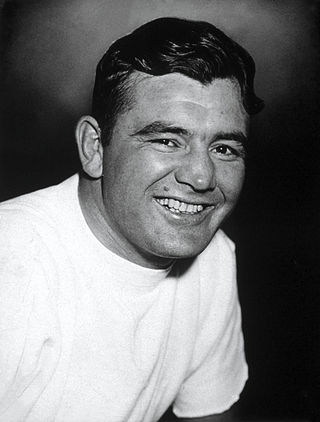
James Walter Braddock was an American boxer who was the world heavyweight champion from 1935 to 1937.

Maximilian Adelbert Baer was an American professional boxer who was the world heavyweight champion from June 14, 1934, to June 13, 1935. Two of his fights were rated Fight of the Year by The Ring magazine. Baer was also a boxing referee, and had occasional roles on film or television. He was the brother of heavyweight boxing contender Buddy Baer and father of actor Max Baer Jr. Baer is rated #22 on The Ring magazine's list of 100 greatest punchers of all time.

At boxing's beginning, the heavyweight division had no weight limit, and historically the weight class has gone with vague or no definition. During the 19th century many heavyweights were 170 pounds or less, though others weighed considerably more. John L. Sullivan was the first widely recognized champion under Marquess of Queensberry rules. Known as the "Boston Strong Boy," Sullivan weighed around 200 pounds when in shape, and helped transition the sport from its bare-knuckle era. Sullivan would be defeated for the title by "Gentleman" Jim Corbett over 21 rounds on September 7, 1892, the first heavyweight titleholder solely under Queensberry rules.
Aviator Charles Lindbergh receives a ticker tape parade up 5th Avenue in New York City.

Charles Augustus Lindbergh was an American aviator, military officer, author, inventor, and activist. On May 20–21, 1927, Lindbergh made the first nonstop flight from New York City to Paris, a distance of 3,600 miles (5,800 km), flying alone for 33.5 hours. His aircraft, the Spirit of St. Louis, was designed and built by the Ryan Airline Company specifically to compete for the Orteig Prize for the first flight between the two cities. Although not the first transatlantic flight, it was the first solo transatlantic flight, the first nonstop transatlantic flight between two major city hubs, and the longest by over 1,900 miles (3,000 km). It is known as one of the most consequential flights in history and ushered in a new era of air transportation between parts of the globe.

A ticker-tape parade is a parade event held in an urban setting, characterized by large amounts of shredded paper thrown onto the parade route from the surrounding buildings, creating a celebratory flurry of paper. Originally, actual ticker tape was used, but now mostly confetti is substituted.
World War I: The deadliest German air raid on London of the war is carried out by Gotha G.IV bombers and results in 162 deaths, including 46 children, and 432 injuries.

World War I or the First World War, often abbreviated as WWI or WW1, and referred to by some Anglophone authors as the "Great War" or the "War to End All Wars", was a global conflict which lasted from 1914 to 1918, and is considered one of the deadliest conflicts in history. Belligerents included much of Europe, the Russian Empire, the United States, and the Ottoman Empire, with fighting occurring throughout Europe, the Middle East, Africa, the Pacific, and parts of Asia. An estimated 9 million soldiers were killed in combat, plus another 23 million wounded, while 5 million civilians died as a result of military action, hunger, and disease. Millions more died in genocides within the Ottoman Empire and in the 1918 influenza pandemic, which was exacerbated by the movement of combatants during the war.
The best-known German air campaign of the First World War was carried out against Britain. After several attacks by seaplanes, the main campaign began in January 1915 with airships. Until the Armistice the Marine-Fliegerabteilung and Die Fliegertruppen des deutschen Kaiserreiches mounted over fifty bombing raids. The raids were generally referred to in Britain as Zeppelin raids but Schütte-Lanz airships also being used. The Zeppelin Company was much better known and was responsible for producing the majority of the airships.

The Gotha G.IV was a heavy bomber used by the Luftstreitkräfte during World War I. It was the first mass-produced large airplane.
Yukon Territory is formed, with Dawson chosen as its capital.

Yukon is the smallest and westernmost of Canada's three territories. It also is the second-least populated province or territory in Canada, with a population of 43,744 as of March 2022. Whitehorse, the territorial capital, is the largest settlement in any of the three territories.

Dawson City, officially the City of Dawson, is a town in the Canadian territory of Yukon. It is inseparably linked to the Klondike Gold Rush (1896–99). Its population was 1,577 as of the 2021 census, making it the second-largest town in Yukon.
Émile Levassor wins the world's first real automobile race. Levassor completed the 732-mile course, from Paris to Bordeaux and back, in just under 49 hours, at a then-impressive speed of about 15 miles per hour.

Émile Constant Levassor was a French engineer and a pioneer of the automobile industry and car racing in France.
Grover Cleveland notices a rough spot in his mouth and on July 1 undergoes secret, successful surgery to remove a large, cancerous portion of his jaw; the operation was not revealed to the public until 1917, nine years after the president's death.

Stephen Grover Cleveland was an American lawyer and politician who served as the 22nd and 24th president of the United States from 1885 to 1889 and from 1893 to 1897. Cleveland is the only president in American history to serve two non-consecutive terms in office. He won the popular vote for three presidential elections—in 1884, 1888, and 1892—and was one of two Democrats to be elected president during the era of Republican presidential domination dating from 1861 to 1933.
A fire devastates much of Vancouver, British Columbia.

The Great Vancouver Fire destroyed most of the newly incorporated city of Vancouver, British Columbia, Canada, on June 13, 1886. It started as two land clearing fires to the west of the city. The first fire was further away from the city and was clearing land for the roundhouse of the terminus of the Canadian Pacific Railway. The second fire was clearing land to extend the city to the west. The Great Fire occurred shortly after the township of Granville was incorporated into the City of Vancouver.
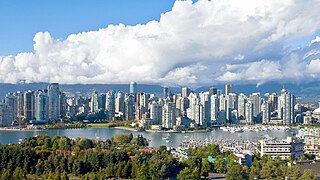
Vancouver is a major city in western Canada, located in the Lower Mainland region of British Columbia. As the most populous city in the province, the 2021 census recorded 662,248 people in the city, up from 631,486 in 2016. The Greater Vancouver area had a population of 2.6 million in 2021, making it the third-largest metropolitan area in Canada. Greater Vancouver, along with the Fraser Valley, comprises the Lower Mainland with a regional population of over 3 million. Vancouver has the highest population density in Canada, with over 5,700 people per square kilometre, and fourth highest in North America.

British Columbia is the westernmost province of Canada, situated between the Pacific Ocean and the Rocky Mountains. It has a diverse geography, with rugged landscapes that include rocky coastlines, sandy beaches, forests, lakes, mountains, inland deserts and grassy plains, and borders the province of Alberta to the east and the Yukon and Northwest Territories to the north. With an estimated population of 5.3 million as of 2022, it is Canada's third-most populous province. The capital of British Columbia is Victoria and its largest city is Vancouver. Vancouver is the third-largest metropolitan area in Canada; the 2021 census recorded 2.6 million people in Metro Vancouver.
The Jeannette expedition to reach the North Pole from the Pacific Ocean via the Bering Strait came to an end when the USS Jeannette (pictured) was finally crushed and sank after having been trapped in ice for almost two years.
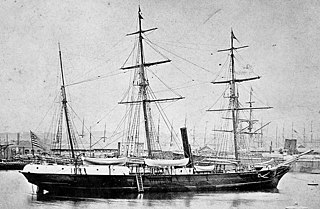
The Jeannette expedition of 1879–1881, officially called the U.S. Arctic Expedition, was an attempt led by George W. De Long to reach the North Pole by pioneering a route from the Pacific Ocean through the Bering Strait. The premise was that a temperate current, the Kuro Siwo, flowed northwards into the strait, providing a gateway to the Open Polar Sea and thus to the pole.
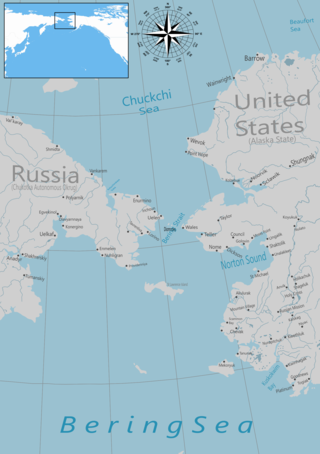
The Bering Strait is a strait between the Pacific and Arctic oceans, separating the Chukchi Peninsula of the Russian Far East from the Seward Peninsula of Alaska. The present Russia-United States maritime boundary is at 168° 58' 37" W longitude, slightly south of the Arctic Circle at about 65° 40' N latitude. The Strait is named after Vitus Bering, a Danish explorer in the service of the Russian Empire.

USS Jeannette was a naval exploration vessel which, commanded by George W. De Long, undertook the Jeannette expedition of 1879–1881 to the Arctic. After being trapped in the ice and drifting for almost two years, the ship and her crew of 33 were released from the ice, then trapped again, crushed and sunk some 300 nautical miles north of the Siberian coast. The entire crew survived the sinking, but eight died while sailing towards land in a small cutter. The others reached Siberia, but 12 subsequently perished in the Lena Delta, including De Long.
The USS Jeannette is crushed in an Arctic Ocean ice pack.

USS Jeannette was a naval exploration vessel which, commanded by George W. De Long, undertook the Jeannette expedition of 1879–1881 to the Arctic. After being trapped in the ice and drifting for almost two years, the ship and her crew of 33 were released from the ice, then trapped again, crushed and sunk some 300 nautical miles north of the Siberian coast. The entire crew survived the sinking, but eight died while sailing towards land in a small cutter. The others reached Siberia, but 12 subsequently perished in the Lena Delta, including De Long.
Twentieth opera of Giuseppe Verdi, Les vêpres siciliennes ("The Sicilian Vespers"), is premiered in Paris.

Giuseppe Fortunino Francesco Verdi was an Italian composer best known for his operas. He was born near Busseto to a provincial family of moderate means, receiving a musical education with the help of a local patron. Verdi came to dominate the Italian opera scene after the era of Gioachino Rossini, Gaetano Donizetti, and Vincenzo Bellini, whose works significantly influenced him.
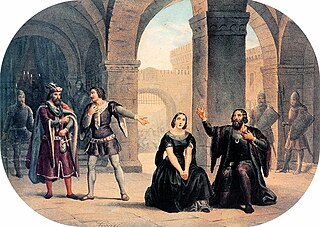
Les vêpres siciliennes is a grand opera in five acts by the Italian romantic composer Giuseppe Verdi set to a French libretto by Eugène Scribe and Charles Duveyrier from their work Le duc d'Albe of 1838. Les vêpres followed immediately after Verdi's three great mid-career masterpieces, Rigoletto, Il trovatore and La traviata of 1850 to 1853 and was first performed at the Paris Opéra on 13 June 1855.
Lewis and Clark Expedition: Meriwether Lewis became the first white American to sight the Great Falls of the Missouri River.

The Lewis and Clark Expedition, also known as the Corps of Discovery Expedition, was the United States expedition to cross the newly acquired western portion of the country after the Louisiana Purchase. The Corps of Discovery was a select group of U.S. Army and civilian volunteers under the command of Captain Meriwether Lewis and his close friend Second Lieutenant William Clark. Clark and 30 members set out from Camp Dubois, Illinois, on May 14, 1804, met Lewis and ten other members of the group in St. Charles, Missouri, then went up the Missouri River. The expedition crossed the Continental Divide of the Americas near the Lemhi Pass, eventually coming to the Columbia River, and the Pacific Ocean in 1805. The return voyage began on March 23, 1806, at Fort Clatsop, Oregon, and ended on September 23 of the same year.

Meriwether Lewis was an American explorer, soldier, politician, and public administrator, best known for his role as the leader of the Lewis and Clark Expedition, also known as the Corps of Discovery, with William Clark. Their mission was to explore the territory of the Louisiana Purchase, establish trade with, and sovereignty over the natives near the Missouri River, and claim the Pacific Northwest and Oregon Country for the United States before European nations. They also collected scientific data, and information on indigenous nations. President Thomas Jefferson appointed him Governor of Upper Louisiana in 1806. He died of gunshot wounds in what was either a murder or suicide, in 1809. While the Louisiana Purchase was not made official until July 1803, President Jefferson secretly requested Congress to fund the expedition in January 1803.

The Great Falls of the Missouri River are a series of waterfalls on the upper Missouri River in north-central Montana in the United States. From upstream to downstream, the five falls along a 10-mile (16 km) segment of the river are:Black Eagle Falls Colter Falls Rainbow Falls Crooked Falls, also known as Horseshoe Falls Big Falls, also known as the Great Falls,

The Missouri River is the longest river in the United States. Rising in the Rocky Mountains of the Eastern Centennial Mountains of Southwestern Montana, the Missouri flows east and south for 2,341 miles (3,767 km) before entering the Mississippi River north of St. Louis, Missouri. The river drains a sparsely populated, semi-arid watershed of more than 500,000 square miles (1,300,000 km2), which includes parts of ten U.S. states and two Canadian provinces. Although a tributary of the Mississippi, the Missouri River is marginally longer and carries a comparable volume of water. When combined with the lower Mississippi River, it forms the world's fourth longest river system.
Lewis and Clark Expedition: Scouting ahead of the expedition, Meriwether Lewis and four companions sight the Great Falls of the Missouri River.

The Lewis and Clark Expedition, also known as the Corps of Discovery Expedition, was the United States expedition to cross the newly acquired western portion of the country after the Louisiana Purchase. The Corps of Discovery was a select group of U.S. Army and civilian volunteers under the command of Captain Meriwether Lewis and his close friend Second Lieutenant William Clark. Clark and 30 members set out from Camp Dubois, Illinois, on May 14, 1804, met Lewis and ten other members of the group in St. Charles, Missouri, then went up the Missouri River. The expedition crossed the Continental Divide of the Americas near the Lemhi Pass, eventually coming to the Columbia River, and the Pacific Ocean in 1805. The return voyage began on March 23, 1806, at Fort Clatsop, Oregon, and ended on September 23 of the same year.

Meriwether Lewis was an American explorer, soldier, politician, and public administrator, best known for his role as the leader of the Lewis and Clark Expedition, also known as the Corps of Discovery, with William Clark. Their mission was to explore the territory of the Louisiana Purchase, establish trade with, and sovereignty over the natives near the Missouri River, and claim the Pacific Northwest and Oregon Country for the United States before European nations. They also collected scientific data, and information on indigenous nations. President Thomas Jefferson appointed him Governor of Upper Louisiana in 1806. He died of gunshot wounds in what was either a murder or suicide, in 1809. While the Louisiana Purchase was not made official until July 1803, President Jefferson secretly requested Congress to fund the expedition in January 1803.

The Great Falls of the Missouri River are a series of waterfalls on the upper Missouri River in north-central Montana in the United States. From upstream to downstream, the five falls along a 10-mile (16 km) segment of the river are:Black Eagle Falls Colter Falls Rainbow Falls Crooked Falls, also known as Horseshoe Falls Big Falls, also known as the Great Falls,
American Revolutionary War: Gilbert du Motier, Marquis de Lafayette lands near Charleston, South Carolina, in order to help the Continental Congress to train its army.

The American Revolutionary War, also known as the Revolutionary War or American War of Independence, secured American independence from Great Britain. Fighting began on April 19, 1775, followed by the Lee Resolution on July 2, 1776, and the Declaration of Independence on July 4, 1776. The American Patriots were supported by the Kingdom of France and, to a lesser extent, the Dutch Republic and the Spanish Empire, in a conflict taking place in North America, the Caribbean, and the Atlantic Ocean.

Marie-Joseph Paul Yves Roch Gilbert du Motier, Marquis de La Fayette, known in the United States as Lafayette, was a French aristocrat, freemason and military officer who fought in the American Revolutionary War, commanding American troops in several battles, including the siege of Yorktown. After returning to France, he was a key figure in the French Revolution of 1789 and the July Revolution of 1830. He has been considered a national hero in both countries.

Charleston is the largest city in the U.S. state of South Carolina, the county seat of Charleston County, and the principal city in the Charleston–North Charleston metropolitan area. The city lies just south of the geographical midpoint of South Carolina's coastline on Charleston Harbor, an inlet of the Atlantic Ocean formed by the confluence of the Ashley, Cooper, and Wando rivers. Charleston had a population of 150,277 as of the 2020 U.S. Census. The 2020 population of the Charleston metropolitan area, comprising Berkeley, Charleston, and Dorchester counties, was 799,636 residents, the third-largest in the state and the 74th-largest metropolitan statistical area in the United States.

The Continental Congress was a series of legislative bodies, with some executive function, for thirteen of Britain's colonies in North America, and the newly declared United States just before, during, and after the American Revolutionary War. The term "Continental Congress" most specifically refers to the First and Second Congresses of 1774–1781 and, at the time, was also used to refer to the Congress of the Confederation of 1781–1789, which operated as the first national government of the United States until being replaced under the Constitution of the United States. Thus, the term covers the three congressional bodies of the Thirteen Colonies and the new United States that met between 1774 and 1789.
Rhode Island becomes the first of Britain's North American colonies to ban the importation of slaves.

Rhode Island is a state in the New England region of the Northeastern United States. It is the smallest U.S. state by area and the seventh-least populous, with slightly fewer than 1.1 million residents as of 2020, but it is the second-most densely populated after New Jersey. It takes its name from the eponymous island, though most of its land area is on the mainland. Rhode Island borders Connecticut to the west; Massachusetts to the north and east; and the Atlantic Ocean to the south via Rhode Island Sound and Block Island Sound. It also shares a small maritime border with New York. Providence is its capital and most populous city.
Georgia provincial governor James Oglethorpe begins an unsuccessful attempt to take Spanish Florida during the Siege of St. Augustine.

The Province of Georgia was one of the Southern colonies in British America. It was the last of the thirteen original American colonies established by Great Britain in what later became the United States. In the original grant, a narrow strip of the province extended to the Pacific Ocean.

James Edward Oglethorpe was a British soldier, Member of Parliament, and philanthropist, as well as the founder of the colony of Georgia in what was then British America. As a social reformer, he hoped to resettle Britain's "worthy poor" in the New World, initially focusing on those in debtors' prisons.

Spanish Florida was the first major European land claim and attempted settlement in North America during the European Age of Discovery. La Florida formed part of the Captaincy General of Cuba, the Viceroyalty of New Spain, and the Spanish Empire during Spanish colonization of the Americas. While its boundaries were never clearly or formally defined, the territory was initially much larger than the present-day state of Florida, extending over much of what is now the southeastern United States, including all of present-day Florida plus portions of Georgia, Alabama, Mississippi, North Carolina, South Carolina, and Louisiana. Spain's claim to this vast area was based on several wide-ranging expeditions mounted during the 16th century. A number of missions, settlements, and small forts existed in the 16th and to a lesser extent in the 17th century; they were eventually abandoned due to pressure from the expanding English and French colonial settlements, the collapse of the native populations, and the general difficulty in becoming agriculturally or economically self-sufficient. By the 18th century, Spain's control over La Florida did not extend much beyond a handful of forts near St. Augustine, St. Marks, and Pensacola, all within the boundaries of present-day Florida.
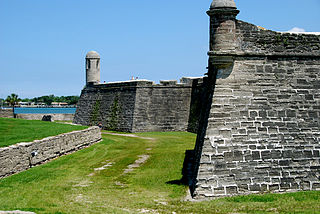
The siege of St. Augustine was a military engagement that took place during June–July 1740. It involved a British attack on the city of St Augustine in Spanish Florida and was a part of the much larger conflict known as the War of Jenkins' Ear.
King Charles I of England marries Catholic princess Henrietta Maria of France and Navarre, at Canterbury.

Charles I was King of England, Scotland, and Ireland from 27 March 1625 until his execution in 1649. He was born into the House of Stuart as the second son of King James VI of Scotland, but after his father inherited the English throne in 1603, he moved to England, where he spent much of the rest of his life. He became heir apparent to the kingdoms of England, Scotland, and Ireland in 1612 upon the death of his elder brother, Henry Frederick, Prince of Wales. An unsuccessful and unpopular attempt to marry him to the Spanish Habsburg princess Maria Anna culminated in an eight-month visit to Spain in 1623 that demonstrated the futility of the marriage negotiation. Two years later, he married the Bourbon princess Henrietta Maria of France.

Henrietta Maria was Queen of England, Scotland, and Ireland from her marriage to King Charles I on 13 June 1625 until Charles was executed on 30 January 1649. She was mother of his sons Charles II and James II and VII. Contemporaneously, by a decree of her husband, she was known in England as Queen Mary, but she did not like this name and signed her letters "Henriette R" or "Henriette Marie R"
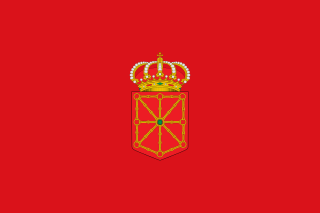
Navarre, officially the Chartered Community of Navarre, is a foral autonomous community and province in northern Spain, bordering the Basque Autonomous Community, La Rioja, and Aragon in Spain and Nouvelle-Aquitaine in France. The capital city is Pamplona. The present-day province makes up the majority of the territory of the medieval Kingdom of Navarre, a long-standing Pyrenean kingdom that occupied lands on both sides of the western Pyrenees, with its northernmost part, Lower Navarre, located in the southwest corner of France.
Martin Luther married Katharina von Bora, beginning the practice of clerical marriage in Protestantism.

Martin Luther was a German priest, theologian, author, hymnwriter, and professor. A former Augustinian friar, he is best known as the seminal figure in the Protestant Reformation and the namesake of Lutheranism.
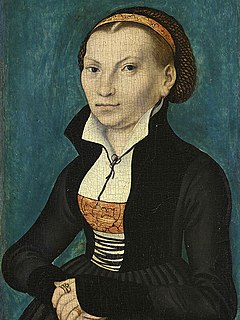
Katharina von Bora, after her wedding Katharina Luther, also referred to as "die Lutherin", was the wife of Martin Luther, German reformer and a seminal figure of the Protestant Reformation. Beyond what is found in the writings of Luther and some of his contemporaries, little is known about her. Despite this, Katharina is often considered an important participant of the Reformation because of her role in helping to set precedents for Protestant family life and clergy marriages.
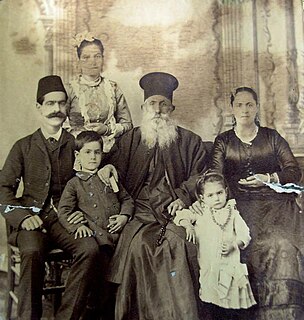
Clerical marriage is practice of allowing Christian clergy to marry. This practice is distinct from allowing married persons to become clergy. Clerical marriage is admitted among Protestants, including both Anglicans and Lutherans. Some Protestant clergy and their children have played an essential role in literature, philosophy, science, and education in Early Modern Europe.
Martin Luther marries Katharina von Bora, against the celibacy rule decreed by the Roman Catholic Church for priests and nuns.

Martin Luther was a German priest, theologian, author, hymnwriter, and professor. A former Augustinian friar, he is best known as the seminal figure in the Protestant Reformation and the namesake of Lutheranism.

Katharina von Bora, after her wedding Katharina Luther, also referred to as "die Lutherin", was the wife of Martin Luther, German reformer and a seminal figure of the Protestant Reformation. Beyond what is found in the writings of Luther and some of his contemporaries, little is known about her. Despite this, Katharina is often considered an important participant of the Reformation because of her role in helping to set precedents for Protestant family life and clergy marriages.
Celibacy is the state of voluntarily being unmarried, sexually abstinent, or both, usually for religious reasons. It is often in association with the role of a religious official or devotee. In its narrow sense, the term celibacy is applied only to those for whom the unmarried state is the result of a sacred vow, act of renunciation, or religious conviction. In a wider sense, it is commonly understood to only mean abstinence from sexual activity.
Henry Grace à Dieu, the largest warship in the world at the time, was launched from Woolwich Dockyard, England.

Henry Grace à Dieu, also known as Great Harry, was an English carrack or "great ship" of the King's Fleet in the 16th century, and in her day the largest warship in the world. Contemporary with Mary Rose, Henry Grace à Dieu was even larger, and served as Henry VIII's flagship. Built by William Bond under the direction of Robert Brygandine, she had a large forecastle four decks high, and a stern castle two decks high. She was 165 feet (50.29 m) long, measuring 1,000 tons burthen and having a complement of 700 men. She was ordered by Henry VIII, probably to replace Grace Dieu, which had been destroyed at the Battle of Saint-Mathieu in August 1512, and at a time of naval rivalry with the Kingdom of Scotland, her size was in response to the Scottish ship Great Michael, which had herself been the largest warship when launched in 1511.

Woolwich Dockyard was an English naval dockyard along the river Thames at Woolwich in north-west Kent, where many ships were built from the early 16th century until the late 19th century. William Camden called it 'the Mother Dock of all England'. By virtue of the size and quantity of vessels built there, Woolwich Dockyard is described as having been 'among the most important shipyards of seventeenth-century Europe'. During the Age of Sail, the yard continued to be used for shipbuilding and repair work more or less consistently; in the 1830s a specialist factory within the dockyard oversaw the introduction of steam power for ships of the Royal Navy. At its largest extent it filled a 56-acre site north of Woolwich Church Street, between Warspite Road and New Ferry Approach; 19th-century naval vessels were fast outgrowing the yard, however, and it eventually closed in 1869. The former dockyard area is now partly residential, partly industrial, with remnants of its historic past having been restored.
Henry Grace à Dieu, at over 1,000 tons the largest warship in the world at this time, built at the new Woolwich Dockyard in England, is dedicated.

Henry Grace à Dieu, also known as Great Harry, was an English carrack or "great ship" of the King's Fleet in the 16th century, and in her day the largest warship in the world. Contemporary with Mary Rose, Henry Grace à Dieu was even larger, and served as Henry VIII's flagship. Built by William Bond under the direction of Robert Brygandine, she had a large forecastle four decks high, and a stern castle two decks high. She was 165 feet (50.29 m) long, measuring 1,000 tons burthen and having a complement of 700 men. She was ordered by Henry VIII, probably to replace Grace Dieu, which had been destroyed at the Battle of Saint-Mathieu in August 1512, and at a time of naval rivalry with the Kingdom of Scotland, her size was in response to the Scottish ship Great Michael, which had herself been the largest warship when launched in 1511.

A warship or combatant ship is a naval ship that is built and primarily intended for naval warfare. Usually they belong to the armed forces of a state. As well as being armed, warships are designed to withstand damage and are usually faster and more maneuverable than merchant ships. Unlike a merchant ship, which carries cargo, a warship typically carries only weapons, ammunition and supplies for its crew. Warships usually belong to a navy, though they have also been operated by individuals, cooperatives and corporations.

Woolwich Dockyard was an English naval dockyard along the river Thames at Woolwich in north-west Kent, where many ships were built from the early 16th century until the late 19th century. William Camden called it 'the Mother Dock of all England'. By virtue of the size and quantity of vessels built there, Woolwich Dockyard is described as having been 'among the most important shipyards of seventeenth-century Europe'. During the Age of Sail, the yard continued to be used for shipbuilding and repair work more or less consistently; in the 1830s a specialist factory within the dockyard oversaw the introduction of steam power for ships of the Royal Navy. At its largest extent it filled a 56-acre site north of Woolwich Church Street, between Warspite Road and New Ferry Approach; 19th-century naval vessels were fast outgrowing the yard, however, and it eventually closed in 1869. The former dockyard area is now partly residential, partly industrial, with remnants of its historic past having been restored.
In England, the Peasants' Revolt, led by Wat Tyler, comes to a head, as rebels set fire to the Savoy Palace.

The Peasants' Revolt, also named Wat Tyler's Rebellion or the Great Rising, was a major uprising across large parts of England in 1381. The revolt had various causes, including the socio-economic and political tensions generated by the Black Death in the 1340s, the high taxes resulting from the conflict with France during the Hundred Years' War, and instability within the local leadership of London.

Wat Tyler was a leader of the 1381 Peasants' Revolt in England. He led a group of rebels from Canterbury to London to oppose the institution of a poll tax and to demand economic and social reforms. While the brief rebellion enjoyed early success, Tyler was killed by officers loyal to King Richard II during negotiations at Smithfield, London.
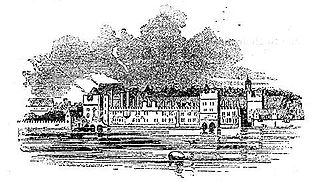
The Savoy Palace, considered the grandest nobleman's townhouse of medieval London, was the residence of prince John of Gaunt until it was destroyed during rioting in the Peasants' Revolt of 1381. The palace was on the site of an estate given to Peter II, Count of Savoy, in the early 1200s, which in the following century came to be controlled by Gaunt's family. It was situated between Strand and the River Thames – the Tudor era Savoy Chapel carries on the name, and the present day Savoy Theatre and Savoy Hotel were named in its memory. In the locality of the palace, the administration of law was by a special jurisdiction, separate from the rest of the county of Middlesex, known as the Liberty of the Savoy.
Ibn Battuta begins his travels, leaving his home in Tangiers to travel to Mecca (gone 24 years).
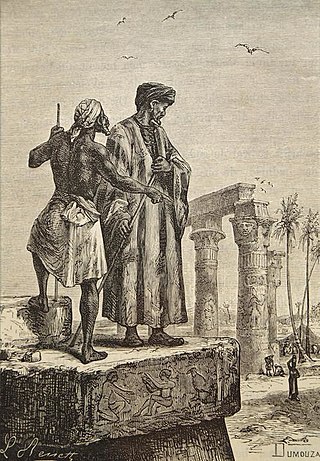
Abu Abdullah Muhammad ibn Battutah, commonly known as Ibn Battuta, was a Berber Maghrebi scholar and explorer who travelled extensively in the lands of Afro-Eurasia, largely in the Muslim world. He travelled more than any other explorer in pre-modern history, totalling around 117,000 km (73,000 mi), surpassing Zheng He with about 50,000 km (31,000 mi) and Marco Polo with 24,000 km (15,000 mi). Over a period of thirty years, Ibn Battuta visited most of southern Eurasia, including Central Asia, Southeast Asia, South Asia, China, and the Iberian Peninsula. Near the end of his life, he dictated an account of his journeys, titled A Gift to Those Who Contemplate the Wonders of Cities and the Marvels of Travelling, but commonly known as The Rihla.

Tangier is a city in northwestern Morocco. It is on the Moroccan coast at the western entrance to the Strait of Gibraltar, where the Mediterranean Sea meets the Atlantic Ocean off Cape Spartel. The town is the capital of the Tanger-Tetouan-Al Hoceima region, as well as the Ṭanja-Aẓila Prefecture of Morocco.
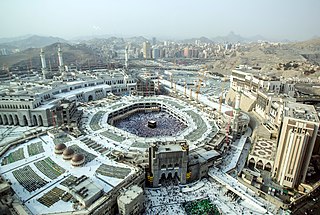
Mecca, commonly shortened to Makkah, is a city and administrative center of the Mecca Province of Saudi Arabia, and the holiest city in Islam. It is 70 km (43 mi) inland from Jeddah on the Red Sea, in a narrow valley 277 m (909 ft) above sea level. Its last recorded population was 1,578,722 in 2015. Its estimated metro population in 2020 is 2.042 million, making it the third-most populated city in Saudi Arabia after Riyadh and Jeddah. Pilgrims more than triple this number every year during the Ḥajj pilgrimage, observed in the twelfth Hijri month of Dhūl-Ḥijjah.
The Edict of Milan, an agreement between Constantine the Great and Licinius to treat Christians benevolently within the Roman Empire, was posted in Nicomedia.
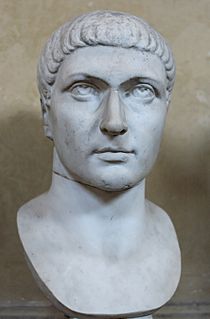
The Edict of Milan was the February 313 AD agreement to treat Christians benevolently within the Roman Empire. Western Roman Emperor Constantine I and Emperor Licinius, who controlled the Balkans, met in Mediolanum and, among other things, agreed to change policies towards Christians following the edict of toleration issued by Emperor Galerius two years earlier in Serdica. The Edict of Milan gave Christianity legal status and a reprieve from persecution but did not make it the state church of the Roman Empire. That occurred in AD 380 with the Edict of Thessalonica.

Constantine I, also known as Constantine the Great, was Roman emperor from AD 306 to 337, and the first to convert to Christianity. Born in Naissus, Dacia Mediterranea, he was the son of Flavius Constantius, a Roman army officer of Illyrian origin who had been one of the four rulers of the Tetrarchy. His mother, Helena, was a Greek Christian of low birth. Constantine served with distinction under the Roman emperors Diocletian and Galerius. He began his career by campaigning in the eastern provinces before being recalled in the west to fight alongside his father in Britain. After his father's death in 306, Constantine became emperor. He was acclaimed by his army at Eboracum, and eventually emerged victorious in the civil wars against emperors Maxentius and Licinius to become the sole ruler of the Roman Empire by 324.
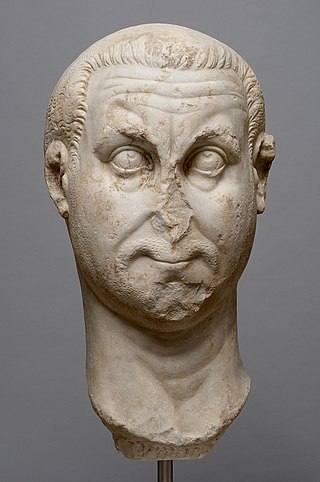
Valerius Licinianus Licinius was Roman emperor from 308 to 324. For most of his reign he was the colleague and rival of Constantine I, with whom he co-authored the Edict of Milan, AD 313, that granted official toleration to Christians in the Roman Empire. He was finally defeated at the Battle of Chrysopolis, and was later executed on the orders of Constantine I.

Nicomedia was an ancient Greek city located in what is now Turkey. In 286, Nicomedia became the eastern and most senior capital city of the Roman Empire, a status which the city maintained during the Tetrarchy system (293–324).
The decisions of the Edict of Milan, signed by Constantine the Great and co-emperor Valerius Licinius, granting religious freedom throughout the Roman Empire, are published in Nicomedia.

The Edict of Milan was the February 313 AD agreement to treat Christians benevolently within the Roman Empire. Western Roman Emperor Constantine I and Emperor Licinius, who controlled the Balkans, met in Mediolanum and, among other things, agreed to change policies towards Christians following the edict of toleration issued by Emperor Galerius two years earlier in Serdica. The Edict of Milan gave Christianity legal status and a reprieve from persecution but did not make it the state church of the Roman Empire. That occurred in AD 380 with the Edict of Thessalonica.

Constantine I, also known as Constantine the Great, was Roman emperor from AD 306 to 337, and the first to convert to Christianity. Born in Naissus, Dacia Mediterranea, he was the son of Flavius Constantius, a Roman army officer of Illyrian origin who had been one of the four rulers of the Tetrarchy. His mother, Helena, was a Greek Christian of low birth. Constantine served with distinction under the Roman emperors Diocletian and Galerius. He began his career by campaigning in the eastern provinces before being recalled in the west to fight alongside his father in Britain. After his father's death in 306, Constantine became emperor. He was acclaimed by his army at Eboracum, and eventually emerged victorious in the civil wars against emperors Maxentius and Licinius to become the sole ruler of the Roman Empire by 324.

Valerius Licinianus Licinius was Roman emperor from 308 to 324. For most of his reign he was the colleague and rival of Constantine I, with whom he co-authored the Edict of Milan, AD 313, that granted official toleration to Christians in the Roman Empire. He was finally defeated at the Battle of Chrysopolis, and was later executed on the orders of Constantine I.

Freedom of religion or religious liberty is a principle that supports the freedom of an individual or community, in public or private, to manifest religion or belief in teaching, practice, worship, and observance. It also includes the freedom to change one's religion or beliefs, "the right not to profess any religion or belief", or "not to practise a religion".

The Roman Empire was the post-Republican period of ancient Rome. As a polity, it included large territorial holdings around the Mediterranean Sea in Europe, North Africa, and Western Asia, and was ruled by emperors. From the accession of Caesar Augustus as the first Roman emperor to the military anarchy of the 3rd century, it was a principate with Italia as the metropole of its provinces and the city of Rome as its sole capital. The Empire was later ruled by multiple emperors who shared control over the Western Roman Empire and the Eastern Roman Empire. The city of Rome remained the nominal capital of both parts until AD 476 when the imperial insignia were sent to Constantinople following the capture of the Western capital of Ravenna by the Germanic barbarians. The adoption of Christianity as the state church of the Roman Empire in AD 380 and the fall of the Western Roman Empire to Germanic kings conventionally marks the end of classical antiquity and the beginning of the Middle Ages. Because of these events, along with the gradual Hellenization of the Eastern Roman Empire, historians distinguish the medieval Roman Empire that remained in the Eastern provinces as the Byzantine Empire.

Nicomedia was an ancient Greek city located in what is now Turkey. In 286, Nicomedia became the eastern and most senior capital city of the Roman Empire, a status which the city maintained during the Tetrarchy system (293–324).
Ned Beatty, American actor (b. 1937) deaths

Ned Thomas Beatty was an American actor. In a career that spanned five decades, he appeared in more than 160 films. Throughout his career, Beatty gained a reputation for being "the busiest actor in Hollywood". His film appearances included Deliverance (1972), White Lightning (1973), All the President's Men (1976), Network (1976), Superman (1978), Superman II (1980), Back to School (1986), Rudy (1993), Shooter (2007), and Toy Story 3 (2010). Beatty was nominated for an Academy Award, two Emmy Awards, an MTV Movie Award for Best Villain, and a Golden Globe Award; he also won a Drama Desk Award.
Buddy Boudreaux, American saxophonist and clarinet player (b. 1917) deaths

John Landry “Buddy” Boudreaux was a big band and jazz musician in Baton Rouge, Louisiana. He played saxophone and clarinet. Since 1934, he directed and played in a number of bands that have toured the southern United States and drawn nationally known performers to Baton Rouge. The State-Times newspaper called him “the city’s sound of big band.” His bands backed such artists as Andy Williams, Bernadette Peters, Doc Severinsen, Dionne Warwick, Gladys Knight and the Pips, Burt Bacharach, Johnny Mathis, The Four Tops, Bob Hope, George Burns and Joan Rivers. He opened shows for Tony Bennett, Tony Orlando, Louise Mandrell, The Beach Boys and Bill Cosby. He was co-author—with his barber, Michael T. Abadie—of “My Baton Rouge,” which in 1998 was declared the city's official song.
Sergio Renán, Argentinian actor, director, and screenwriter (b. 1933) deaths
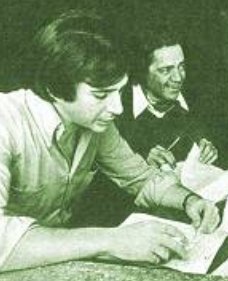
Sergio Renán was an Argentine actor, film director, and screenwriter.
Mike Shrimpton, New Zealand cricketer and coach (b. 1940) deaths

Michael John Froud Shrimpton was a New Zealand cricketer and coach.
Mahdi Elmandjra, Moroccan economist and sociologist (b. 1933) deaths

Mahdi Elmandjra was a Moroccan futurologist, economist and sociologist. He is one of the founders of the International Federation for Future Studies (Futuribles). He predicted a number of events, the most important of which was the clash of civilisations in his book "The first civilisation war" in 1992, that is, before Samuel Huntington, who used the same concept in his book "The clash of civilisations" issued in 1996. Mahdi Elmandjra also predicted the occurrence of the "Arab Spring", which he referred to in his writings under the name of "Intifada".
Gyula Grosics, Hungarian footballer and manager (b. 1926) deaths

Gyula Grosics was a Hungarian football goalkeeper who played 86 times for the Hungary national football team and was part of the "Golden Team" of the 1950s. Regarded as one of the greatest goalkeepers of all time, he was thought to be the first goalkeeper to play as the sweeper-keeper. Grosics was nicknamed "Black Panther", because he wore black clothing while playing. He won a gold medal in football at the 1952 Summer Olympics.
Jim Keays, Scottish-Australian singer-songwriter and guitarist (b. 1946) deaths
James Keays was a Scottish-born Australian musician who fronted the rock band The Masters Apprentices as singer-songwriter, guitarist and harmonica-player from 1965 to 1972 and subsequently had a solo career. He also wrote for a music newspaper, Go-Set, as its Adelaide correspondent in 1970 and its London correspondent in 1973.
Chuck Noll, American football player and coach (b. 1932) deaths

Charles Henry Noll was an American professional football player and head coach. Regarded as one of the greatest head coaches of all time, his sole head coaching position was for the Pittsburgh Steelers of the National Football League (NFL) from 1969 to 1991. When Noll retired after 23 years, only three other head coaches in NFL history had longer tenures with one team.
Robert Peters, American poet, playwright, and critic (b. 1924) deaths

Robert Louis Peters was an American poet, critic, scholar, playwright, editor, and actor. He held a PhD in Victorian literature. Born in an impoverished rural area of northern Wisconsin in 1924, his poetry career began in 1967 when his young son Richard died unexpectedly of spinal meningitis. The book commemorating this loss, Songs for a Son, was selected by poet Denise Levertov to be published by W. W. Norton in 1967. Songs for a Son began a flood of poetry.
David Deutsch, American businessman, founded Deutsch Inc. (b. 1929) deaths
David Deutsch was an American advertising executive and artist. He founded David Deutsch Associates, now known as Deutsch Inc., in 1969. He served as the agency's CEO from 1969 until 1989, when he handed control of the company to his son, Donny Deutsch.
Deutsch NY, formerly Deutsch Inc. is an American ad agency headquartered in New York City. The agency was founded by David Deutsch in 1969 as David Deutsch Associates, Inc. In 1989, the company name changed to Deutsch Inc. when Deutsch's son, Donny Deutsch, took over the agency.
Sam Most, American flute player and saxophonist (b. 1930) deaths

Samuel Most was an American jazz flutist, clarinetist and tenor saxophonist, based in Los Angeles. He was "probably the first great jazz flutist", according to jazz historian Leonard Feather.
Albert White Hat, American educator and activist (b. 1938) deaths

Albert White Hat was a teacher of the Lakota language, and an activist for Sičháŋǧu Lakȟóta traditional culture. He translated the Lakota language for Hollywood movies, including the 1990 movie Dances with Wolves, and created a modern Lakota orthography and textbook.
Sam Beddingfield, American pilot and engineer (b. 1933) deaths
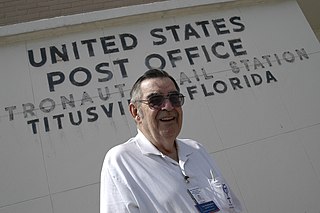
Samuel T. Beddingfield was an American test pilot and a pioneering aerospace engineer and who had a long career with NASA during its manned space programs.
Graeme Bell, Australian pianist, composer, and bandleader (b. 1914) deaths
Graeme Emerson Bell, AO, MBE was an Australian Dixieland and classical jazz pianist, composer and band leader. According to The Age, his "band's music was hailed for its distinctive Australian edge, which he describes as 'nice larrikinism' and 'a happy Aussie outdoor feel'".
Roger Garaudy, French philosopher and author (b. 1913) deaths

Roger Garaudy was a French philosopher, French resistance fighter and a communist author. He converted to Islam in 1982. In 1998, he was convicted and fined for Holocaust denial under French law for claiming that the death of six million Jews was a "myth".
Jože Humer, Slovenian composer and translator (b. 1934) deaths
Jože Humer was a Slovenian composer, choirmaster, lyricist, translator, and cultural organiser. He was born in Maribor, attended a local classical gymnasium, and then studied and graduated from law. He established the Ljubljana Madrigalists Chamber Choir and led the Tone Tomšič Academic Choir and the Gallus Octet in Ljubljana. He was president of the Ljubljana Musical Youth, the renovator of the Ljubljana Musical Society, and president of the Association of Cultural Organisations of Slovenia. He wrote and translated hundreds of librettos and other lyrics for children, choirs, and soloists. In 1999, he received the Golden Medal of the Slovenian Public Fund of Cultural Activities for his work. He was also a judge, a secretary of the Supreme Court of Slovenia, and involved in the legal and organisational arrangements in the field of culture in the 1980s and during Slovenian secession from Yugoslavia. Later, he collaborated as an expert with the Slovenian Constitutional Court. In March 2012, he was decorated by Slovenian President Danilo Türk with the Order for Merits of Slovenia, with a rationale that described him as an "above-average deserving personality of the Slovenian cultural life."
Mehdi Hassan, Pakistani ghazal singer and playback singer for Lollywood (b. 1927) deaths

Mehdi Hassan Khan 18 July 1927 – 13 June 2012) was a Pakistani ghazal singer and playback singer for Lollywood. Widely considered one of the greatest and most influential figures in the history of ghazal singing, Hassan is referred to as the "Shahenshah-e-Ghazal". Known for his "haunting" baritone voice, Hassan is credited with bringing ghazal singing to a worldwide audience. He is unique for his melodic patterns and maintaining integrity of the ragas in an innovative way.
Jimmy Dean, American singer and businessman, founded Jimmy Dean Foods (b. 1928) deaths
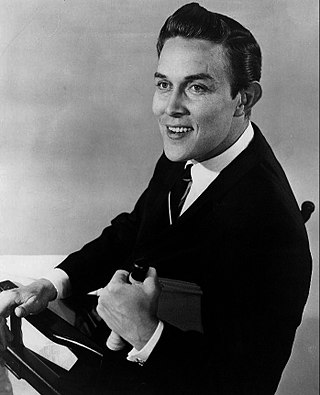
Jimmy Ray Dean was an American country music singer, television host, actor and businessman. He was the creator of the Jimmy Dean sausage brand as well as the spokesman for its TV commercials.
Jimmy Dean Foods is a food company that was founded in 1969 by country singer and actor Jimmy Dean. It was purchased by Sara Lee, which then divested as part of a unit known as Hillshire Brands, which was later purchased by Tyson Foods.
Fathi Yakan, Lebanese scholar and politician (b. 1933) deaths
Fathi Yakan was an Islamic cleric who held a seat in the parliament of Lebanon in 1992. He was born in Tripoli.
Tim Russert, American journalist and lawyer (b. 1950) deaths

Timothy John Russert was an American television journalist and lawyer who appeared for more than 16 years as the longest-serving moderator of NBC's Meet the Press. He was a senior vice president at NBC News, Washington bureau chief and also hosted an eponymous CNBC/MSNBC weekend interview program. He was a frequent correspondent and guest on NBC's The Today Show and Hardball. Russert covered several presidential elections, and he presented the NBC News/Wall Street Journal survey on the NBC Nightly News during the 2008 U.S. presidential election. Time magazine included Russert in its list of the 100 most influential people in the world in 2008. Russert was posthumously revealed as a 30-year source for syndicated columnist Robert Novak.
Walid Eido, Lebanese judge and politician (b. 1942) deaths
Walid Eido was a member of the Current for the Future, Lebanese political movement and a member of the Lebanese Parliament. He was also a member of the March 14 Coalition.
Charles Haughey, Irish lawyer and politician, 7th Taoiseach of Ireland (b. 1925) deaths

Charles James Haughey was an Irish Fianna Fáil politician who served as Taoiseach on three occasions – 1979 to 1981, March to December 1982 and 1987 to 1992. He was also Minister for the Gaeltacht from 1987 to 1992, Leader of the Opposition from 1981 to 1982 and 1982 to 1987, Leader of Fianna Fáil from 1979 to 1992, Minister for Social Welfare and for Health from 1977 to 1979, Minister for Finance from 1966 to 1970, Minister for Agriculture from 1964 to 1966, Minister for Justice from 1961 to 1964 and Parliamentary Secretary to the Minister for Justice from 1959 to 1961. He served as a Teachta Dála (TD) from 1957 to 1992.

The Taoiseach is the head of government of Ireland. The office is appointed by the president of Ireland upon the nomination of Dáil Éireann and the office-holder must retain the support of a majority in the Dáil to remain in office.
Álvaro Cunhal, Portuguese academic and politician (b. 1913) deaths

Álvaro Barreirinhas Cunhal was a Portuguese communist revolutionary and politician. He was one of the major opponents of the dictatorial regime of the Estado Novo. He served as secretary-general of the Portuguese Communist Party (PCP) from 1961 to 1992. He was one of the most pro-Soviet of all Western Europe communist leaders, often supporting the Soviet Union's foreign policies, including the Soviet invasion of Czechoslovakia in 1968. During the 1970s, Cunhal supported Soviet leader Leonid Brezhnev’s political agenda, and strongly opposed Mikhail Gorbachev’s perestroika policies in the 1980s.
David Diamond, American pianist and composer (b. 1915) deaths

David Leo Diamond was an American composer of classical music. He is considered one of the preeminent American composers of his generation. Many of his works are tonal or modestly modal. His early compositions are typically triadic, often with widely spaced harmonies, giving them a distinctly American tone, but some of his works are consciously French in style. His later style became more chromatic.
Ralph Wiley, American journalist and author (b. 1952) deaths
Ralph Heygood Wiley Jr. was an American sports journalist who wrote for Sports Illustrated and ESPN's Page 2. He was well known for his distinctive literary tone and his writings on race in America.
Malik Meraj Khalid, Pakistani lawyer and politician, Prime Minister of Pakistan (b. 1916) deaths
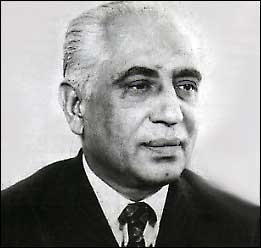
Malik Meraj Khalid, was a Pakistani advocate, left wing politician and Marxist philosopher who served as Caretaker prime minister of Pakistan from November 1996 until February 1997. He was noted as being one of the original philosophers and founding personalities of the Pakistan Peoples Party (PPP).

The prime minister of Pakistan is the head of government of the Islamic Republic of Pakistan. Executive authority is vested in the prime minister and his chosen cabinet, despite the president of Pakistan serving as the nominal head of executive. The prime minister is often the leader of the party or the coalition with a majority in the lower house of the Parliament of Pakistan, the National Assembly where he serves as Leader of the House. Prime minister holds office by virtue of their ability to command the confidence of the National Assembly. The prime minister is designated as the "Chief Executive of the Islamic Republic".
John Hope, American navigator and meteorologist (b. 1919) deaths
John Raymond Hope was an American meteorologist who specialized in hurricane forecasting and was an on-air personality on The Weather Channel.
Maia Wojciechowska, Polish-American author (b. 1927) deaths
Maia Teresa Wojciechowska was a Polish-American writer best known for children's and young adult fiction. Her first book and two books for adults were published under her married name Maia Rodman.
Penny Oleksiak, Canadian swimmer births
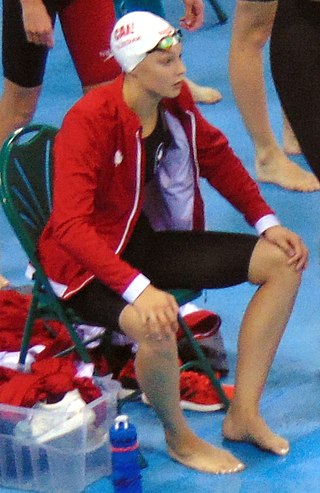
Penelope Oleksiak is a Canadian competitive swimmer. Her country's most decorated Olympian, Oleksiak rose to fame during the 2016 Summer Olympics, where she became the first Canadian to win four medals in the same Summer Games, and the country's youngest Olympic champion with her gold medal win in the 100 m freestyle. She was the first athlete born in the 2000s to claim an Olympic gold medal in an individual event. Her success led to her being awarded the 2016 Lou Marsh Trophy as Canada's top athlete, the Bobbie Rosenfeld Award as Canada's top female athlete for 2016, and a member of the Canadian Press team of the year. Five years later she won three additional medals at the 2020 Summer Olympics, breaking the national record for Olympic medals.
Alfred Gerrard, English sculptor and academic (b. 1899) deaths
Alfred Horace "Gerry" Gerrard RBS was an English modernist sculptor. He was head of the sculpture department at the Slade School of Fine Art from 1925 and professor of sculpture there from 1949 to 1968, where he taught a number of well-known sculptors.
Birger Ruud, Norwegian ski jumper (b. 1911) deaths
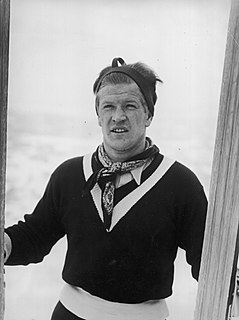
Birger Ruud was a Norwegian ski jumper and alpine skier.
Reg Smythe, English cartoonist (b. 1917) deaths

Reginald Smyth was a British cartoonist who created the popular, long-running Andy Capp comic strip.
Nguyen Manh Tuong, Vietnamese lawyer and academic (b. 1909) deaths
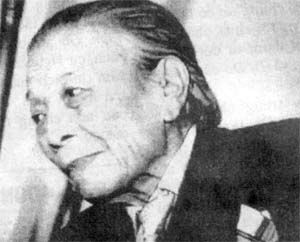
Nguyễn Mạnh Tường (1909–1997) was a Vietnamese lawyer and intellectual. He was known to be one of the active participators in the Nhân Văn affair in the mid-1950s which saw many intellectuals demanding freedom and democracy in communist-led North Vietnam. After he criticised the disastrous land reform campaign in 1956, he was stripped of all positions he held in the government and was forced to retire from practicing law.
Emily Fanning, New Zealand tennis player births

Emily Fanning is a former tennis player from New Zealand. Her career-high junior ranking was 38, achieved in July 2012. In her career, Fanning won three doubles titles at tournaments of the ITF Circuit.
Laura Ucrós, Colombian tennis player births
Laura Ucrós Téllez is a Colombian tennis player.
Deepika Kumari, Indian archer births

Deepika Kumari is an Indian professional archer. Currently ranked the World No. 2, she competes in the event of archery. She won a gold medal in the 2010 Commonwealth games in the women's individual recurve event. She also won a gold medal in the same competition in the women's team recurve event along with Dola Banerjee and Bombayala Devi. She has won individual gold in two of the three stages of the World Cup--one in Guatemala and another in Paris. In the process she also reclaimed the number one ranking after nine years in Paris World Cup. Deepika Kumari won individual gold medals at the Archery World Cup Stage 1. Deepika Kumari also defeated Mexico by 5–1 in the final to win gold in Paris.
Nadia Gray, Romanian-French actress (b. 1923) deaths

Nadia Gray was a Romanian film actress.
Simona Senoner, Italian ski jumper (d. 2011) births
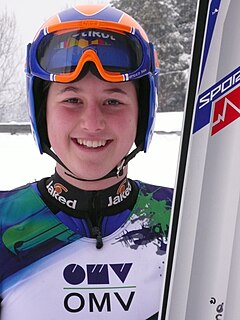
Simona Senoner was an Italian cross-country racer and ski jumper.
Denis Ten, Kazakhstani figure skater (d. 2018) births

Denis Yurievich Ten was a Kazakhstani figure skater. He was the 2014 Olympic bronze medalist, a two-time World medalist, the 2015 Four Continents champion, the 2017 Winter Universiade champion, and a five-time national champion of Kazakhstan.
Gérard Côté, Canadian runner (b. 1913) deaths

Gérard Côté, was a Canadian marathon runner and a four-time winner of the Boston Marathon.
Deke Slayton, American soldier, pilot, and astronaut (b. 1924) deaths

Donald Kent "Deke" Slayton was a United States Air Force pilot, aeronautical engineer, and test pilot who was selected as one of the original NASA Mercury Seven astronauts. He went on to become NASA's first Chief of the Astronaut Office and Director of Flight Crew Operations, responsible for NASA crew assignments.
Semi Radradra, Fijian rugby league player births
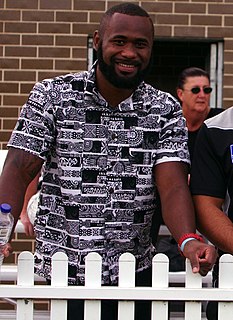
Semi Radradra Turagasoli Waqavatu is a Fijian professional rugby union and rugby league footballer. He currently plays rugby union for the English club Bristol Bears and the Fiji national team. Nicknamed 'Semi Trailer', Radradra has played primarily as a wing in both codes.
Will Claye, American jumper births
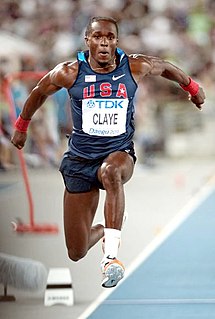
Will Claye is an American track and field athlete of Sierra Leonean descent who competes in the long jump and triple jump. He won a bronze medal in 2011 World Championships in Athletics and the gold medals at the 2012 IAAF World Indoor Championships and 2018 IAAF World Indoor Championships. In his Olympic debut at the 2012 Summer Olympics, Claye won a bronze medal in long jump and a silver medal in triple jump. He repeated his silver medal in the triple jump four years later. His personal best of 18.14 m, set at the Jim Bush Southern California USATF Championships in Long Beach on June 29, 2019 ranks him as the No. 3 triple jumper of all time.
Ryan Mason, English footballer births

Ryan Glen Mason is an English professional football coach and former player. He became the interim head coach of Premier League club Tottenham Hotspur in 2021, becoming the youngest coach in Premier League history, at 29.
James McCann, American baseball player births

James Thomas McCann is an American professional baseball catcher for the New York Mets of Major League Baseball (MLB). He previously played for the Detroit Tigers and Chicago White Sox.
Nicole Riner, Swiss tennis player births
Nicole Riner is a retired Swiss tennis player.
Aaron Taylor-Johnson, English actor births

Aaron Perry Taylor-Johnson is an English actor. He is best known for his portrayal of the title character in Kick-Ass (2010) and its 2013 sequel, and the Marvel Cinematic Universe (MCU) character Pietro Maximoff in a cameo appearence in Captain America: The Winter Soldier (2014) before having a more prominent role in Avengers: Age of Ultron (2015). Taylor-Johnson began performing at age six and has appeared in such films as Shanghai Knights (2003), The Illusionist (2006), The Thief Lord (2006), and Angus, Thongs and Perfect Snogging (2008).
Ben Barba, Australian rugby league player births

Ben Barba is an Australian former professional rugby league footballer who last played for St Helens in the Super League. He primarily played as a fullback or five-eighth.
James Calado, English racing driver births

James John Calado is a British professional racing driver from England, currently competing in the FIA World Endurance Championship and other selected GT races for AF Corse. He won the LMGTE Pro class of the 2017 FIA World Endurance Championship and 2019 24 Hours of Le Mans. He drove for Panasonic Jaguar Racing in Formula E. His career has been funded by the Racing Steps Foundation.
Ryan McDonagh, American ice hockey defenseman births

Ryan Patrick McDonagh is an American professional ice hockey defenseman for the Nashville Predators of the National Hockey League (NHL). Drafted in the first round, 12th overall, by the Montreal Canadiens in 2007, he played college hockey for the Badgers at the University of Wisconsin–Madison. He also played for the New York Rangers, for whom he served as team captain from October 2014 until being traded to the Tampa Bay Lightning in 2018. McDonagh won back-to-back Stanley Cups with the Lightning in 2020 and 2021.
Daniel Mortimer, Australian rugby league player births

Daniel Mortimer is an Australian former professional rugby league footballer who last played as a hooker, scrum-half or stand-off for the Leigh Centurions in the Betfred Championship. He previously played for the Parramatta Eels, Gold Coast Titans, Sydney Roosters and the Cronulla-Sutherland Sharks. Mortimer was a Prime Minister's XIII representative and won the 2013 NRL Grand Final with the Roosters.
Andreas Samaris, Greek footballer births

Andreas Samaris is a Greek professional footballer who plays as a midfielder for Portuguese Primeira Liga club Rio Ave.
Tommy Searle, English motocross racer births

Tommy Searle is an English professional motocross and supercross racer. He competed in the Motocross World Championships from 2005 to 2008 and competed in the AMA Motocross Championships in 2009 and 2010. He returned to the Motocross World Championships from 2011 to 2019. Searle is a three-time MX2 World vice-champion. His fourteen MX2 Grand Prix victories make him Britain's most successful MX2 rider and ranks third in total victories across all classes to multiple world champions David Thorpe and Jeff Smith.

Motocross is a form of off-road motorcycle racing held on enclosed off-road circuits. The sport evolved from motorcycle trials competitions held in the United Kingdom.
Hassan Whiteside, American basketball player births
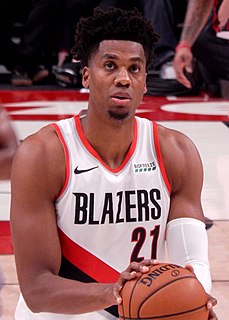
Hassan Niam Whiteside is an American professional basketball player who last played for the Utah Jazz of the National Basketball Association (NBA). He played college basketball for the Marshall Thundering Herd before being selected in the second round by the Sacramento Kings in the 2010 NBA draft. After joining the Miami Heat in 2014, Whiteside was named to the NBA All-Defensive Second Team in 2016, when he also led the NBA in blocks. He led the league in rebounding in 2017. He was traded to Portland Trail Blazers and again led the league in blocks in his first season with Portland.
Erica Wiebe, Canadian wrestler births
Erica Elizabeth Wiebe is a wrestler competing for Canada. She is an Olympic champion in women's 75 kg freestyle, winning gold at the 2016 Summer Olympics. She was the third Canadian champion ever in wrestling at the Olympics, and second Canadian woman to win gold after Carol Huynh. Wiebe is also the current Commonwealth Games champion in the same weight class, having won the gold medal at the 2014 and 2018 Commonwealth Games in Glasgow and the Gold Coast, respectively.
Fran Allison, American television personality and puppeteer (b. 1907) deaths
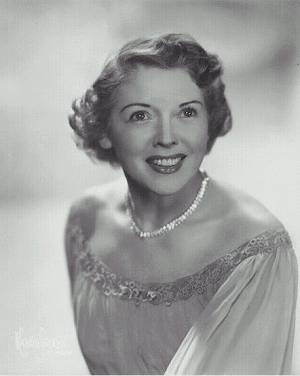
Frances Helen Allison was an American television and radio comedienne, personality, and singer.
Gabe Carimi, American football player births

Gabriel Andrew Carimi is a former American football guard. Carimi had 49 starts at left tackle in his four-year Wisconsin Badgers college career, which culminated at the 2011 Rose Bowl. He was awarded the 2010 Outland Trophy, as the nation's top collegiate interior lineman. He was also a unanimous All-American, and the Big Ten Offensive Lineman of the Year.
Reece Noi, British actor births
Reece Noi is a British Ghanaian Actor. He is best known for portraying Taylor Mitchell in the BBC school-based drama serial, Grange Hill, from 2004 to 2007, Noel Parkin in the second series and was Earl Kelly in the fourth series of Waterloo Road in 2009, and Mossador in the HBO series Game of Thrones. Noi also starred in the 2019 Emmy Nominated Netflix crime series When They See Us.
Cody Walker, American actor births
Cody Beau Walker is an American actor. He is the youngest brother of actor Paul Walker, and helped complete the final scenes for his character Brian O'Conner in the film Furious 7 (2015) following his brother's death. Walker made his acting debut in Abandoned Mine (2013). He went on to appear in films USS Indianapolis: Men of Courage (2016) and The Last Full Measure (2020).
Marko Grgić, Croatian footballer births
Marko Grgić is a Croatian retired football forward. Marko was called up for the Croatian national under-21 team in 2008, but never got capped.
Geraldine Page, American actress (b. 1924) deaths

Geraldine Sue Page was an American actress. With a career which spanned four decades across film, stage, and television, Page was the recipient of numerous accolades, including an Academy Award, a British Academy Film Award, two Primetime Emmy Awards, two Golden Globe Awards, and four nominations for the Tony Award.
Kat Dennings, American actress and comedian births

Katherine Victoria Litwack, known professionally as Kat Dennings, is an American actress. She is known for her starring roles as Max Black in the CBS sitcom 2 Broke Girls (2011–2017) and as Darcy Lewis in the Marvel Cinematic Universe superhero films Thor (2011), Thor: The Dark World (2013), Thor: Love and Thunder (2022), and the Disney+ miniseries WandaVision (2021).
Keisuke Honda, Japanese footballer births

Keisuke Honda is a Japanese professional football manager and former player. He is the general manager and coach of the Cambodia national team.
Jonathan Lucroy, American baseball catcher births

Jonathan Charles Lucroy is a former American professional baseball catcher. Between 2010 and 2021, he spent 12 seasons in Major League Baseball (MLB) playing for the Milwaukee Brewers, Texas Rangers, Colorado Rockies, Oakland Athletics, Los Angeles Angels, Chicago Cubs, Boston Red Sox, Washington Nationals, and Atlanta Braves.
Ashley Olsen, American child actress, fashion designer, and businesswoman births
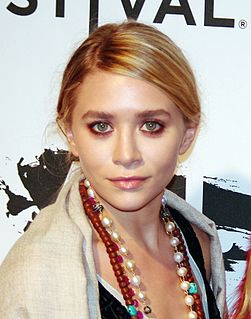
Ashley Fuller Olsen is an American businesswoman and former actress. She began her acting career at the age of nine months, sharing the role of Michelle Tanner with her twin sister Mary-Kate Olsen in the television sitcom Full House (1987–1995). They also starred in numerous films together.
Mary-Kate Olsen, American child actress, fashion designer, and businesswoman births

Mary-Kate Olsen is an American businesswoman, fashion designer, equestrian, and former actress. She began her acting career nine months after her birth, sharing the role of Michelle Tanner with her twin sister Ashley Olsen in the television sitcom Full House (1987–1995). They also starred in numerous films together.
DJ Snake, French DJ and record producer births

William Sami Étienne Grigahcine, known by his stage name DJ Snake, is a French music producer and DJ, first achieving international recognition in 2013 by releasing an instrumentation-oriented single called "Turn Down for What".
Lea Verou, Greek computer scientist and author births

Lea Verou is a computer scientist, front end web developer, speaker and author, originally from Lesbos, Greece. Verou is currently a research assistant at Massachusetts Institute of Technology (MIT) Computer Science and Artificial Intelligence Laboratory (CSAIL), an elected participant in the World Wide Web Consortium (W3C) Technical Architecture Group (TAG), and an Invited Expert in the W3C CSS Working Group. She is the author of CSS Secrets: Better Solutions to Everyday Web Design Problems (ISBN 978-1-449-37263-7).
Måns Zelmerlöw, Swedish singer births

Måns Petter Albert Sahlén Zelmerlöw is a Swedish pop singer, songwriter and television presenter. He took part in Idol 2005, eventually finishing fifth, won the first season of Let's Dance, and scored a hit with his 2007 song "Cara Mia", which was his entry in that year's Melodifestivalen. Zelmerlöw was the host of Allsång på Skansen from 2011 to 2013. He participated in Melodifestivalen in 2007, 2009 and won in 2015. Zelmerlöw represented Sweden in the Eurovision Song Contest 2015 with the song "Heroes", winning the contest with 365 points. Zelmerlöw and Petra Mede co-hosted the Eurovision Song Contest 2016 held in Stockholm.
Benny Goodman, American clarinet player, songwriter, and bandleader (b. 1909) deaths

Benjamin David Goodman was an American clarinetist and bandleader known as the "King of Swing".
Filipe Albuquerque, Portuguese racing driver births

Filipe Miguel Delgadinho Albuquerque is a Portuguese professional racing driver, currently driving a Acura ARX-05 in the IMSA SportsCar Championship for Wayne Taylor Racing, and an Oreca 07 in the FIA World Endurance Championship for United Autosports. He has claimed a LMP2 class title at the 2019–20 FIA World Endurance Championship, an LMP2 class win at the 2020 24 Hours of Le Mans, and overall wins at the 24 Hours of Daytona in 2018 and 2021.
Silvio Bankert, German footballer births
Silvio Bankert is a German footballer who plays for 1. FC Magdeburg in the Regionalliga Nordost.
Pedro Strop, Dominican baseball player births
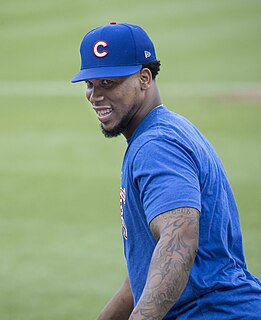
Pedro Ángel Strop is a Dominican professional baseball pitcher who is a free agent. He previously played in Major League Baseball (MLB) for the Texas Rangers, Baltimore Orioles, Cincinnati Reds, and Chicago Cubs.
Danny Syvret, Canadian ice hockey player births

Danny Syvret is a Canadian former professional ice hockey defenceman who played 59 games in the National Hockey League (NHL). Syvret was selected by the Edmonton Oilers in the third round of the 2005 NHL Entry Draft.
Nery Castillo, Mexican-Uruguayan footballer births
Nery Alberto Castillo Confalonieri is a Mexican former professional footballer who played as a forward.
Kaori Icho, Japanese wrestler births

Kaori Icho is a Japanese freestyle wrestler. She is a ten-time World Champion and four-time Olympic Champion, winning gold in 2004, 2008, 2012 and 2016. Icho was undefeated between 2003 and 2016. On 29 January 2016 at the Golden Grand Prix Ivan Yarygin 2016 Icho lost to Pürevdorjiin Orkhon of Mongolia. This was her first loss after a long domination.
Antje Möldner-Schmidt, German runner births

Antje Möldner-Schmidt is a retired German track and field athlete who specialised in middle distance running and the 3000 metres steeplechase.
António Variações, Portuguese singer-songwriter (b. 1944) deaths

António Joaquim Rodrigues Ribeiro, was a Portuguese singer and songwriter. Despite his short-lived career due to his premature death at the age of thirty-nine, using the stage name of António Variações, he became one of the most culturally significant performing artists of recent Portuguese history. His recorded works blended contemporary music genres with traditional Portuguese rhythms and melodies, creating music which for many is symbolic of the liberalization that occurred in Portuguese society after the Carnation Revolution of 1974. The original and provocative nature of his recorded works has led to him being widely recognized as one of the most innovative artists in the recent history of Portuguese popular music.
Steve Novak, American basketball player births

Steven Michael Novak is an American former professional basketball player who is currently a television analyst for the Milwaukee Bucks on Fox Sports Wisconsin. He is listed as 6'10", 225 lbs. He played college basketball at Marquette University. Novak split time at both small forward and power forward. He was the NBA regular season leader in three point percentage during the 2011–12 season.
Jason Spezza, Canadian ice hockey player births

Jason Rocco Anthony Spezza is a Canadian former professional ice hockey centre. Spezza played 19 career seasons in the National Hockey League (NHL) from 2002 to 2022, and is currently a part of the Toronto Maple Leafs' front office.
Rachel Taylor, Welsh rugby union player births
Rachel Taylor is a Welsh rugby union player who plays in either Lock or back row for the Bristol Ladies/Newport Gwent Dragons and the Wales women's national rugby union team. She won her first international cap against Canada in 2007, and has since captained the team.
Kenenisa Bekele, Ethiopian runner births

Kenenisa Bekele is an Ethiopian long-distance runner. He was the world record holder in both the 5000-metre and 10000-metre from 2004 (5,000m) and 2005 (10,000m) until 2020. He won the gold medal in both the 5000 m and 10,000 m events at the 2008 Summer Olympics. At the 2004 Olympics, he won the gold medal in the 10,000 m and the silver medal in the 5000 m.
Krzysztof Bosak, Polish politician births

Krzysztof Bosak is a far-right Polish politician. He was a member of the Sejm for the League of Polish Families from 2005 to 2007 and has been a member of the Sejm again since 2019 for the Confederation. Bosak was the chairman of the All-Polish Youth from 2005 to 2006 and was one of the founders and the current vice-chairman of the National Movement. He was a candidate for president in 2020.
Nate Jones, American football player births

Nathan Jones is a former American football cornerback in the National Football League for the Dallas Cowboys, Miami Dolphins, Denver Broncos and New England Patriots. He was drafted by the Dallas Cowboys in seventh round of the 2004 NFL Draft. He played college football at Rutgers University. He is currently a game official in the NFL, working as a field judge since the 2019 NFL season. As an NFL field judge, Jones wears the uniform number 42.
Chris Evans, American actor and producer births
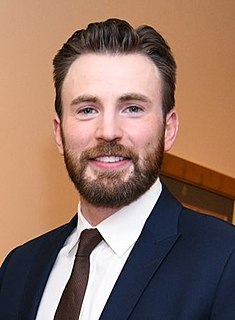
Christopher Robert Evans is an American actor. He began his career with roles in television series such as Opposite Sex in 2000. Following appearances in several teen films, including 2001's Not Another Teen Movie, he gained attention for his portrayal of Marvel Comics character the Human Torch in Fantastic Four (2005) and Fantastic Four: Rise of the Silver Surfer (2007). Evans made further appearances in film adaptations of comic books and graphic novels: TMNT (2007), Scott Pilgrim vs. the World (2010), and Snowpiercer (2013).
Blake Judd, American actor, director, and producer births
Patrick Blake Judd is a writer, producer, director who resides in Kentucky and works primarily out of Nashville, Tennessee.
David Madden, founder and executive director of the National History Bee and the National History Bowl births
David Madden is an American game show contestant, academic competition organizer, and art historian. He is a former 19-day champion on Jeopardy! and holds the seventh-longest streak in Jeopardy history. Madden is the founder and executive director of the National History Bee and Bowl, the International History Bee and Bowl, the United States Geography Championships, the US Academic Bee and Bowl, the National Science Bee, the National Humanities Bee, the National Political Science Bee, the International History Olympiad, and the International Geography Bee. These are all organized under the umbrella organization of International Academic Competitions.

The National History Bee and Bowl (NHBB) are nationwide history quiz competitions for high school, middle school, and elementary students in the United States. International Academic Competitions oversees both NHBB and the comparable International History Bee and Bowl for students outside the United States. Both the National History Bee and the National History Bowl were contested for the first time in the 2010-2011 academic year. Students first compete at regional qualifying tournaments, from which the top students advance to the National Championships for the History Bee and History Bowl, which are held each spring. The competitions were founded in June 2010 by David Madden, a former 19-day champion on Jeopardy!, who serves as Executive Director for both The National History Bee and The National History Bowl. At high school level tournaments of the National History Bee and Bowl, students also have the opportunity to compete in the National Qualifying Exam of the United States Geography Championships. Beginning in the fall of 2013, NHBB also introduced the US History Bee, a competition for high school students focusing solely on American history.
Radim Vrbata, Czech ice hockey player births

Radim Vrbata is a Czech former professional ice hockey right winger. He had a 16-year career in the National Hockey League (NHL). Vrbata was originally drafted in 1999 by the Colorado Avalanche, with whom he has also played, along with the Carolina Hurricanes, Chicago Blackhawks, Arizona Coyotes, Tampa Bay Lightning, Vancouver Canucks and Florida Panthers during his NHL career. Radim Vrbata was also an NHL All-Star in 2015.
Olivério Pinto, Brazilian zoologist and physician (b. 1896) deaths
Olivério Mário de Oliveira Pinto was a Brazilian zoologist and physician.
Florent Malouda, French footballer births

Florent Johan Malouda is a French football coach and former professional player.
Diego Mendieta, Paraguayan footballer (d. 2012) births

Diego Mendieta was a Paraguayan professional footballer who played as a forward. His death on 3 December 2012 reportedly caused by cytomegalovirus, an easily treatable disease, sparked international outrage after it was made known that his club refused to pay his hospital fees, thus resulting in his demise. The club also owed Mendieta an estimated US$12,500 in salaries which had prevented him from returning to his native Paraguay. The International Federation of Professional Footballers (FIFPro), a worldwide representative organisation for professional football players, dubbed his death as a "disgrace for football".
Jamario Moon, American basketball player births

Jamario Raman Moon is an American former professional basketball player. He played college basketball for one season at Meridian Community College and began his professional career with teams in the United States Basketball League and NBA Development League, the Harlem Globetrotters, and Mexican basketball team Fuerza Regia before signing with the Toronto Raptors in 2007. He has since played for the Miami Heat, Cleveland Cavaliers, Los Angeles Clippers and Charlotte Bobcats of the NBA, along with the Los Angeles D-Fenders of the NBA D-League.
Juan Carlos Navarro, Spanish basketball player births

Juan Carlos Navarro Feijoo, commonly known as either Juan Carlos Navarro or J. C. Navarro, is a Spanish former professional basketball player. During his playing career, at a height of 6 ft 4 in (1.93 m) tall, he played at the shooting guard position. On March 14, 2014, he was named a EuroLeague Basketball Legend. He is the current team manager of FC Barcelona Bàsquet.
Darius Vassell, English footballer births

Darius Martin Clarke Vassell is an English former professional footballer who played as a forward for Aston Villa, Manchester City, Ankaragücü and Leicester City.
Markus Winkelhock, German racing driver births

Markus Winkelhock is a German professional racing driver. He is the son of Manfred Winkelhock and nephew of Joachim Winkelhock, both of whom were Formula One drivers in the 1980s. During his brief Formula One career he led the 2007 European Grand Prix for several laps before retiring with mechanical problems. Having switched to sports and touring car racing, he has also won the FIA GT1 World Championship in 2012 with team-mate Marc Basseng.
Walter Rodney, Guyanese historian and activist (b. 1942) deaths
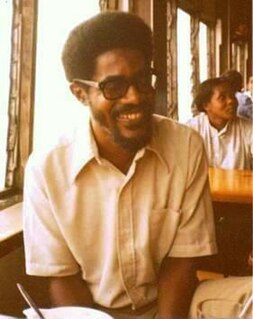
Walter Anthony Rodney was a Guyanese historian, political activist and academic. His notable works include How Europe Underdeveloped Africa, first published in 1972. Rodney was assassinated in Georgetown, Guyana, in 1980.
Esther Anderson, Australian actress births
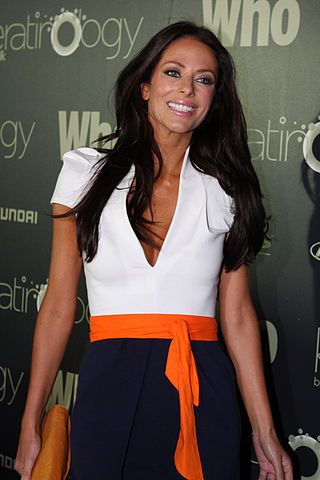
Esther Jackie Anderson is an Australian actress and model, known for her role as Charlie Buckton on the Australian soap opera Home and Away from 2008 until 2012. She was nominated for two Gold Logie Awards in 2010 and 2012. After leaving Home and Away, Anderson starred in the NBC television drama Siberia and was a contestant on The Celebrity Apprentice Australia.
Nila Håkedal, Norwegian volleyball player births

Nila Ann Håkedal is a Norwegian female beach volleyball player.
Miguel Pate, American long jumper births
Miguel Pate is an American track and field athlete. His speciality is the long jump, although during his high school and collegiate career he also competed in the triple jump, high jump, 100 m, 200 m, 4 × 100 m relay, and 4 × 400 m.
Ryan Pickett, American director, producer, and screenwriter births
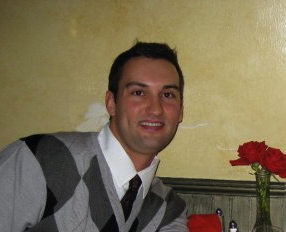
Ryan Pickett is an American film director, writer & producer, and television actor.
Demetrio Stratos, Egyptian-Italian singer-songwriter and pianist (b. 1945) deaths

Efstratios Dimitriou, known professionally as Demetrio Stratos, was a Greek lyricist, multi-instrumentalist, music researcher, and co-founder, frontman and lead singer of the Italian progressive rock band Area – International POPular Group.
Ethan Embry, American actor births

Ethan Embry is an American film and television actor. He is known for his role as Mark in Empire Records, Preston in Can't Hardly Wait, The Bass Player in That Thing You Do!, and as Bobby Ray in Sweet Home Alabama.
Romain Mesnil, French pole vaulter births

Romain Mesnil is a retired, French pole vaulter. His personal outdoor best is 5.95 metres, achieved in August 2003 in Castres. His personal indoor best is 5.86 metres, set in March 2001 in Toulouse. His coach was Georges Martin.
Earthwind Moreland, American football player births
Earthwind C. Moreland is a former National Football League cornerback for the New England Patriots and Arena Football League cornerback and wide receiver for the Las Vegas Gladiators. He was drafted by Team Alabama of the AAFL in 2008.
Kym Marsh, English singer-songwriter and actress births

Kimberley Gail Ratcliff is an English actress, television presenter and singer. In 2001, she won a place in the band Hear'Say as a result of appearing on the reality television series Popstars. Hear'Say enjoyed brief success, achieving two UK number one singles and a UK number one album, but Marsh left the band in 2002 to pursue a solo career. She released an album titled Standing Tall in 2003, which peaked at number nine in the UK and spawned two UK top ten singles.
Ante Covic, Australian footballer births
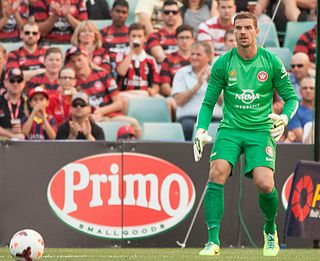
Ante Covic is an Australian former soccer goalkeeper.
Jeff Davis, American screenwriter and producer births
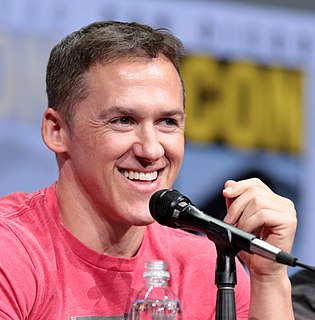
Jeff Davis is an American writer and television producer. He is best known for creating the drama series Criminal Minds and Teen Wolf, the latter being a reboot of the 1985 film of the same name.
Jennifer Nicole Lee, American model, actress, and author births

Jennifer Nicole Lee is an American fitness model, motivational speaker, and author. She is known for losing 70 pounds and launching a career as a fitness guru after bearing two children.
Jaan Pehk, Estonian singer-songwriter and guitarist births

Jaan Pehk is an Estonian writer, singer and guitarist.
Riccardo Scimeca, English footballer births
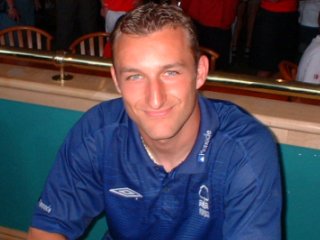
Riccardo Scimeca is an English football coach and professional footballer.
Valeri Bure, Russian-American ice hockey player births

Valeri Vladimirovich "Val" Bure is a Russian-American former ice hockey right winger. He played 10 seasons in the National Hockey League (NHL) for the Montreal Canadiens, Calgary Flames, Florida Panthers, St. Louis Blues, and Dallas Stars. A second round selection of the Canadiens, 33rd overall, at the 1992 NHL Entry Draft, Bure appeared in one NHL All-Star Game, in 2000. He led the Flames in scoring with 35 goals and 75 points in 1999–2000, a season in which he and brother Pavel combined to set an NHL record for goals by a pair of siblings with 93. He is also the husband of actress Candace Cameron Bure since 1996.
Sam Adams, American football player births
Sam Adams is a former American football defensive tackle who played in the National Football League (NFL) for 14 seasons. He played college football at Texas A&M, where he earned consensus All-American honors, and was selected eighth overall by the Seattle Seahawks in the 1994 NFL Draft. Following six seasons as a member of the Seahawks, he earned consecutive Pro Bowl selections and All-Pro honors during his two seasons with the Baltimore Ravens. Adams was also part of the team that won a Super Bowl title in Super Bowl XXXV and made another championship appearance in his one season for the Oakland Raiders in 2002. As a member of the Buffalo Bills from 2003 to 2004, Adams was named to a third Pro Bowl. He spent his last two seasons with Cincinnati Bengals and Denver Broncos.
Tanner Foust, American race car driver and television host births

Tanner Foust is an American professional racing driver, stunt driver, and television host. He competes in rally, drift, ice racing, time attack, hill climb and rallycross with multiple podium placements, national championships, and world records. He was a co-host of the American version of the motoring television series Top Gear.
Mattias Hellberg, Swedish singer-songwriter births

Mattias Hellberg is a Swedish musician. Hellberg has worked with a variety of Swedish bands and artists in different genres, both as a permanent member and as guest or session member.
Stuart Karppinen, Australian cricketer and coach births
Stuart James Karppinen is a former Australian cricketer who is also the former strength and conditioning coach of the Australian national cricket team. Born in Townsville, Karppinen moved to Canberra with his family at a young age. He played for the Australian Capital Territory Under-19s at the 1991–92 Barclays Bank Australian Under-19 Championships, taking one wicket in his only match. He was first selected for the Australian Capital Territory senior side during the 1993–94 season, although the ACT did not at the time have either first-class or List A status, and thus only played state teams' Second XIs and other sides touring Canberra. Karppinen was also the recipient of an Australian Institute of Sport scholarship in 1997. The Australian Capital Territory was admitted to the Australian domestic limited-overs competition for the 1997–98 season, playing as the "Canberra Comets". Karppinen played six matches for the team in their inaugural season, taking nine wickets with a best of 2/35. Karppinen did not play any matches the following season, and transferred to Western Australia for the 1999–2000 season.
Ville Laihiala, Finnish singer-songwriter and guitarist births

Ville Laihiala is a Finnish musician. He was the vocalist and guitarist of the gothic metal band Poisonblack. He was also the frontman for Sentenced from 1996 until the group ended their career in 2005. When joining Sentenced, he was soon accepted by fans. He wrote very few songs for Sentenced, for example the song "Aika Multaa Muistot" on the album The Cold White Light.
Natalie MacMaster, Canadian fiddler births
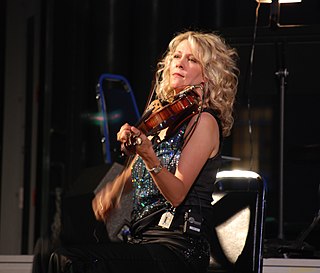
Natalie MacMaster is a Canadian fiddler from Troy, Inverness County, Nova Scotia who plays Cape Breton fiddle music. MacMaster has toured with the Chieftains, Faith Hill, Carlos Santana, and Alison Krauss, and has recorded with Yo-Yo Ma. She has appeared at the Celtic Colours festival in Cape Breton, Celtic Connections in Scotland, and MerleFest in the United States.
Marek Jerzy Minakowski, Polish philosopher, historian, genealogist births

Marek Jerzy Minakowski is a Polish historian and genealogist known for creating the Polish genealogy database Wielka Genealogia Minakowskiego.
Georg von Békésy, Hungarian biophysicist and academic, Nobel Prize laureate (b. 1899) deaths
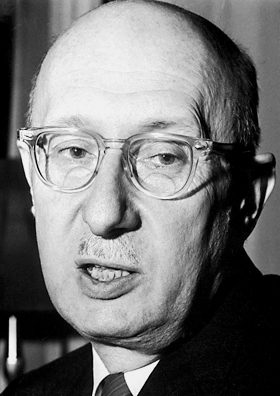
Georg von Békésy was a Hungarian-American biophysicist.

The Nobel Prize in Physiology or Medicine is awarded yearly by the Nobel Assembly at the Karolinska Institute for outstanding discoveries in physiology or medicine. The Nobel Prize is not a single prize, but five separate prizes that, according to Alfred Nobel's 1895 will, are awarded "to those who, during the preceding year, have conferred the greatest benefit to humankind". Nobel Prizes are awarded in the fields of Physics, Chemistry, Physiology or Medicine, Literature, and Peace.
Stephanie von Hohenlohe, Austrian-German spy (b. 1891) deaths
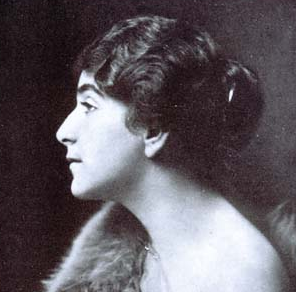
Stephanie Julianne von Hohenlohe was an Austrian princess by her marriage to the diplomat Prince Friedrich Franz von Hohenlohe-Waldenburg-Schillingsfürst, a member of the noble Hohenlohe family. She was born a commoner, allegedly of Jewish family background.
Nóra Köves, Hungarian tennis player births
Nóra Köves is a former Hungarian tennis player. She won a total of four singles and ten doubles ITF titles during her career and on 24 May 1999 peaked at No. 181 in the singles rankings. On 7 June 1999, Köves achieved a career-high doubles ranking of world No. 138.
Rivers Cuomo, American rock musician births

Rivers Cuomo is an American musician. He is the lead vocalist, guitarist, pianist, and songwriter of the rock band Weezer.
Chris Cairns, New Zealand cricketer births

Christopher Lance Cairns is a former New Zealand cricketer and former ODI captain, who played for the New Zealand cricket team as an all-rounder. Cairns finished his Test career with a batting average of 33.53 and a bowling average of 29.40. In 2000, he was named as one of five Wisden Cricketers of the Year. He has appeared in ICC Cricket World Cup tournaments on 4 occasions in 1992, 1996, 1999 and 2003. He is regarded as one of the greatest allrounders of the game.
Cayetana Guillén Cuervo, Spanish actress, director, and screenwriter births

Cayetana Guillén Cuervo is a Spanish actress, journalist and TV presenter.
Virginie Despentes, French author, screenwriter, and director births

Virginie Despentes is a French writer, novelist, and filmmaker. She is known for her work exploring gender, sexuality, and people who live in poverty or other marginalised conditions.
Laura Kightlinger, American actress, comedian, producer, and screenwriter births
Laura Kightlinger is an American actress, comedian, and writer. She was a writer and consulting producer on Will & Grace, while also occasionally appearing on the show as the character Nurse Sheila. She was also a writer on the CBS series 2 Broke Girls. Kightlinger also played the title role in the TV show The Minor Accomplishments of Jackie Woodman, which she created, wrote, and executive produced.
Svetlana Krivelyova, Russian shot putter births
Svetlana Vladimirovna Krivelyova is a former track and field athlete who specialised in the shot put.
Søren Rasted, Danish singer-songwriter, guitarist, and producer births
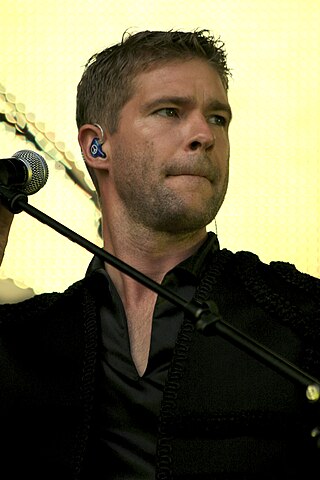
Søren Nystrøm Rasted is a Danish musician, singer, songwriter and record producer. He plays keyboards, guitar and sings backing vocals. He is a member of the Danish-Norwegian Eurodance group Aqua.
Pralhad Keshav Atre, Indian journalist, director, and producer (b. 1898) deaths

Prahlad Keshav Atre, popularly known as Āchārya Atre, was a prominent Marathi writer, poet, educationist, founder–editor of Maratha, and above all, a noted orator.
Fabio Baldato, Italian cyclist births

Fabio Baldato is an Italian former racing cyclist. In 2008, he was the oldest rider in a ProTour team. His cycling career ended when he crashed heavily in the Eneco Tour. He also competed at the 1988 Summer Olympics and the 1996 Summer Olympics.
Peter DeBoer, Canadian ice hockey player and coach births
George Peter DeBoer is a Canadian professional ice hockey coach and former player. He is the head coach for the Dallas Stars of the National Hockey League (NHL). He is also a co-owner of the Oshawa Generals of the Ontario Hockey League (OHL).
Darren Dreger, Canadian sportscaster births
Darren Dreger is a Canadian sportscaster for TSN, and currently serves as one of TSN's Hockey Insiders. He had previously hosted Leafs Lunch on CFMJ AM640 Toronto Radio.
David Gray, English-Welsh singer-songwriter, guitarist, and producer births

David Peter Gray is a British singer-songwriter. He released his first album in 1993 and received worldwide attention after the release of White Ladder six years later. White Ladder was the first of three UK chart-toppers in six years for Gray; it became the fifth best-selling album of the 2000s in the UK and ranked as the tenth best-selling album of the 21st century in the United Kingdom in October 2019. Gray is also known for the hit single "Babylon" from the White Ladder album. He has received four Brit Award nominations, including two nominations for Best British Male.
Tim Leveque, Canadian ice hockey player births
Tim Leveque is a Canadian former professional ice hockey player. He is most famous for being the Laval Chiefs enforcer that is called up later in the season in the hockey documentary "Les Chiefs".
Denise Pearson, English singer-songwriter births

Denise Lisa Maria Pearson, sometimes credited as Deniece Pearson, is an English singer-songwriter. She was the lead vocalist with the British pop/R&B group Five Star, which comprised herself and her four siblings. The group was created and managed by their father, Buster Pearson, in 1983. The group officially disbanded in 2001, though partial reunions have occurred since.
Marcel Theroux, Ugandan-English journalist and author births

Marcel Raymond Theroux is a British-American novelist and broadcaster. He wrote A Stranger in The Earth and The Confessions of Mycroft Holmes: A Paper Chase, for which he won the Somerset Maugham Award in 2002. His third novel, A Blow to the Heart, was published by Faber in 2006. His fourth, Far North, was published in June 2009. His fifth, Strange Bodies, was published in May 2013. He has also worked in television news in New York City and in Boston.
Taşkın Aksoy, German-Turkish footballer and manager births
Taşkın Aksoy is a German football manager and former player. He is the manager of Turkish club Gençlerbirliği.
Henry Bond, English photographer and curator births
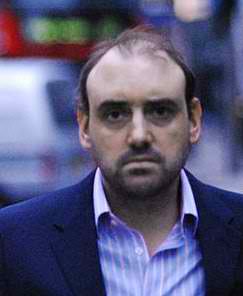
Henry Bond, FHEA is an English writer, photographer, and visual artist. In his Lacan at the Scene (2009), Bond made contributions to theoretical psychoanalysis and forensics.
Grigori Perelman, Russian mathematician births

Grigori Yakovlevich Perelman is a Russian mathematician who is known for his contributions to the fields of geometric analysis, Riemannian geometry, and geometric topology. He is widely regarded as one of the greatest living mathematicians.
Naoki Hattori, Japanese race car driver births

Naoki Hattori is a motoring journalist and racing driver from Japan.
Infanta Cristina Federica of Spain births

Infanta Cristina of Spain is the younger daughter of the former King and Queen of Spain Juan Carlos I and Sofía. As of 2015 she is sixth in the line of succession to the Spanish throne, after her brother King Felipe VI's children, her sister Elena, and Elena's children.
Vassilis Karapialis, Greek footballer births
Vassilis Karapialis is a Greek retired footballer who played as an attacking midfielder for Larissa, Olympiacos Piraeus and the Greece national football team. He is considered as one of the best Greek midfielders of the 1990s.
Lukas Ligeti, Austrian-American drummer and composer births

Lukas Ligeti is an Austrian-American composer and percussionist. His work incorporates elements of jazz, contemporary classical and various world musics, especially African traditional and popular music styles.
Maninder Singh, Indian cricketer births
Maninder Singh pronunciation (help·info) is a former Indian cricket player and a cricket commentator. Singh has represented India in 35 Test matches and 59 One Day Internationals. With his slow left-arm orthodox spin, Maninder was considered as an heir to Bishan Singh Bedi, who then held the record as India's leading spinner in terms of wickets. Maninder Singh retired prematurely due to personal reasons. Singh holds the Test record for the most Tests in a complete career without aggregating 100 runs.
Martin Buber, Austrian-Israeli philosopher and theologian (b. 1878) deaths

Martin Buber was an Austrian Jewish and Israeli philosopher best known for his philosophy of dialogue, a form of existentialism centered on the distinction between the I–Thou relationship and the I–It relationship. Born in Vienna, Buber came from a family of observant Jews, but broke with Jewish custom to pursue secular studies in philosophy. In 1902, he became the editor of the weekly Die Welt, the central organ of the Zionist movement, although he later withdrew from organizational work in Zionism. In 1923, Buber wrote his famous essay on existence, Ich und Du, and in 1925, he began translating the Hebrew Bible into the German language reflecting the patterns of the Hebrew language.
David Drummond, Australian farmer and politician (b. 1890) deaths

David Henry Drummond was an Australian politician and farmer. He was a member of the Country Party and served in both the New South Wales Legislative Assembly (1920–1949) and the Australian House of Representatives (1949–1963).
Christian Wilhelm Berger, Romanian organist, composer, and educator births
Christian Wilhelm Berger is a Romanian composer, organist, and a lecturer at the Bucharest Academy.
Kathy Burke, English actress, director, and playwright births
Katherine Lucy Bridget Burke is an English actress, comedian, writer, producer, and director. She achieved fame with her appearances on sketch shows such as French and Saunders (1988–1999) and her recurring role as Magda on the BBC sitcom Absolutely Fabulous (1992–2012), as well as her frequent collaborations with fellow comedian Harry Enfield. For her portrayal of Valerie in the 1997 film Nil by Mouth, she won Best Actress at the Cannes Film Festival and was nominated for a BAFTA for Best Actress in a Leading Role.
Piyush Goyal, Indian politician, Minister of Railways births
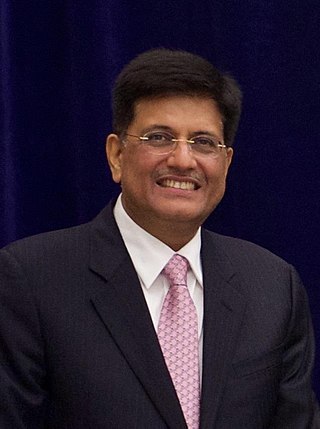
Piyush Vedprakash Goyal is a politician, chartered accountant and cabinet minister of the Government of India having portfolios such as Minister of Textiles, Minister of Commerce and Industry and Minister of Consumer Affairs, Food and Public Distribution. He was elevated to the Cabinet Minister position on 3 September 2017. Currently a Member of Parliament for Rajya Sabha from the state of Maharashtra, he is also the current Leader of the House in Rajya Sabha.
Šarūnas Marčiulionis, Lithuanian basketball player births

Raimondas Šarūnas Marčiulionis is a Lithuanian retired professional basketball player. Widely considered one of the greatest international players, he was one of the first Europeans to become a regular in the National Basketball Association (NBA). On August 8, 2014, Marčiulionis was inducted into the Naismith Memorial Basketball Hall of Fame, and became a member of the FIBA Hall of Fame in 2015.
Bettina Bunge, Swiss-German tennis player births
Bettina Bunge is a retired German tennis player. Born in Adliswil, Switzerland, she was part of a large group of successful German players in the 1980s, which also included Steffi Graf, Claudia Kohde-Kilsch, Sylvia Hanika, and Eva Pfaff.
Sarah Connolly, English soprano and actress births

Dame Sarah Patricia Connolly is an English mezzo-soprano. Although best known for her baroque and classical roles, Connolly has a wide-ranging repertoire which has included works by Wagner as well as various 20th-century composers. She was appointed a Commander of the Order of the British Empire (CBE) in the 2010 New Year Honours and a Dame Commander of the Order of the British Empire (DBE) in the 2017 Birthday Honours for services to music.
Audrey Niffenegger, American author and academic births

Audrey Niffenegger is an American writer, artist and academic. Her debut novel, The Time Traveler's Wife, published in 2003, was a bestseller.
Davey Hamilton, American race car driver births
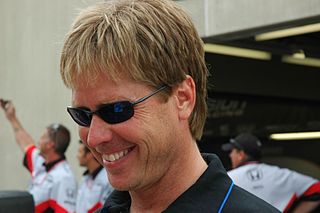
David Jay "Davey" Hamilton is a race car driver who competed in the Indy Racing League IndyCar Series and Stadium Super Trucks. He has made 56 series starts and while never winning a race, finished second three times. He placed second in series points in the 1996–1997 season and again in 1998 season.
Glenn Michibata, Canadian-American tennis player and coach births
Glenn Michibata is a former professional tennis player and former head coach of the Princeton University Tigers tennis team.
Ally Sheedy, American actress and author births

Alexandra Elizabeth Sheedy is an American actress. Following her film debut in 1983's Bad Boys, she became known as one of the Brat Pack group of actors and starred in WarGames (1983), The Breakfast Club (1985) and Short Circuit (1986). For her performance in Lisa Cholodenko's High Art (1998), Sheedy won the Independent Spirit Award for Best Female Lead.
Hannah Storm, American journalist and author births

Hannah Lynn Storen Hicks, known professionally as Hannah Storm, is an American television sports journalist, serving as the anchor of ESPN's SportsCenter Face to Face. She was also host of the NBA Countdown pregame show on ABC as part of the network's National Basketball Association (NBA) Sunday game coverage. She is also the play-by-play announcer on Amazon Prime Video during Thursday Night Football with Andrea Kremer.
Jacques Rougeau, Canadian wrestler births

Jacques Rougeau Jr. is a Canadian former professional wrestler best known for his appearances in the 1980s and 1990s with the World Wrestling Federation. He began his career under his real name as half of the tag team The Fabulous Rougeaus with his brother Raymond Rougeau. In 1991, he began a singles career as The Mountie, winning the WWF Intercontinental Heavyweight Championship once. In 1993, he formed three time WWF Tag Team Championship winning tag team The Quebecers with Pierre Ouellet.
Boyko Borissov, Bulgarian footballer and politician, 50th Prime Minister of Bulgaria births

Boyko Metodiev Borisov is a Bulgarian politician who served as the prime minister of Bulgaria from 2009 to 2013, 2014 to 2017, and 2017 to 2021, making him Bulgaria's second-longest serving prime minister to date.

The prime minister of Bulgaria is the head of government of Bulgaria. They are the leader of a political coalition in the Bulgarian parliament – known as the National Assembly of Bulgaria – and the leader of the cabinet.
Maurice G. Dantec, French-born Canadian science fiction writer (d. 2016) births
Maurice Georges Dantec was a French-born Canadian science fiction writer and musician.
Steve Georganas, Australian politician births

Steven Georganas is an Australian politician and is the Australian Labor Party member for the House of Representatives seat of Adelaide in South Australia since the 2019 Australian federal election. Previously, he had been the member for Hindmarsh from 2004 to 2013 and again from 2016 to 2019.
Klaus Iohannis, Romanian educator and politician, 5th President of Romania births

Klaus Werner Iohannis is a Romanian politician, physicist and former teacher who has been serving as the president of Romania since 2014. Ideologically a conservative, he became leader of the National Liberal Party (PNL) in 2014, after serving as leader of the Democratic Forum of Germans in Romania (FDGR/DFDR) between 2002 and 2013. Prior entering politics, Iohannis was a physics teacher.

The president of Romania is the head of state of Romania. Following a modification to the Romanian Constitution in 2003, the president is directly elected by a two-round system and serves for five years. An individual may serve two terms. During their term in office, the president may not be a formal member of a political party.
Edwin Keppel Bennett, English poet and academic (b. 1887) deaths
Edwin Keppel Bennett, noms de plume: Francis Bennett, Francis Keppel, was an English writer, poet, Germanist, and a prominent academic. He served as the president of Gonville and Caius College, Cambridge between 1948 and 1956.
Ron Areshenkoff, Canadian ice hockey player (d. 2019) births
Ronald Areshenkoff was a Canadian professional ice hockey centre. He was drafted in the second round, 32nd overall, by the Buffalo Sabres in the 1977 NHL amateur draft. He played in four games in the National Hockey League with the Edmonton Oilers, going scoreless. He died in 2019 in his hometown of Grand Forks after a long illness.
Roy Cooper, American lawyer and politician, 75th Governor of North Carolina births

Roy Asberry Cooper III is an American attorney and politician, serving as the 75th governor of North Carolina since 2017. A member of the Democratic Party, he served as the 49th attorney general of North Carolina from 2001 to 2017. He also served in the North Carolina General Assembly in both the House of Representatives (1987–1991) and Senate (1991–2001).

The Governor of North Carolina is the head of government of the U.S. state of North Carolina. The governor directs the executive branch of the government and is the commander in chief of the military forces of the state. The current governor, Democrat Roy Cooper took office on January 1, 2017, and had a public swearing-in ceremony on January 7, 2017.
Bruce Flowers, American basketball player births
Bruce Flowers is an American former professional basketball player. At a height of 2.04 m tall, he played as a power forward. Flowers is one of the few American players to have won all three of the different major European titles during his playing era, meaning the EuroLeague, as well as the now defunct FIBA Saporta Cup and FIBA Korać Cup competitions.
Andrzej Morozowski, Polish journalist and author births

Andrzej Morozowski is a Polish journalist, television personality and writer, connected with Radio ZET and TVN 24.
Dicky Thompson, American golfer births
Dicky Thompson is an American professional golfer who played on the PGA Tour and the Nationwide Tour.
Irving Baxter, American high jumper and pole vaulter (b. 1876) deaths

Irving Knott Baxter was an American athlete, who won the gold medal in both the men's high jump and the pole vault at the 1900 Summer Olympics, in Paris, France.
Blair Chapman, Canadian ice hockey player births

Blair Douglas Chapman is a retired professional ice hockey player.
Sal Paolantonio, American lieutenant and journalist births

Sal Paolantonio is a Philadelphia-based bureau reporter for ESPN. Since joining ESPN in 1995, Paolantonio has become a staple in their NFL coverage, as he contributes to shows such as SportsCenter, NFL Live, Sunday NFL Countdown and Monday Night Countdown. In 2004, he added studio work to his duties, replacing Suzy Kolber as the host of NFL Matchup, an X's and O's football show; joining him are Louis Riddick and Greg Cosell. His best known work for ESPN was his coverage of the Terrell Owens saga with the Philadelphia Eagles during the 2004 and 2005 seasons. Paolantonio has also been an adjunct professor at St. Joseph's University in Philadelphia since 2001.
Alan Hansen, Scottish footballer and sportscaster births

Alan David Hansen is a Scottish former footballer and BBC television football pundit. He played as a central defender for Partick Thistle, for the successful Liverpool team of the late 1970s and 1980s, and for the Scotland national team. As a football pundit, Hansen became known for his outspoken views, particularly on teams' defensive performances, frequently criticising what he believed was "diabolical" or "shocking" defending. He co-hosted Match of the Day from 1992 to 2014.
Leah Ward Sears, German-American lawyer and jurist births

Leah Ward Sears is an American jurist and former Chief Justice of the Supreme Court of Georgia. Sears was the first African-American female chief justice of a state supreme court in the United States. When she was first appointed as justice in 1992 by Governor Zell Miller, she became the first woman and youngest person to sit on Georgia's Supreme Court.
Andrzej Lepper, Polish politician, Deputy Prime Minister of the Republic of Poland (d. 2011) births

Andrzej Zbigniew Lepper was a Polish politician, Deputy Prime Minister, Minister of Agriculture, and the leader of Self-Defence of the Republic of Poland political party.
Deputy Prime Minister of the Republic of Poland is the deputy of the Prime Minister of Poland and member of the Council of Ministers of the Republic of Poland. They can also be one of the Ministers of the Republic of Poland. The Constitution of the Republic does not limit the number of persons who can hold the position of deputy prime minister simultaneously.
Ngozi Okonjo-Iweala, Nigerian economist and politician, Minister of Foreign Affairs for Nigeria births

Ngozi Okonjo-Iweala is a Nigerian-American economist, who has been serving as the Director-General of the World Trade Organization since March 2021. Notably, she is the first woman and first African to lead the World Trade Organization as Director-General. She sits on boards of: Danone, Standard Chartered Bank, MINDS: Mandela Institute for Development Studies, Carnegie Endowment for International Peace, Georgetown Institute for Women, Peace and Security, One Campaign, GAVI: Global Alliance for Vaccines and Immunization, Rockefeller Foundation, R4D: Results for Development, ARC: African Risk Capacity and Earthshot Prize plus others. She also previously sat on the Twitter Board of Directors, and stepped down in February, 2021 in connection with her appointment as Director General of the World Trade Organization.

The Nigerian foreign ministry is a statutory body created to re-inforce foreign decision making and implementation processes in Nigeria and handle the external promotion of Nigeria's domestic vision and ideals; it is headed by a federal executive cabinet minister. As of late its mission has geared towards increasing awareness about Nigeria's economic potential. It is part of the government's executive branch.
Tim Allen, American actor, comedian, and producer births

Timothy Alan Dick, known professionally as Tim Allen, is an American actor and comedian. He is known for playing Tim "The Toolman" Taylor on the ABC sitcom Home Improvement (1991–1999) and Mike Baxter on the ABC/Fox sitcom Last Man Standing (2011–2021). He voices Buzz Lightyear for the Toy Story franchise and played Scott Calvin and Santa Claus in The Santa Clause franchise (1994–present). Allen's other films include Tropical Snow (1988), Galaxy Quest (1999), Joe Somebody (2001), Zoom (2006), Wild Hogs (2007), The Six Wives of Henry Lefay (2009), Crazy on the Outside (2010), 3 Geezers! (2013), and El Camino Christmas (2017).
Jean-Marie Dedecker, Belgian martial artist and politician births
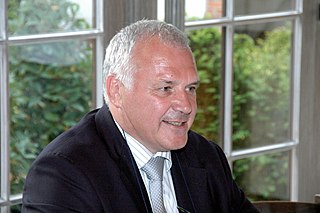
Jean-Marie Louis Dedecker is a Belgian politician.
Howard Leese, American guitarist and producer births

Howard M. Leese is an American–Irish guitarist, record producer, and musical director who played with Heart as guitarist and keyboardist for 23 years. He continues to record and tour as a solo artist, and as guitarist with The Paul Rodgers Band and Bad Company. In 2013, he was inducted into the Rock and Roll Hall of Fame as a member of Heart.
Richard Thomas, American actor, director, and producer births

Richard Earl Thomas is an American actor. He is best known for his leading role as budding author John-Boy Walton in the CBS drama series The Waltons for which he won an Emmy Award. He also received another Emmy nomination and two Golden Globe Award nominations, for that role.
Stellan Skarsgård, Swedish actor births

Stellan Skarsgård is a Swedish actor. He is known for his collaborations with director Lars von Trier appearing in Breaking the Waves (1996), Dancer in the Dark (2000), Dogville (2007), Melancholia (2011), and Nymphomaniac (2014). Skarsgård's early English-speaking film roles include The Unbearable Lightness of Being (1988), The Hunt for Red October (1990), Good Will Hunting (1997), Ronin (1998), and King Arthur (2004).
Ben Chifley, Australian engineer and politician, 16th Prime Minister of Australia (b. 1885) deaths
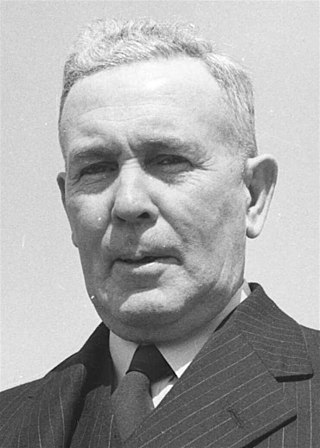
Joseph Benedict Chifley was an Australian politician who served as the 16th prime minister of Australia from 1945 to 1949. He held office as the leader of the Australian Labor Party (ALP) from 1945, following the death of John Curtin on 5 July, until his own death in 1951.

The prime minister of Australia is the head of government of the Commonwealth of Australia. The prime minister heads the executive branch of the federal government of Australia and is also accountable to federal parliament under the principles of responsible government. The current prime minister is Anthony Albanese of the Australian Labor Party, who became prime minister on 23 May 2022.
Nick Brown, English politician, Minister of Agriculture, Fisheries and Food births
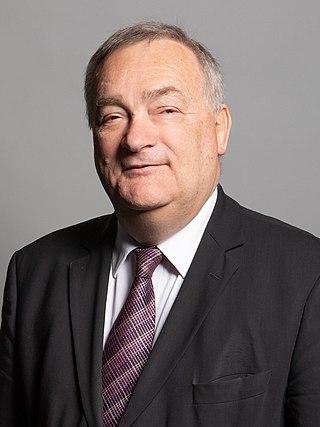
Nicholas Hugh Brown is a British Independent politician who has been the Member of Parliament (MP) for Newcastle upon Tyne East since 1983, making him the fifth longest serving MP in the House of Commons. He is the longest serving Chief Whip of the Labour Party, holding the position in three separate periods under six Labour leaders – Tony Blair, Gordon Brown, Harriet Harman, Ed Miliband, Jeremy Corbyn and Keir Starmer. He also held several ministerial positions whilst his party was in government from 1997 until 2010. On 26 May 2021, Brown was elected as chair of the Finance Committee. Brown sits in the House of Commons as an independent, having had the whip removed in September 2022, triggered by an investigation affecting his Labour membership.
The Minister of Agriculture, Fisheries and Food was a United Kingdom cabinet position, responsible for the Ministry of Agriculture, Fisheries and Food. The post was originally named President of the Board of Agriculture and was created in 1889. In 1903, an Act was passed to transfer to the new styled Board of Agriculture and Fisheries certain powers and duties relating to the fishing industry, and the post was renamed President of the Board of Agriculture and Fisheries.
Gerd Zewe, German footballer and manager births
Gerd Zewe is a German former football player and manager.
Ann Druyan, American popular science writer births
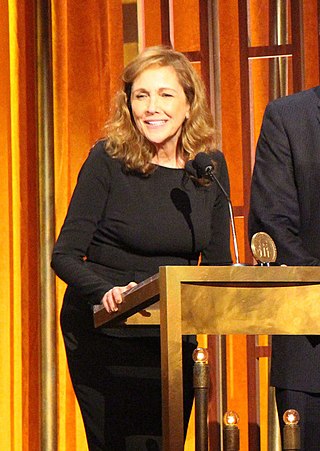
Ann Druyan is an Emmy and Peabody Award-winning American documentary producer and director specializing in the communication of science. She co-wrote the 1980 PBS documentary series Cosmos, hosted by Carl Sagan, whom she married in 1981. She is the creator, producer, and writer of the 2014 sequel, Cosmos: A Spacetime Odyssey and its sequel series, Cosmos: Possible Worlds, as well as the book of the same name. She directed episodes of both series.
Dennis Locorriere, American singer and musician births
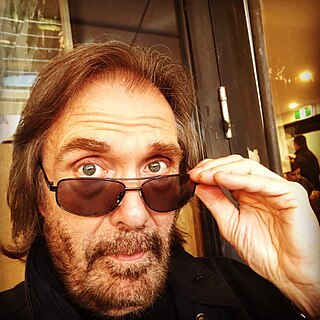
Dennis Michael Locorriere is the American lead vocalist and guitarist of the country rock group Dr. Hook.
Ulla Schmidt, German educator and politician, German Federal Minister of Health births

Ursula "Ulla" Schmidt is a German politician of the Social Democratic Party of Germany (SPD). From 2001 to 2009 she was Federal Minister of Health in the German Government. Between 2013 and 2017, she served as Vice-President of the German Bundestag.

The Federal Ministry of Health, abbreviated BMG, is a cabinet-level ministry of the Federal Republic of Germany. It is the highest German federal government department responsible for health. The ministry is officially located in Bonn and with a second office, which houses the ministry's management, location in Berlin.
Red Symons, English-Australian musician, television, and radio personality births

Redmond Symons is an English-born Australian musician, and television and radio personality. He was the lead guitarist in the band Skyhooks, the snide judge of 'Red Faces', and a judge on talent search show Australia's Got Talent. He hosted ABC Radio Melbourne's breakfast show from 2003 until 2017.
Garnet Bailey, Canadian-American ice hockey player and scout (d. 2001) births

Garnet Edward "Ace" Bailey was a Canadian professional ice hockey player and scout who was a member of Stanley Cup– and Memorial Cup– winning teams. He died at the age of 53 while aboard United Airlines Flight 175, which crashed into the South Tower of the World Trade Center in New York City during the September 11 attacks.
Joe Roth, American director and producer, co-founded Morgan Creek Productions births

Joseph Emanuel Roth is an American film executive, producer and director. He co-founded Morgan Creek Productions in 1988 and was chairman of 20th Century Fox (1989–1993), Caravan Pictures (1993–1994), and Walt Disney Studios (1994–2000) before founding Revolution Studios in 2000, then Roth Films.

Morgan Creek Entertainment is an American film production company that has released box-office hits including Young Guns, Dead Ringers, Major League, True Romance, Ace Ventura: Pet Detective, The Crush, Robin Hood: Prince of Thieves and The Last of the Mohicans. The studio was co-founded in 1988 by James G. Robinson and Joe Roth. Robinson leads the company as chairman and CEO. His two sons, Brian Robinson and David C. Robinson, run the day-to-day operations. The company name comes from Roth's favorite film, The Miracle of Morgan's Creek.
Osamu Dazai, Japanese author (b. 1909) deaths

Osamu Dazai was a Japanese author. A number of his most popular works, such as The Setting Sun (Shayō) and No Longer Human, are considered modern-day classics.
Sher Bahadur Deuba, Nepalese politician, 32nd Prime Minister of Nepal births

Sher Bahadur Deuba is a Nepali politician serving as the prime minister of Nepal since 13 July 2021. He has also been serving as the president of the Nepali Congress since 2016. Deuba has previously served four terms as the prime minister and is the Member of Parliament for the parliamentary constituency of Dadeldhura 1.

The Prime Minister of Nepal is the head of government of Nepal. The Prime Minister is the head of the Council of Ministers of Nepal and the chief adviser to the President of Nepal.
Paul L. Modrich, American biochemist and academic, Nobel Prize laureate births

Paul Lawrence Modrich is an American biochemist, James B. Duke Professor of Biochemistry at Duke University and Investigator at the Howard Hughes Medical Institute. He is known for his research on DNA mismatch repair. Modrich received the Nobel Prize in Chemistry 2015, jointly with Aziz Sancar and Tomas Lindahl.

The Nobel Prize in Chemistry is awarded annually by the Royal Swedish Academy of Sciences to scientists in the various fields of chemistry. It is one of the five Nobel Prizes established by the will of Alfred Nobel in 1895, awarded for outstanding contributions in chemistry, physics, literature, peace, and physiology or medicine. This award is administered by the Nobel Foundation, and awarded by the Royal Swedish Academy of Sciences on proposal of the Nobel Committee for Chemistry which consists of five members elected by the Academy. The award is presented in Stockholm at an annual ceremony on 10 December, the anniversary of Nobel's death.
Gabriel of Komana, Belgian-Dutch archbishop (d. 2013) births

Gabriel of Komana was an Eastern Orthodox archbishop of the Ecumenical Patriarchate who led the Patriarchal Exarchate for Orthodox Parishes of Russian Tradition in Western Europe from 2003 to 2013.
Whitley Strieber, American author births

Louis Whitley Strieber is an American writer best known for his horror novels The Wolfen and The Hunger and for Communion, a non-fiction account of his alleged experiences with non-human entities. He has maintained a dual career of author of fiction and advocate of paranormal concepts through his best-selling non-fiction books, his Unknown Country web site, and his podcast, Dreamland.
Christine Beasley, English nursing administrator births
Dame Christine Joan Beasley, is a British nurse and NHS healthcare administrator.
David Curry, English journalist and politician, Secretary of State for Communities and Local Government births
David Maurice Curry is a British Conservative Party politician. He was the Member of Parliament (MP) for Skipton and Ripon from 1987 to 2010.

The secretary of state for levelling up, housing and communities, also referred to as the levelling up secretary, is a secretary of state in the Government of the United Kingdom, responsible for the overall leadership and strategic direction of the Department for Levelling Up, Housing and Communities. The incumbent is a member of the Cabinet of the United Kingdom, seventh in the ministerial ranking, behind the secretary of state for defence.
Ban Ki-moon, South Korean politician and diplomat, 8th Secretary-General of the United Nations births

Ban Ki-moon is a South Korean politician and diplomat who served as the eighth secretary-general of the United Nations between 2007 and 2016. Prior to his appointment as secretary-general, Ban was his country's Minister of Foreign Affairs and Trade between 2004 and 2006.

The secretary-general of the United Nations is the chief administrative officer of the United Nations and head of the United Nations Secretariat, one of the six principal organs of the United Nations.
Harry Collins, English sociologist, author, and academic births

Harry Collins,, is a British sociologist of science at the School of Social Sciences, Cardiff University, Wales. In 2012 he was elected a Fellow of the British Academy.
Malcolm McDowell, English actor and producer births

Malcolm McDowell is a British actor, producer, and television presenter. He is best known for portraying Alex DeLarge in A Clockwork Orange. He was born in the Horsforth suburb of Leeds and raised in Liverpool. He later trained at the London Academy of Music and Dramatic Art before embarking on an acting career that has spanned over 50 years.
Jim Guy Tucker, American lawyer and politician, 43rd Governor of Arkansas births

James Guy Tucker Jr. is an American politician and attorney from Arkansas. A member of the Democratic Party, he served as the 43rd governor of Arkansas, the 15th lieutenant governor, state attorney general, and U.S. representative. Tucker resigned the governorship and was replaced by Mike Huckabee on July 16, 1996, after his conviction for fraud during the Whitewater affair.

The governor of Arkansas is the head of government of the U.S. state of Arkansas. The governor is the head of the executive branch of the Arkansas government and is charged with enforcing state laws. They have the power to either approve or veto bills passed by the Arkansas General Assembly, to convene the legislature, and to grant pardons, except in cases of treason and impeachment.
Kočo Racin, Macedonian author and activist (b. 1908) deaths

Kosta Apostolov Solev, primarily known as poet Kočo Racin, was a Macedonian author and socialist activist who is considered a founder of modern Macedonian literature. Racin wrote in prose too and created some significant works with themes from history, philosophy, and literary critique. He also wrote in standard Serbian language and in standard Bulgarian language. According to some Bulgarian authors, he had some pro-Bulgarian views and is regarded as a Bulgarian.
Yiannis Boutaris, Greek businessman and politician, Mayor of Thessaloniki births

Yiannis Boutaris is a Greek businessman and politician, former mayor of Thessaloniki.

The Mayor of Thessaloniki is the head of the Municipality of Thessaloniki, the most populated municipality in the Thessaloniki Urban Area and centre of the urban area, which makes up the "City of Thessaloniki".
Marcel Lachemann, American baseball player, coach, and manager births
Marcel Ernest Lachemann is an American professional baseball executive and a former player, manager and pitching coach in Major League Baseball (MLB). As a player, he was a relief pitcher for the Oakland Athletics.
Serge Lemoyne, Canadian painter (d. 1998) births
Serge Lemoyne was a Canadian artist from Quebec. He worked as a performance artist as well as creating paintings, assemblages and prints.
Marv Tarplin, American guitarist and songwriter (d. 2011) births

Marvin Tarplin was an American musician, best known as the guitarist for the Miracles from the 1950s through the early 1970s. He was one of the group's original members and co-wrote several of their biggest hits, including the 1965 Grammy Hall Of Fame-inducted "The Tracks of My Tears". He is also a winner of the BMI Songwriter's Award, and the ASCAP Award Of Merit, and was a 2012 posthumous inductee into the Rock and Roll Hall of Fame with the Miracles.
Bobby Freeman, American singer-songwriter, pianist, and producer (d. 2017) births

Robert Thomas Freeman was an American rock, soul and R&B singer, songwriter and record producer from San Francisco, best known for his two Top Ten hits, the first in 1958 on Josie Records called "Do You Want to Dance" and the second in 1964 for Autumn Records, "C'mon and Swim".
Dallas Long, American shot putter and physician births

Dallas Crutcher Long is a retired American track and field athlete, who mostly competed in the shot put. Between 1959 and 1964 he set six official and five unofficial world records. His first was at the 1959 Santa Barbara Easter Relays, the last in 1964 in the USA vs USSR dual meet. Long attended the University of Southern California. He competed at the 1960 Summer Olympics, where he won a bronze medal behind fellow Americans Bill Nieder and Parry O'Brien. One of his coaches was Frantisek (Frank) Louda, an American-Czech who had held the European hammer throw record in the 1930s. Long returned four years later to Tokyo for the 1964 Summer Olympics and won a gold medal. Domestically he won the AAU title in 1961 and the NCAA title in 1960–62.
Arthur Coningham, Australian cricketer (b. 1863) deaths

Arthur Coningham was an Australian cricketer who played in one Ashes Test match at Melbourne in 1894 in which he took a wicket with his very first ball. He took 2 for 17 in England's first innings but failed to add to that tally in the second.
Eleanor Holmes Norton, American lawyer and politician births

Eleanor Holmes Norton is an American lawyer and politician serving as a delegate to the United States House of Representatives, representing the District of Columbia since 1991. She is a member of the Democratic Party.
Erich Ribbeck, German footballer and manager births

Erich Ribbeck is a former German footballer and manager, best known for coaching in the German Bundesliga.
Andreas Whittam Smith, English journalist and publisher, co-founded The Independent births
Sir Andreas Whittam Smith, is an English financial journalist, who was one of the founders of The Independent newspaper, which began publication in October 1986 with Whittam Smith as editor. He is a former president of the British Board of Film Classification.

The Independent is a British online newspaper. It was established in 1986 as a national morning printed paper. Nicknamed the Indy, it began as a broadsheet and changed to tabloid format in 2003. The last printed edition was published on Saturday 26 March 2016, leaving only the online edition.
Christo, Bulgarian-French sculptor and painter (d. 2020) births

Christo Vladimirov Javacheff (1935–2020) and Jeanne-Claude Denat de Guillebon (1935–2009), known as Christo and Jeanne-Claude, were artists noted for their large-scale, site-specific environmental installations, often large landmarks and landscape elements wrapped in fabric, including the Wrapped Reichstag, The Pont Neuf Wrapped, Running Fence in California, and The Gates in New York City's Central Park.
Jeanne-Claude, Moroccan sculptor and painter (d. 2009) births

Christo Vladimirov Javacheff (1935–2020) and Jeanne-Claude Denat de Guillebon (1935–2009), known as Christo and Jeanne-Claude, were artists noted for their large-scale, site-specific environmental installations, often large landmarks and landscape elements wrapped in fabric, including the Wrapped Reichstag, The Pont Neuf Wrapped, Running Fence in California, and The Gates in New York City's Central Park.
Samak Sundaravej, Thai politician, 25th Prime Minister of Thailand (d. 2009) births
Samak Sundaravej was a Thai politician who briefly served as the Prime Minister of Thailand and Minister of Defense in 2008, as well as the leader of the People's Power Party in 2008.
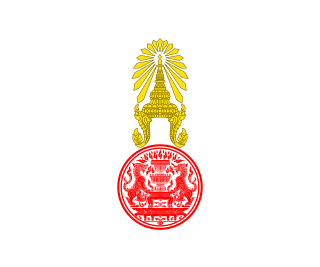
The prime minister of Thailand is the head of government of Thailand. The prime minister is also the chair of the Cabinet of Thailand. The post has existed since the Revolution of 1932, when the country became a constitutional monarchy. Prior to the coup d'état, the prime minister was nominated by a vote in the Thai House of Representatives by a simple majority, and is then appointed and sworn-in by the king of Thailand. The house's selection is usually based on the fact that either the prime minister is the leader of the largest political party in the lower house or the leader of the largest coalition of parties. In accordance with the 2017 Constitution, the Prime Minister can hold the office for no longer than eight years, consecutively or not. The post of Prime Minister is currently held by retired general Prayut Chan-o-cha, since the 2014 coup d'état.
Bill Blakeley, American basketball player and coach (d. 2010) births

Billy Buie Blakeley was an American basketball coach. He coached at the high school, college, and professional levels.
Lucjan Brychczy, Polish footballer and coach births

Lucjan Antoni Brychczy is a former Polish football player who is most notable for winning four top-tier titles with Legia Warsaw, but was also a keen archer.
Manuel Clouthier, Mexican businessman and politician (d. 1989) births
Manuel de Jesús Clouthier del Rincón was a Mexican agriculturalist, businessman and politician. His 1988 presidential campaign challenged the dominance of Mexico's PRI party in the nation's politics, with rhetoric and protests before, during and after the elections. Although officially coming in third, he remained a prominent political force in Mexico until his death in a car accident a year after the elections.
James Anthony Griffin, American bishop births

James Anthony Griffin is an American prelate of the Roman Catholic Church. Griffin served as bishop of the Diocese of Columbus in Ohio from 1983 to 2004.
Uriel Jones, American drummer (d. 2009) births

Uriel Jones was an American musician. Jones was a recording session drummer for Motown's in-house studio band, the Funk Brothers, during the 1960s and early 1970s.
Leonard Kleinrock, American computer scientist and engineer births
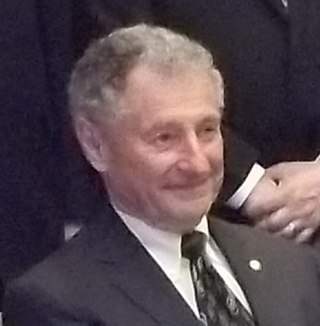
Leonard Kleinrock is an American computer scientist and a long-tenured professor at UCLA's Henry Samueli School of Engineering and Applied Science.
Tom King, Baron King of Bridgwater, English soldier and politician, Secretary of State for Defence births

Thomas Jeremy King, Baron King of Bridgwater, is a British politician. A member of the Conservative Party, he served in the Cabinet from 1983 to 1992, and was the Member of Parliament (MP) for the constituency of Bridgwater in Somerset from 1970 to 2001. He was made a life peer in 2001.

The secretary of state for defence, also referred to as the defence secretary, is a secretary of state in the Government of the United Kingdom, with overall responsibility for the business of the Ministry of Defence. The incumbent is a member of the Cabinet of the United Kingdom, sixth in the ministerial ranking.
Norman Lloyd-Edwards, Welsh lawyer and politician, Lord Lieutenant of South Glamorgan births

Sir Norman Lloyd-Edwards served as the Lord Lieutenant of South Glamorgan from 1990 to 2008.
This is a list of people who have served as Lord Lieutenant for South Glamorgan. The office was created on 1 April 1974.Sir Cennydd George Traherne, K.G., T.D.† 1 April 1974 – 1985 Lieutenant of South Glamorgan Sir Hugo Boothby, 14th Baronet 1 April 1974 – 30 May 1986? Susan Eva Williams 1985–1990 Sir Norman Lloyd-Edwards 11 September 1990 – 13 June 2008 Peter Beck 14 June 2008 - 4 July 2016 Morfudd Meredith 5 July 2016 -
Raymond Jolliffe, 5th Baron Hylton, English politician births

Raymond Hervey Jolliffe, 5th Baron Hylton, ARICS, DL is a British peer and landowner. He is one of 92 hereditary peers elected to remain in the House of Lords after the passing of the House of Lords Act 1999, sitting as a crossbencher. He is currently the longest serving Crossbench member of the House of Lords.
Bob McGrath, American singer and actor births

Robert Emmett "Bob" McGrath is an American actor, singer, musician, and children's author best known for playing original human character Bob Johnson on the long running educational television series Sesame Street.
Billy Williams, American baseball player and coach (d. 2013) births
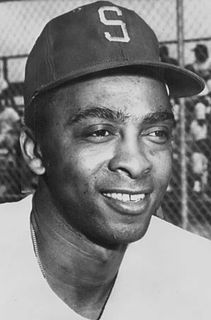
William Williams was an American professional baseball player. He appeared in four Major League Baseball (MLB) games for the 1969 Seattle Pilots. Williams also had an extensive minor league baseball playing career, spanning eighteen seasons from 1952 to 1969.
Nora Kovach, Hungarian-American ballerina (d. 2009) births
Nora Kovach was a Hungarian ballerina who defected in 1953 together with her husband and fellow ballet dancer Istvan Rabovsky, the first highly publicized defection of individuals in the field of dance to the West from the Soviet bloc.
Reed Scowen, Canadian politician (d. 2020) births
Philip Reed Scowen was a Canadian business executive, author and politician, living in Quebec.
Irvin D. Yalom, American psychotherapist and academic births

Irvin David Yalom is an American existential psychiatrist who is emeritus professor of psychiatry at Stanford University, as well as author of both fiction and nonfiction.
Kitasato Shibasaburō, Japanese physician and bacteriologist (b. 1851) deaths

Baron Kitasato Shibasaburō was a Japanese physician and bacteriologist. He is remembered as the co-discoverer of the infectious agent of bubonic plague in Hong Kong during an outbreak in 1894, almost simultaneously with Alexandre Yersin.
Gotthard Graubner, German painter and educator (d. 2013) births
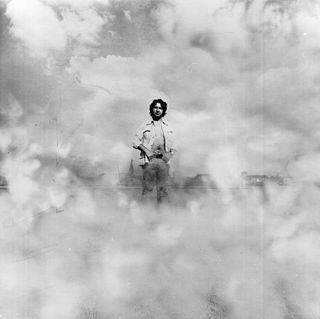
Gotthard Graubner was a German painter, born in Erlbach, in Saxony, Germany.
Ryszard Kukliński, Polish colonel and spy (d. 2004) births

Ryszard Jerzy Kukliński was a Polish colonel and Cold War spy for NATO. He was posthumously promoted to the rank of brigadier general by Polish President Andrzej Duda. Kukliński passed top secret Soviet documents to the CIA between 1972 and 1981, including the Soviet plans for the invasion of Western Europe. The former United States National Security Advisor Zbigniew Brzeziński described him as "the first Polish officer in NATO."
Paul Veyne, French archaeologist, historian, and academic births
Paul Veyne was a French archaeologist and historian, and a specialist of Ancient Rome. A student of the École Normale Supérieure and member of the École française de Rome, he was honorary professor at the Collège de France.
Henry Segrave, American-English racing driver (b. 1896) deaths
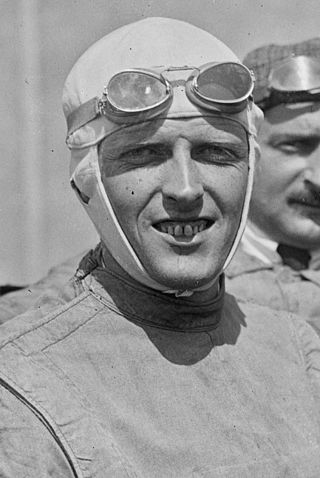
Sir Henry O'Neal de Hane Segrave was an early British pioneer in land speed and water speed records. Segrave, who set three land and one water record, was the first person to hold both titles simultaneously and the first person to travel at over 200 miles per hour (320 km/h) in a land vehicle. He died in an accident in 1930 shortly after setting a new world water speed record on Windermere in the Lake District, England. The Segrave Trophy was established to commemorate his life.
Ralph McQuarrie, American illustrator (d. 2012) births

Ralph Angus McQuarrie was an American conceptual designer and illustrator. His career included work on the original Star Wars trilogy, the original Battlestar Galactica television series, the film E.T. the Extra-Terrestrial, and the film Cocoon, for which he won an Academy Award.
Robert W. Scott, American farmer and politician, 67th Governor of North Carolina (d. 2009) births

Robert Walter "Bob" Scott was an American politician who served as the 67th Governor of North Carolina from 1969 to 1973. He was born and died in Haw River, North Carolina.

The Governor of North Carolina is the head of government of the U.S. state of North Carolina. The governor directs the executive branch of the government and is the commander in chief of the military forces of the state. The current governor, Democrat Roy Cooper took office on January 1, 2017, and had a public swearing-in ceremony on January 7, 2017.
Giacomo Biffi, Italian cardinal (d. 2015) births

Giacomo Biffi was an Italian Cardinal of the Roman Catholic Church. He was Archbishop Emeritus of Bologna, having served as archbishop there from 1984 to 2003. he was elevated to the cardinalate in 1985.
Renée Morisset, Canadian pianist (d. 2009) births
Renée Morisset, was a Canadian pianist. She and her husband, Victor Bouchard, were one of the foremost piano duo in Canadian classical music.
John Forbes Nash, Jr., American mathematician and academic, Nobel Prize laureate (d. 2015) births

John Forbes Nash Jr. was an American mathematician who made fundamental contributions to game theory, real algebraic geometry, differential geometry, and partial differential equations. Nash and fellow game theorists John Harsanyi and Reinhard Selten were awarded the 1994 Sveriges Riksbank Prize in Economic Sciences in Memory of Alfred Nobel. In 2015, he and Louis Nirenberg were awarded the Abel Prize for their contributions to the field of partial differential equations.

The Nobel Memorial Prize in Economic Sciences, officially the Sveriges Riksbank Prize in Economic Sciences in Memory of Alfred Nobel, is an economics award administered by the Nobel Foundation.
Slim Dusty, Australian singer-songwriter and guitarist (d. 2003) births

Slim Dusty, AO MBE was an Australian country music singer-songwriter, guitarist and producer. He was an Australian cultural icon and one of the country's most awarded stars, with a career spanning nearly seven decades and producing numerous recordings. He was known to record songs in the legacy of Australia, particularly of bush life and renowned Australian bush poets Henry Lawson and Banjo Paterson that represented the lifestyle. The music genre was coined the "bush ballad", a style first made popular by Buddy Williams, the first artist to perform the genre in Australia, and also for his many trucking songs.
Jérôme Lejeune, French pediatrician and geneticist (d. 1994) births

Jérôme Jean Louis Marie Lejeune was a French pediatrician and geneticist, best known for discovering the link of diseases to chromosome abnormalities, most especially the link between Down Syndrome and trisomy-21 and cri du chat syndrome, amongst several others, and for his subsequent strong opposition to, in his opinion, the improper and immoral use of amniocentesis prenatal testing for eugenic purposes through selective and elective abortion. He is venerated in the Catholic Church, having been declared Venerable by Pope Francis on 21 January 2021.
Paul Lynde, American actor and comedian (d. 1982) births

Paul Edward Lynde was an American comedian, actor and game show panelist. A character actor with a distinctively campy and snarky persona that often poked fun at his barely closeted homosexuality, Lynde was well known for his roles as Uncle Arthur on Bewitched, the befuddled father Harry MacAfee in Bye Bye Birdie and as a regular "center square" panelist on the game show The Hollywood Squares from 1968 to 1981. He also voiced animated characters for five Hanna-Barbera productions.
Kristine Miller, American actress (d. 2015) births

Kristine Miller was an American film actress, best-remembered for her appearances in film noir and Westerns. A discovery of Paramount producer Hal Wallis, she appeared in I Walk Alone (1948), Jungle Patrol (1948), Too Late for Tears (1949), Shadow on the Wall (1950), and the TV series Stories of the Century (1954–55).
Lloyd Conover, American chemist and inventor (d. 2017) births
Lloyd Hillyard Conover was an American chemist and the inventor of tetracycline. For this invention, he was inducted into the National Inventors Hall of Fame. Conover was the first to make an antibiotic by chemically modifying a naturally produced drug. He had close to 300 patents to his name.
Etienne Leroux, South African author (d. 1989) births
Etienne Leroux was an Afrikaans writer and a member of the South African Sestigers literary movement.
Lennart Strand, Swedish runner (d. 2004) births

Lennart Strand was a Swedish middle-distance runner who specialized in the 1500 m. In this event he won the national title in 1945–47, 1949 and 1950 and the European title in 1946, beating his compatriot Henry Eriksson. Two years later he finished second behind Eriksson at the 1948 Summer Olympics. In 1947 Strand equaled Gunder Hägg's 1500 m world record of 3:43.0 in Malmö.
Rolf Huisgen, German chemist and academic (d. 2020) births

Rolf Huisgen was a German chemist. His importance in synthetic organic chemistry extends to the enormous influence he had in post-war chemistry departments in Germany and Austria, due to a large number of his habilitants becoming professors. His major achievement was the development of the 1,3-dipolar cycloaddition reaction, also called the Huisgen cycloaddition.
Iosif Vorovich, Russian mathematician and engineer (d. 2001) births
Iosif Izrailevich-Girshevich Vorovich was a Soviet and Russian mathematician, scientific engineer, author and was made a member of the Russian Academy of Sciences in 1970. He was a specialist in continuum mechanics and the theory of elasticity. He was born in the city of Starodub, Gomel Governorate.
Ben Johnson, American actor and stuntman (d. 1996) births
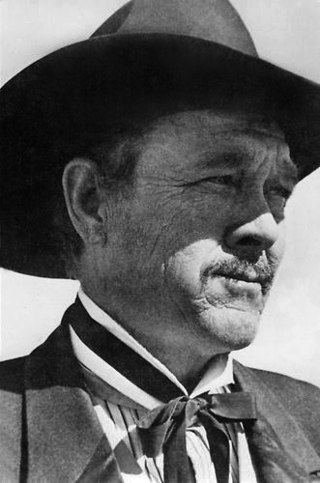
Francis Benjamin Johnson Jr. was an American film and television actor, stuntman, and world-champion rodeo cowboy. Tall and laconic, Johnson brought authenticity to many roles in Westerns with his droll manner and expert horsemanship.
Helmut Lent, German soldier and pilot (d. 1944) births
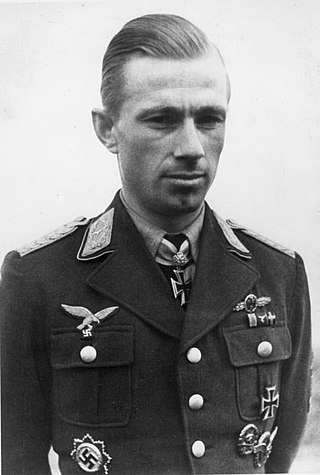
Helmut Lent was a German night-fighter ace in World War II. Lent shot down 110 aircraft, 102 of them at night. Born into a devoutly religious family, he showed an early passion for glider flying; against his father's wishes, he joined the Luftwaffe in 1936. After completing his training, he was assigned to the 1. Squadron, or Staffel, of Zerstörergeschwader 76 (ZG 76), a wing flying the Messerschmitt Bf 110 twin-engine heavy fighter. Lent claimed his first aerial victories at the outset of World War II in the invasion of Poland and over the North Sea. During the invasion of Norway he flew ground support missions before he was transferred to the newly established Nachtjagdgeschwader 1 (NJG 1), a night-fighter wing.
Percy Rodriguez, Canadian-American actor (d. 2007) births
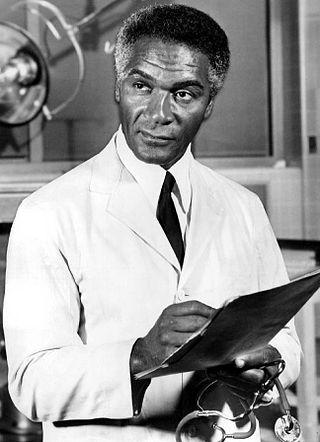
Percy Rodriguez was a Canadian actor who appeared in many television shows and films from the 1950s to the 1980s. He was of Afro-Portuguese heritage and was born in the Saint-Henri neighbourhood of Montreal. Born with the surname "Rodrigues," he adopted the spelling "Rodriguez" after it was misspelled in a Broadway program early in his career. Rodriguez was also known for his extensive voiceover work as the narrator of film trailers, television spots and documentaries.
Michael Alexandrovich, Russian Grand Duke (b. 1878) deaths
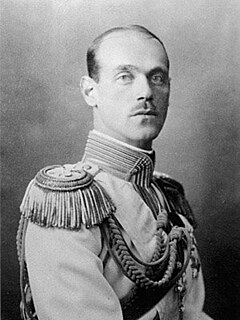
Grand Duke Michael Alexandrovich of Russia was the youngest son and fifth child of Emperor Alexander III of Russia and youngest brother of Nicholas II.
Teddy Turner, English actor (d. 1992) births
Joseph Edward Turner was a Yorkshire-born English actor and comedian who played dustbin man Chalky Whiteley in the soap opera, Coronation Street. He also played the part of the similarly named farmer Bill Whiteley in Emmerdale from 1989 to 1990. In the late 1970s he played the part of Mrs. Pumphrey's manservant Hodgekin in All Creatures Great and Small, Gordon in Open All Hours and subsequently the part of Banks in the popular 1980s sitcom, Never the Twain. He also made occasional appearances in Last of the Summer Wine. He died of emphysema in 1992 at the age of 75.
Augusto Roa Bastos, Paraguayan novelist (d. 2005) births

Augusto Roa Bastos was a Paraguayan novelist and short story writer. As a teenager he fought in the Chaco War between Paraguay and Bolivia, and he later worked as a journalist, screenwriter and professor. He is best known for his complex novel Yo el Supremo and for winning the Premio Miguel de Cervantes in 1989, Spanish literature's most prestigious prize. Yo el Supremo explores the dictations and inner thoughts of José Gaspar Rodríguez de Francia, the eccentric dictator of Paraguay who ruled with an iron fist, from 1814 until his death in 1840.
Louis-Philippe Hébert, Canadian sculptor (b. 1850) deaths

Louis-Philippe Hébert (1850–1917 was a Canadian sculptor. He is considered one of the best sculptors of his generation.
Wu Zhengyi, Chinese botanist and academic (d. 2013) births
Wu Zhengyi was a Chinese botanist and an academician of the Chinese Academy of Sciences (CAS). Wu specialized in Botanical Geography and Medicinal Botany. He is also known by the alternative spellings of 'Wu Cheng-yih', 'Wu Zheng Yi' and 'Cheng Yih Wu'.
Don Budge, American tennis player and coach (d. 2000) births

John Donald Budge was an American tennis player. He is most famous as the first tennis player — male or female, and still the only American male — to win the Grand Slam, and to win all four Grand Slam events consecutively overall. Budge was the second man to complete the career Grand Slam after Fred Perry, and remains the youngest to achieve the feat. He won ten majors, of which six were Grand Slam events and four Pro Slams, the latter achieved on three different surfaces. Budge is considered to have one of the best backhands in the history of tennis, with most observers rating it better than that of later player Ken Rosewall.
Frederic Franklin, English-American ballet dancer and director (d. 2013) births

Frederic Franklin, sometimes also called "Freddie", was a British-American ballet dancer, choreographer and director.
Ralph Edwards, American radio and television host (d. 2005) births

Ralph Livingstone Edwards was an American radio and television host, radio producer, and television producer, best known for his radio-TV game shows Truth or Consequences and reality documentary series This Is Your Life.
Yitzhak Pundak, Israeli general, diplomat and politician (d. 2017) births

Yitzhak Pundak was an Israeli general, diplomat and politician.
Hector de Saint-Denys Garneau, Canadian poet and painter (d. 1943) births

Hector de Saint-Denys Garneau was a French Canadian poet and painter, who "was posthumously hailed as a herald of the Quebec literary renaissance of the 1950s". He has been called Quebec's "first truly modern poet".
Luis Walter Alvarez, American physicist and academic, Nobel Prize laureate (d. 1988) births
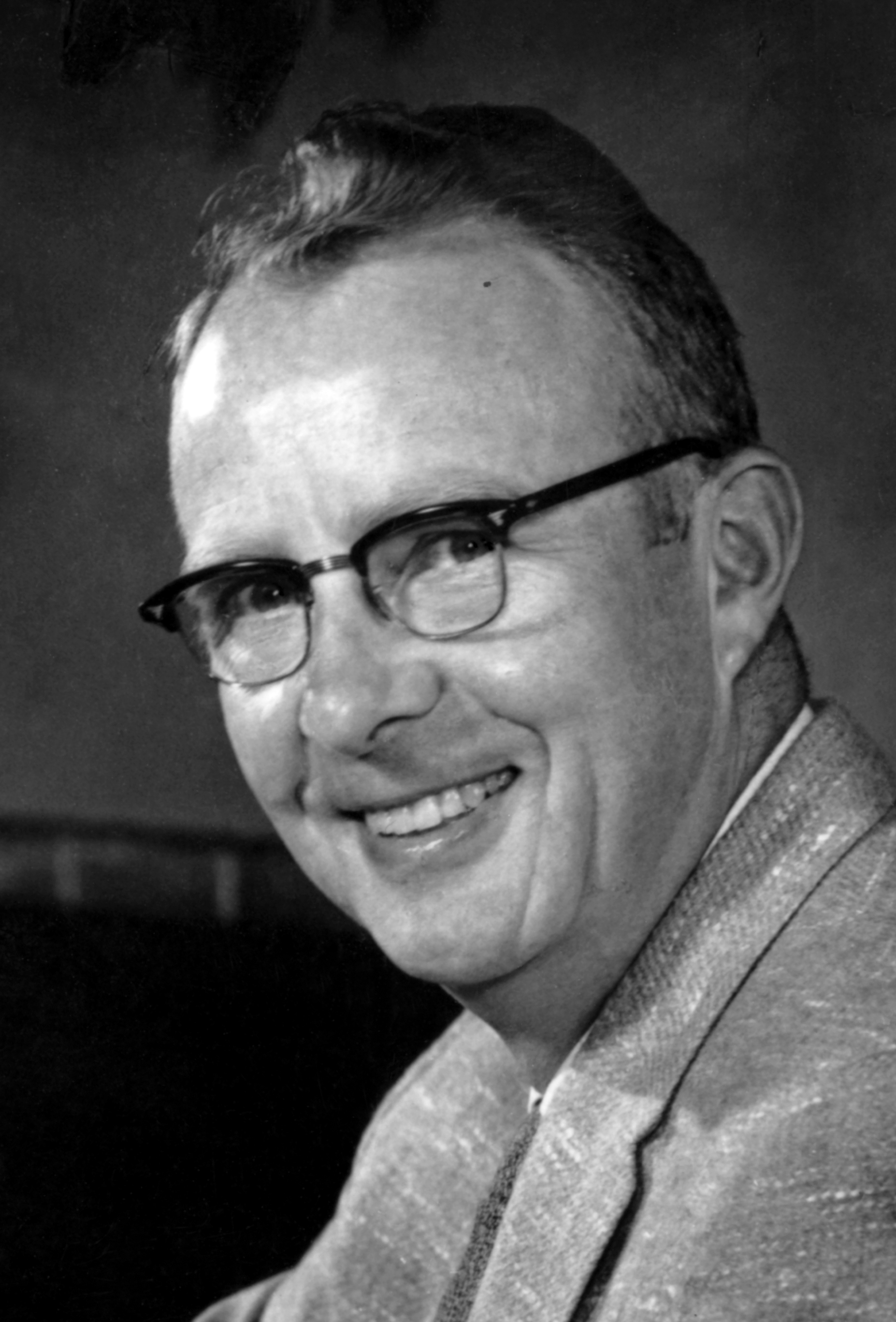
Luis Walter Alvarez was an American experimental physicist, inventor, and professor who was awarded the Nobel Prize in Physics in 1968 for his discovery of resonance states in particle physics using the hydrogen bubble chamber. In 2007 the American Journal of Physics commented, "Luis Alvarez was one of the most brilliant and productive experimental physicists of the twentieth century."

The Nobel Prize in Physics is a yearly award given by the Royal Swedish Academy of Sciences for those who have made the most outstanding contributions for humankind in the field of physics. It is one of the five Nobel Prizes established by the will of Alfred Nobel in 1895 and awarded since 1901, the others being the Nobel Prize in Chemistry, Nobel Prize in Literature, Nobel Peace Prize, and Nobel Prize in Physiology or Medicine. Physics is traditionally the first award presented in the Nobel Prize ceremony.
Maurice Copeland, American actor (d. 1985) births
Maurice Copeland was an American actor. He had supporting roles in films such as Arthur, The Pope of Greenwich Village and Trading Places.
Erwin Wilhelm Müller, German physicist and academic (d. 1977) births
Erwin Wilhelm Müller was a German physicist who invented the Field Emission Electron Microscope (FEEM), the Field Ion Microscope (FIM), and the Atom-Probe Field Ion Microscope. He and his student, Kanwar Bahadur, were the first people to experimentally observe atoms.
Gonzalo Torrente Ballester, Spanish journalist, author, and playwright (d. 1999) births
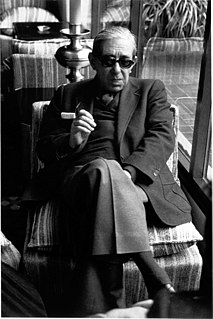
Gonzalo Torrente Ballester was a Spanish writer associated with the Generation of '36 movement.
Mary Wickes, American actress (d. 1995) births

Mary Wickes was an American actress. She often played supporting roles as prim, professional women, secretaries, nurses, nuns, therapists, teachers and housekeepers, who made sarcastic quips when the leading characters fell short of her high standards.
Mary Whitehouse, English activist, founded the National Viewers' and Listeners' Association (d. 2001) births

Constance Mary Whitehouse was a British teacher and conservative activist. She campaigned against social liberalism and the mainstream British media, both of which she accused of encouraging a more permissive society. She was the founder and first president of the National Viewers' and Listeners' Association, through which she led a longstanding campaign against the BBC. A hard-line social conservative, she was termed a reactionary by her socially liberal opponents. Her motivation derived from her Christian beliefs, her aversion to the rapid social and political changes in British society of the 1960s, and her work as a teacher of sex education.
Mediawatch-UK, formerly known as the National Viewers' and Listeners' Association, was a pressure group in the United Kingdom, which campaigned against the publication and broadcast of media content that it viewed as harmful and offensive, such as violence, hate speech against any race, creed or sexual orientation, xenophobia, and profanity.
E. M. S. Namboodiripad, Indian theorist and politician, 1st Chief Minister of Kerala (d. 1998) births

Elamkulam Manakkal Sankaran Namboodiripad, popularly known as EMS, was an Indian communist politician and theorist, who served as the first Chief Minister of Kerala in 1957–1959 and then again in 1967–1969. As a member of the Communist Party of India (CPI), he became the first non-Congress Chief Minister in the Indian republic. In 1964, he led a faction of the CPI that broke away to form the Communist Party of India (Marxist). He completed his graduation from St. Thomas College, Thrissur Kerala.

The chief minister of Kerala is the chief executive of the Indian state of Kerala. In accordance with the Constitution of India, the governor is a state's de jure head, but de facto executive authority rests with the chief minister. Following elections to the Kerala Legislative Assembly, the state's governor usually invites the party with a majority of seats to form the government. The governor appoints the chief minister, whose council of ministers are collectively responsible to the assembly. Given that he has the confidence of the assembly, the chief minister's term is for five years and is subject to no term limits.
Bruno de Finetti, Austrian-Italian mathematician and statistician (d. 1985) births
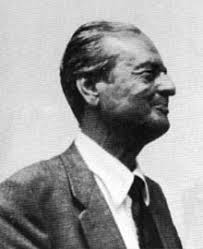
Bruno de Finetti was an Italian probabilist statistician and actuary, noted for the "operational subjective" conception of probability. The classic exposition of his distinctive theory is the 1937 "La prévision: ses lois logiques, ses sources subjectives," which discussed probability founded on the coherence of betting odds and the consequences of exchangeability.
James T. Rutnam, Sri Lankan historian and author (d. 1988) births

James Thevathasan Rutnam (1905-1988) was a Sri Lankan historian, educationalist, writer, and politician.
Nikiforos Lytras, Greek painter and educator (b. 1832) deaths
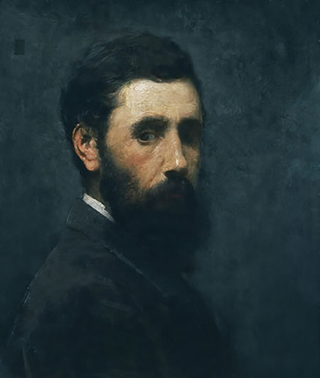
Nikiforos Lytras was a Greek painter. He was born in Tinos and trained in Athens at the School of Arts. In 1860, he won a scholarship to Royal Academy of Fine Arts of Munich. After completing these studies, he became a professor at the School of Arts in 1866, a position he held for the rest of his life. He remained faithful to the precepts and principles of the Munich School, while paying greatest attention both to ethnographic themes and portraiture. His most famous portrait was of the royal couple, Otto and Amalia, and his most well-known landscape a depiction of the region of Lavrio.
Willard Harrison Bennett, American physicist and chemist (d. 1987) births
Willard Harrison Bennett was an American scientist and inventor, born in Findlay, Ohio. Bennett conducted research into plasma physics, astrophysics, geophysics, surface physics, and physical chemistry. The Bennett pinch is named after him.
Carolyn Eisele, American mathematician and historian (d. 2000) births

Carolyn Eisele was an American mathematician and historian of mathematics known as an expert on the works of Charles Sanders Peirce.
Tage Erlander, Swedish lieutenant and politician, 25th Prime Minister of Sweden (d. 1985) births

Tage Fritjof Erlander was a Swedish politician who served as Prime Minister of Sweden from 1946 to 1969. He was the leader of the Swedish Social Democratic Party and led the government for an uninterrupted tenure of 23 years, one of the longest in any democracy. This led to Erlander being known as "Sweden's longest Prime Minister" referring to both his physical stature – 192 cm – and tenure.

The prime minister is the head of government of Sweden. The prime minister and their cabinet exercise executive authority in the Kingdom of Sweden and are subject to the Parliament of Sweden. The prime minister is nominated by the Speaker of the Riksdag and elected by the chamber by simple majority, using negative parliamentarianism. The Riksdag holds elections every four years, in the even year between leap years.
Carlos Chávez, Mexican composer, conductor, and journalist, founded the Mexican Symphonic Orchestra (d. 1978) births
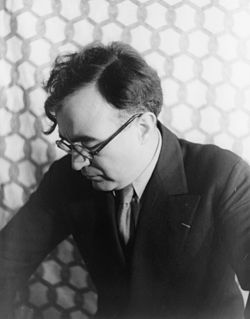
Carlos Antonio de Padua Chávez y Ramírez was a Mexican composer, conductor, music theorist, educator, journalist, and founder and director of the Mexican Symphonic Orchestra. He was influenced by native Mexican cultures. Of his six symphonies, the second, or Sinfonía india, which uses native Yaqui percussion instruments, is probably the most popular.

The National Symphony Orchestra is the most important symphony orchestra in Mexico. With its origins traced back as 1881, along with the Boston Symphony Orchestra, it is the second-oldest symphony orchestra in the American continent. The orchestra does not have a permanent venue but performs regularly in the Grand Hall of the Palace of Fine Arts in Mexico City.
Joseph-Adolphe Chapleau, Canadian lawyer and politician, 5th Premier of Quebec (b. 1840) deaths

Sir Joseph-Adolphe Chapleau, born in Sainte-Thérèse, Quebec, was a French-Canadian lawyer and politician who served as the 7th Lieutenant Governor of Quebec from 1892 to 1898.

The premier of Quebec is the head of government of the Canadian province of Quebec. The current premier of Quebec is François Legault of the Coalition Avenir Québec, sworn in on October 18, 2018, following that year's election.
Paavo Nurmi, Finnish runner and coach (d. 1973) births
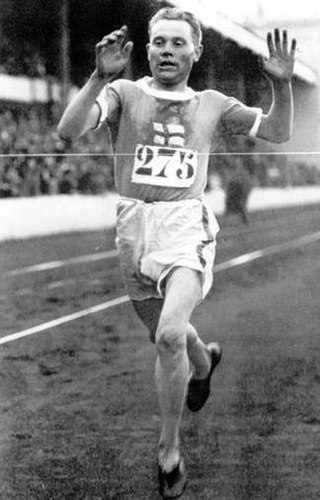
Paavo Johannes Nurmi was a Finnish middle-distance and long-distance runner. He was called the "Flying Finn" or the "Phantom Finn", as he dominated distance running in the 1920s. Nurmi set 22 official world records at distances between 1500 metres and 20 kilometres, and won nine gold and three silver medals in his 12 events in the Summer Olympic Games. At his peak, Nurmi was undefeated for 121 races at distances from 800 m upwards. Throughout his 14-year career, he remained unbeaten in cross country events and the 10,000 metres.
Leo Kanner, Ukrainian-American psychiatrist and physician (d. 1981) births

Leo Kanner was an Austrian-American psychiatrist, physician, and social activist best known for his work related to autism spectrum disorder. Before working at the Henry Phipps Psychiatric Clinic at the Johns Hopkins Hospital, Kanner practiced as a physician in Germany and South Dakota. In 1943, Kanner published his landmark paper Autistic Disturbances of Affective Contact, describing 11 children who displayed "a powerful desire for aloneness" and "an obsessive insistence on persistent sameness." He named their condition "early infantile autism," which is now known as autism spectrum disorder. Kanner was in charge of developing the first child psychiatry clinic in the United States and later served as the Chief of Child Psychiatry at the Johns Hopkins Hospital. He is one of the co-founders of The Children's Guild, a nonprofit organization serving children, families and child-serving organizations throughout Maryland and Washington, D.C., and dedicated to "Transforming how America Cares for and Educates its Children and Youth." He is widely considered one of the most influential American psychiatrists of the 20th century.
Jacques Henri Lartigue, French photographer and painter (d. 1986) births
Jacques Henri Lartigue was a French photographer and painter, known for his photographs of automobile races, planes and female Parisian fashion models.
John Cox Bray, Australian politician, 15th Premier of South Australia (b. 1842) deaths

Sir John Cox Bray was a prominent South Australian politician and the first native-born Premier of South Australia (1881–1884).

The premier of South Australia is the head of government in the state of South Australia, Australia. The Government of South Australia follows the Westminster system, with a Parliament of South Australia acting as the legislature. The premier is appointed by the governor of South Australia, and by modern convention holds office by virtue of his or her ability to command the support of a majority of members of the lower house of Parliament, the House of Assembly.
Alan Arnold Griffith, English engineer (d. 1963) births
Alan Arnold Griffith, son of Victorian science fiction writer George Griffith, was an English engineer. Among many other contributions he is best known for his work on stress and fracture in metals that is now known as metal fatigue, as well as being one of the first to develop a strong theoretical basis for the jet engine. Griffith's advanced axial-flow turbojet engine designs, were integral in the creation of Britain's first operational axial-flow turbojet engine, the Metropolitan-Vickers F.2 which first ran successfully in 1941. Griffith however had little direct involvement in actually producing the engine, after he moved in 1939 from leading the engine department at the Royal Aircraft Establishment to start work at Rolls Royce.
Dorothy L. Sayers, English author and poet (d. 1957) births

Dorothy Leigh Sayers was an English crime writer and poet. She was also a student of classical and modern languages.
Basil Rathbone, South African-born British-American actor (d. 1967) births

Philip St. John Basil Rathbone MC was a South African-born English actor. He rose to prominence in the United Kingdom as a Shakespearean stage actor and went on to appear in more than 70 films, primarily costume dramas, swashbucklers, and, occasionally, horror films.
Fernando Pessoa, Portuguese poet and critic (d. 1935) births

Fernando António Nogueira Pessoa was a Portuguese poet, writer, literary critic, translator, publisher, and philosopher, described as one of the most significant literary figures of the 20th century and one of the greatest poets in the Portuguese language. He also wrote in and translated from English and French.
André François-Poncet, French politician and diplomat (d. 1978) births

André François-Poncet was a French politician and diplomat whose post as ambassador to Germany allowed him to witness first-hand the rise to power of Adolf Hitler and the Nazi Party, and the Nazi regime's preparations for World War II.
Bruno Frank, German-American author, poet, and playwright (d. 1945) births

Bruno Frank was a German author, poet, playwright, screenwriter, and humanist.
Ludwig II, king of Bavaria (b. 1845) deaths

Ludwig II was King of Bavaria from 1864 until his death in 1886. He is sometimes called the Swan King or der Märchenkönig. He also held the titles of Count Palatine of the Rhine, Duke of Bavaria, Duke of Franconia, and Duke in Swabia.
Henry George Lamond, Australian farmer and author (d. 1969) births
Henry George Lamond was an Australian farmer and writer, notable for his novels about the land, people and animals of outback Queensland. In addition to his fiction and non-fiction books, he wrote over 900 essays and articles for magazines including Walkabout. At one point in his career he was considered to be the Australian 'Thompson Seton'.
Leon Chwistek, Polish painter, philosopher, and mathematician (d. 1944) births

Leon Chwistek was a Polish avant-garde painter, theoretician of modern art, literary critic, logician, philosopher and mathematician.
Étienne Gilson, French philosopher and academic (d. 1978) births
Étienne Henri Gilson was a French philosopher and historian of philosophy. A scholar of medieval philosophy, he originally specialised in the thought of Descartes; he also philosophized in the tradition of Thomas Aquinas, although he did not consider himself a Neo-Thomist philosopher. In 1946 he attained the distinction of being elected an "Immortal" (member) of the Académie française. He was nominated for the Nobel Prize in Literature.
Joseph Škoda, Czech physician and dermatologist (b. 1805) deaths

Joseph Škoda was a Czech physician, medical professor and dermatologist. Together with Carl Freiherr von Rokitansky, he was the founder of the Modern Medical School of Vienna.
Heinrich Gutkin, Estonian businessman and politician (d. 1941) births
Heinrich Gutkin was a trader and the Estonian National Assembly member.
Charalambos Tseroulis, Greek general and politician, Greek Minister for Military Affairs (d. 1929) births
Charalambos Tseroulis was a distinguished infantry officer of the Hellenic Army who rose to the rank of Lieutenant General.
This is a list of Greek war and defence ministers.
William Sealy Gosset, English chemist and statistician (d. 1937) births
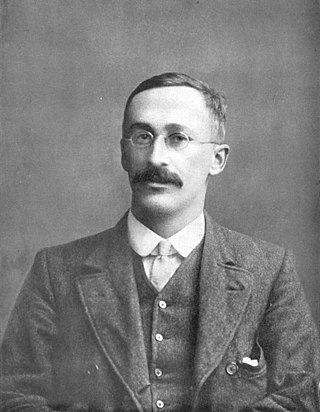
William Sealy Gosset was an English statistician, chemist and brewer who served as Head Brewer of Guinness and Head Experimental Brewer of Guinness and was a pioneer of modern statistics. He pioneered small sample experimental design and analysis with an economic approach to the logic of uncertainty. Gosset published under the pen name Student and developed most famously Student's t-distribution – originally called Student's "z" – and "Student's test of statistical significance".
Paul Neumann, Austrian swimmer and physician (d. 1932) births
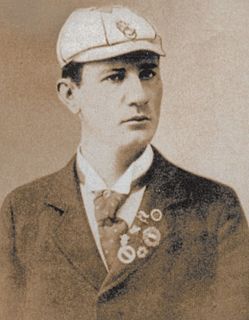
Paul Neumann was an Austrian swimmer and physician, who competed at the 1896 Summer Olympics in Athens and became the first ever Austrian gold medalist.
Karin Swanström, Swedish actress, director, and producer (d. 1942) births

Karin Swanström was a Swedish actress, producer and director.
Thomas N. Heffron, American actor, director, and screenwriter (d. 1951) births

Thomas N. Heffron was a screenwriter, actor, and a director. He was born in Nevada, He worked as an attorney and danced in vaudeville before he began his career in film with Thanhousr in 1911, eventually landing him a role with Paramount Pictures a few years later. He left the movie industry in 1922, making all his movies in the silent era.
Jules Bordet, Belgian immunologist and microbiologist, Nobel Prize laureate (d. 1961) births

Jules Jean Baptiste Vincent Bordet was a Belgian immunologist and microbiologist. The bacterial genus Bordetella is named after him. The Nobel Prize in Physiology or Medicine was awarded to him in 1919 for his discoveries relating to immunity.

The Nobel Prize in Physiology or Medicine is awarded yearly by the Nobel Assembly at the Karolinska Institute for outstanding discoveries in physiology or medicine. The Nobel Prize is not a single prize, but five separate prizes that, according to Alfred Nobel's 1895 will, are awarded "to those who, during the preceding year, have conferred the greatest benefit to humankind". Nobel Prizes are awarded in the fields of Physics, Chemistry, Physiology or Medicine, Literature, and Peace.
Wallace Clement Sabine, American physicist and academic (d. 1919) births

Wallace Clement Sabine was an American physicist who founded the field of architectural acoustics. Sabine was the architectural acoustician of Boston's Symphony Hall, widely considered one of the two or three best concert halls in the world for its acoustics.
Karl Blossfeldt, German photographer (d. 1932) births

Karl Blossfeldt was a German photographer and sculptor. He is best known for his close-up photographs of plants and living things, published in 1929 as Urformen der Kunst. He was inspired, as was his father, by nature and the ways in which plants grow. He believed that "the plant must be valued as a totally artistic and architectural structure."
W. B. Yeats, Irish poet and playwright, Nobel Prize laureate (d. 1939) births

William Butler Yeats was an Irish poet, dramatist, writer and one of the foremost figures of 20th-century literature. He was a driving force behind the Irish Literary Revival and became a pillar of the Irish literary establishment who helped to found the Abbey Theatre. In his later years he served two terms as a Senator of the Irish Free State.

The Nobel Prize in Literature is a Swedish literature prize that is awarded annually, since 1901, to an author from any country who has, in the words of the will of Swedish industrialist Alfred Nobel, "in the field of literature, produced the most outstanding work in an idealistic direction". Though individual works are sometimes cited as being particularly noteworthy, the award is based on an author's body of work as a whole. The Swedish Academy decides who, if anyone, will receive the prize. The academy announces the name of the laureate in early October. It is one of the five Nobel Prizes established by the will of Alfred Nobel in 1895. Literature is traditionally the final award presented at the Nobel Prize ceremony. On some occasions the award has been postponed to the following year, most recently in 2018 as of May 2022.
Rudolf Kjellén, Swedish political scientist and academic (d. 1922) births

Johan Rudolf Kjellén was a Swedish political scientist, geographer and politician who first coined the term "geopolitics". His work was influenced by Friedrich Ratzel. Along with Alexander von Humboldt, Carl Ritter, and Ratzel, Kjellén would lay the foundations for the German Geopolitik that would later be espoused prominently by General Karl Haushofer.
Dwight B. Waldo, American historian and academic (d. 1939) births
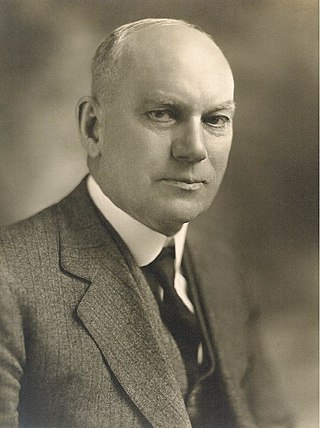
Dr. Dwight Bryant Waldo was the first President of Western Michigan University (WMU) in Kalamazoo, Michigan. Waldo was born in Arcade, N.Y. but spent his childhood in Plainwell, Michigan. Waldo was elected principal of WMU on April 1, 1904. He served as president from 1904 through 1936. When Western Michigan first opened, it was known as the Western State Normal School and later as the Western State Teachers College. One of Waldo's first moves, creating a rural school department, cemented WMU as a teaching college. It was the first such department in the nation and prepared teachers to effectively educate students in rural parts of America. Waldo also firmly believed in diversity on campus, and during his tenure many females and minorities were given the opportunity to attend the college.
Lucy, Lady Duff-Gordon, English fashion designer (d. 1935) births
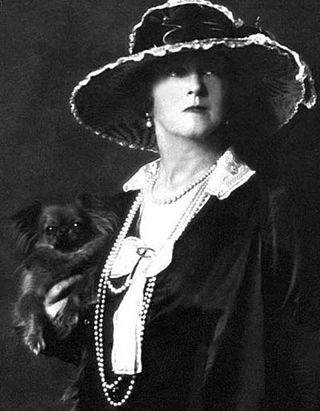
Lucy Christiana, Lady Duff-Gordon was a leading British fashion designer in the late 19th and early 20th centuries who worked under the professional name Lucile.
Henry Gray, English anatomist and surgeon (b. 1827) deaths

Henry Gray was a British anatomist and surgeon most notable for publishing the book Gray's Anatomy. He was elected a Fellow of the Royal Society (FRS) at the age of 25.
Charles Algernon Parsons, English engineer, founded C. A. Parsons and Company (d. 1931) births

Sir Charles Algernon Parsons, was an Anglo-Irish engineer, best known for his invention of the compound steam turbine, and as the eponym of C. A. Parsons and Company. He worked as an engineer on dynamo and turbine design, and power generation, with great influence on the naval and electrical engineering fields. He also developed optical equipment for searchlights and telescopes.
C. A. Parsons and Company was a British engineering firm which was once one of the largest employers on Tyneside. The company became Reyrolle Parsons in 1968, merged with Clarke Chapman to form Northern Engineering Industries in 1977, and became part of Rolls-Royce in 1989. Today the company is part of Siemens Energy.
Jean-Baptiste Benoît Eyriès, French geographer and author (b. 1767) deaths
Jean-Baptiste Benoît Eyriès was a French geographer, author and translator, best remembered in the English speaking world for his translation of German ghost stories Fantasmagoriana, published anonymously in 1812, which inspired Mary Shelley and John William Polidori to write Frankenstein and The Vampyre respectively. He was one of the founding members of the Société de Géographie, a member of the Société Asiatique, Académie des Inscriptions et Belles-Lettres, American Philosophical Society, and American Academy of Arts and Sciences, was awarded the Legion of Honour, and has a street named after him in Le Havre and a mountain near Humboldt Bay in California.
Augusta Lundin, the first international Swedish fashion designer (d. 1919) births

Augusta Lundin was a Swedish fashion designer. She is considered to be the first international Swedish fashion designer as well as the first well known fashion designer in Sweden.
James Clerk Maxwell, Scottish physicist and mathematician (d. 1879) births

James Clerk Maxwell was a Scottish mathematician and scientist responsible for the classical theory of electromagnetic radiation, which was the first theory to describe electricity, magnetism and light as different manifestations of the same phenomenon. Maxwell's equations for electromagnetism have been called the "second great unification in physics" where the first one had been realised by Isaac Newton.
Alberto Henschel, German-Brazilian photographer and businessman (d. 1882) births

Alberto Henschel was a German-Brazilian photographer born in Berlin. Considered the hardest-working photographer and businessman in 19th-century Brazil, with offices in Pernambuco, Bahia, Rio de Janeiro, and São Paulo, Henschel was also responsible for the presence of other professional photographers in the country, including his compatriot Karl Ernst Papf—with whom he later worked.
Carl Schmidt, Latvian-German chemist and academic (d. 1894) births

Carl Ernst Heinrich Schmidt, also known in Russia as Karl Genrikhovich Schmidt, was a Baltic German chemist from the Governorate of Livonia, a part of the Russian Empire.
Heinrich Hoffmann, German psychiatrist and author (d. 1894) births

Heinrich Hoffmann was a German psychiatrist, who also wrote some short works including Der Struwwelpeter, an illustrated book portraying children misbehaving.
José Antonio Páez, Venezuelan general and politician, President of Venezuela (d. 1873) births

José Antonio Páez Herrera was a Venezuelan leader who fought against the Spanish Crown for Simón Bolívar during the Venezuelan War of Independence. He later led Venezuela's independence from Gran Colombia.
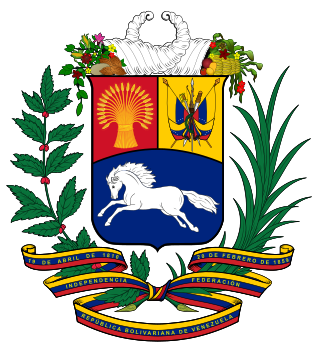
Under the Venezuelan Constitution, the president of Venezuela is the head of state and head of government of Venezuela. As chief of the executive branch and face of the government as a whole, the presidency is the highest political office in the country by influence and recognition. The president is also the commander-in-chief of the National Bolivarian Armed Forces of Venezuela. The president is directly elected through a popular vote to a six-year term. Since the 2009 constitutional referendum, any person can be elected to the office an indefinite number of times. Upon the death, resignation, or removal from office of an incumbent president, the vice president assumes the office. The president must be at least 30 years of age, and has to be a "natural born" citizen of Venezuela, and cannot possess any other citizenship.
Winfield Scott, American general (d. 1866) births

Winfield Scott was an American military commander and political candidate. He served as a general in the United States Army from 1814 to 1861, taking part in the War of 1812, the Mexican–American War, the early stages of the American Civil War and conflicts with Native Americans. Scott was the Whig Party's presidential nominee in the 1852 election, but was defeated by Democrat Franklin Pierce. He was known as Old Fuss and Feathers for his insistence on proper military etiquette, as well as the Grand Old Man of the Army for his many years of service.
Henry Middleton, American farmer and politician, 2nd President of the Continental Congress (b. 1717) deaths

Henry Middleton was a planter, public official from South Carolina. A member of the colonial legislature, during the American Revolution he attended the First Continental Congress and served as that body's president for four days in 1774 after the passage of the Continental Association, which he signed. He left the Second Continental Congress before it declared independence. Back in South Carolina, he served as president of the provincial congress and senator in the newly created state government. After his capture by the British in 1780, he accepted defeat and returned to the status of a British subject until the end of the war.

The president of the United States in Congress Assembled, known unofficially as the president of the Continental Congress and later as the president of the Congress of the Confederation, was the presiding officer of the Continental Congress, the convention of delegates that emerged as the first (transitional) national government of the United States during the American Revolution. The president was a member of Congress elected by the other delegates to serve as a neutral discussion moderator during meetings of Congress. Designed to be a largely ceremonial position without much influence, the office was unrelated to the later office of President of the United States. Upon the ratification of the Articles of Confederation and Perpetual Union in March 1781, the Continental Congress became the Congress of the Confederation. The membership of the Second Continental Congress carried over without interruption to the First Congress of the Confederation, as did the office of president.
Antoni Radziwiłł, Polish-Lithuanian composer and politician (d. 1833) births

Prince Antoni Henryk Radziwiłł was a Polish and Prussian noble, aristocrat, musician, and politician. Initially an hereditary Duke of Nieśwież and Ołyka, as a scion of the Radziwiłł family he also held the honorific title of a Reichsfürst of the Holy Roman Empire. Between 1815 and 1831 he acted as Duke-Governor of the Grand Duchy of Posen, an autonomous province of the Kingdom of Prussia created out of Greater Polish lands annexed in the Partitions of Poland.
Thomas Young, English physicist and physiologist (d. 1829) births

Thomas Young FRS was a British polymath who made notable contributions to the fields of vision, light, solid mechanics, energy, physiology, language, musical harmony, and Egyptology. He was instrumental in the decipherment of Egyptian hieroglyphs, specifically the Rosetta Stone.
José Bonifácio de Andrada, Brazilian poet, academic, and politician (d. 1838) births

José Bonifácio de Andrada e Silva was a Brazilian statesman, naturalist, mineralist, professor and poet, born in Santos, São Paulo, then part of the Portuguese Empire. He was one of the most important mentors of Brazilian independence, and his actions were decisive for the success of Emperor Pedro I. He supported public education, was an abolitionist and suggested that a new national capital be created in Brazil's underdeveloped interior. His career as naturalist was marked by the discovery of four new minerals.
Dorothea Erxleben, first German female doctor (b. 1715) deaths

Dorothea Christiane Erxleben was a German doctor who became the first female doctor of medicinal science in Germany.
Antonín Vranický, Czech violinist and composer (d. 1820) births

Antonín Vranický, Germanized as Anton Wranitzky, and also seen as Wranizky, was a Czech violinist and composer of the 18th century. He was the half brother of Pavel Vranický.
Frances Burney, English novelist and playwright (d. 1840) births

Frances Burney, also known as Fanny Burney and later Madame d'Arblay, was an English satirical novelist, diarist and playwright. In 1786–1790 she held the post as "Keeper of the Robes" to Charlotte of Mecklenburg-Strelitz, George III's queen. In 1793, aged 41, she married a French exile, General Alexandre d'Arblay. After a long writing career and wartime travels that stranded her in France for over a decade, she settled in Bath, England, where she died on 6 January 1840. The first of her four novels, Evelina (1778), was the most successful and remains her most highly regarded. Most of her plays were not performed in her lifetime. She wrote a memoir of her father (1832) and many letters and journals that have been gradually published since 1889.
Sir Richard Glyn, 1st Baronet, of Ewell, English banker and politician, Lord Mayor of London (d. 1773) births

Sir Richard Glyn, 1st Baronet was a British banker and politician, who together with Joseph Vere and Thomas Hallifax founded the Bank of Vere, Glyn & Hallifax, which evolved into Williams & Glyn's Bank.
The Lord Mayor of London is the mayor of the City of London and the leader of the City of London Corporation. Within the City, the Lord Mayor is accorded precedence over all individuals except the sovereign and retains various traditional powers, rights, and privileges, including the title and style The Right Honourable Lord Mayor of London.
Egbert Bartholomeusz Kortenaer, Dutch admiral (b. 1604) deaths

Egbert Bartholomeuszoon Kortenaer or Egbert Meussen Cortenaer was an admiral of the United Provinces of the Netherlands who was killed in the Battle of Lowestoft.
Henry Carey, 2nd Earl of Monmouth, English politician (b. 1595) deaths

Henry Carey, 2nd Earl of Monmouth, KB was an English nobleman and translator.
Adrien Baillet, French scholar and critic (d. 1706) births

Adrien Baillet was a French scholar and critic. He is now best known as a biographer of René Descartes.
Miyamoto Musashi, Japanese samurai (b. 1584) deaths
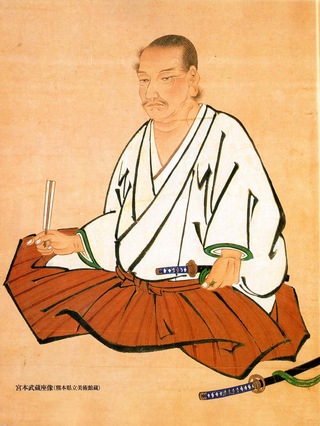
Miyamoto Musashi , also known as Shinmen Takezō, Miyamoto Bennosuke or, by his Buddhist name, Niten Dōraku, was a Japanese swordsman, philosopher, strategist, writer and rōnin, who became renowned through stories of his unique double-bladed swordsmanship and undefeated record in his 61 duels. Musashi, as he was often simply known, is considered a Kensei, a sword-saint of Japan. He was the founder of the Niten Ichi-ryū, or Nito Ichi-ryū, style of swordsmanship, and in his final years authored The Book of Five Rings and Dokkōdō.
George Gordon, 1st Marquess of Huntly, Scottish politician (b. 1562) deaths
George Gordon, 1st Marquess of Huntly was a Scottish nobleman who took a leading role in the political and military life of Scotland in the late 16th century, and around the time of the Union of the Crowns.
Sir Vincent Corbet, 1st Baronet, English politician (d. 1656) births

Sir Vincent Corbet, 1st Baronet was an English lawyer and politician who sat for Shropshire in the House of Commons in the Short Parliament of 1640. He fought on the Royalist side in the English Civil War.
Jan Marek Marci, Czech physician and scientist (d. 1667) births

Jan Marek Marci, or Johannes Marcus Marci, was a Bohemian doctor and scientist, rector of the University of Prague, and official physician to the Holy Roman Emperors. The crater Marci on the far side of the Moon is named after him.
Willebrord Snell, Dutch astronomer and mathematician (d. 1626) births
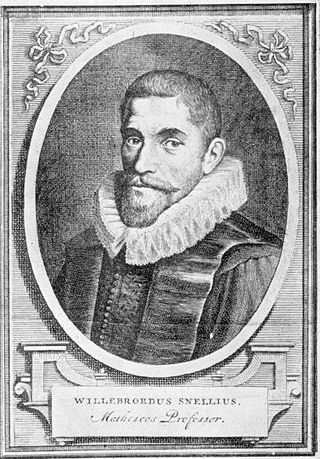
Willebrord Snellius was a Dutch astronomer and mathematician, AKA Snell. His name is usually associated with the law of refraction of light known as Snell's law.
Giovanni Antonio Magini, Italian mathematician, cartographer and astronomer (d. 1617) births
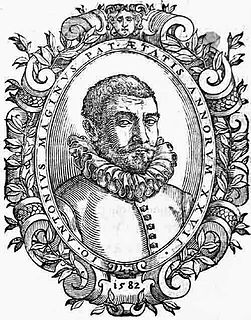
Giovanni Antonio Magini was an Italian astronomer, astrologer, cartographer, and mathematician.
Veronica Gambara, Italian poet (b. 1485) deaths

Veronica Gambara was an Italian poet and politician. She was the ruler of the County of Correggio from 1518 until 1550.
Jost Amman, Swiss printmaker (d. 1591) births

Jost Amman was a Swiss-German artist, celebrated chiefly for his woodcuts, done mainly for book illustrations.
Alessandro Piccolomini, Italian astronomer and philosopher (d. 1579) births

Alessandro Piccolomini was an Italian humanist, astronomer and philosopher from Siena, who promoted the popularization in the vernacular of Latin and Greek scientific and philosophical treatises. His early works include Il Dialogo della bella creanza delle donne, o Raffaella (1539) and the comedies Amor costante, and Alessandro, which were sponsored and produced by the Sienese Accademia degli Intronati, of which he was a member and an official. Much of his literary production consisted of translations from the Classics, of which Book XIII of Ovid's Metamorphoses and book VI of the Aeneid are early examples. In 1540, while a student at the University of Padua, he helped found the Infiammati Academy, in which he gave lectures in philosophy. His poetry, in which he followed the Petrarchan tradition, appeared first in various contemporary collections, and in 1549 he published as a single volume one hundred sonnets titled Cento sonetti. Later in life, he established in his sister-in-law's Villa of Poggiarello of Stigliano, near Siena, where he attended the revision of his previous essays, and where he wrote all his late works, as the translation of Aristotle's Poetics on which he wrote a learned commentary issued in 1575. His interest in Aristotle included the publication of a paraphrase of Aristotle's Rhetoric with commentary. In his Trattato della grandezza della terra e dell'acqua (1558), he opposed the Aristotelean and Ptolemaic opinion that water was more extensive than land.
Ernest of Bavaria, pledge lord of the County of Glatz (d. 1560) births

Duke Ernest of Bavaria was the Administrator of the dioceses of Passau and Salzburg and pledge lord of Glatz.
Uko Fockena, Frisian chieftain (b. c. 1408) deaths
Uko Fockena was an East Frisian chieftain of Moormerland and Emsigerland.
Taejong of Joseon (d. 1422) births
Taejong of Joseon, personal name Yi Bang-won, was the third ruler of the Joseon dynasty of Korea and the father of King Sejong the Great. Before ascending to the throne, he was known as Prince Jeongan.
Juan Manuel, Spanish prince (b. 1282) deaths

Don Juan Manuel was a Spanish medieval writer, nephew of Alfonso X of Castile, son of Manuel of Castile and Beatrice of Savoy. He inherited from his father the great Seigneury of Villena, receiving the titles of Lord, Duke and lastly Prince of Villena. He married three times, choosing his wives for political and economic convenience, and worked to match his children with partners associated with royalty. Juan Manuel became one of the richest and most powerful men of his time, coining his own currency as the kings did. During his life, he was criticised for choosing literature as his vocation, an activity thought inferior for a nobleman of such prestige.
Tankei, Japanese sculptor (b. 1173) deaths

Tankei was a Japanese sculptor of the Kei school, which flourished in the Kamakura period. He was the student of and eldest son of the master sculptor Unkei.
Anthony of Padua, Portuguese priest and saint (b. 1195) deaths

Anthony of Padua or Anthony of Lisbon was a Portuguese Catholic priest and friar of the Franciscan Order. He was born and raised by a wealthy family in Lisbon, Portugal, and died in Padua, Italy. Noted by his contemporaries for his powerful preaching, expert knowledge of scripture, and undying love and devotion to the poor and the sick, he was one of the most quickly canonized saints in church history, being canonized less than a year after his death. He was proclaimed a Doctor of the Church by Pope Pius XII on 16 January 1946.
Ali az-Zahir, Fatimid caliph (b. 1005) deaths

Abū al-Ḥasan ʿAlī ibn al-Ḥākim, better known with his regnal name al-Ẓāhir li-iʿzāz Dīn Allāh, was the seventh caliph of the Fatimid dynasty (1021–1036). Al-Zahir assumed the caliphate after the disappearance of his father al-Hakim bi-Amr Allah.
Fujiwara no Michikane, Japanese nobleman (b. 961) deaths
Fujiwara no Michikane, the son of Kaneie, was a Japanese nobleman and monk of the Heian period.
Mansur I, Samanid emir deaths

Abu Salih Mansur, better known as Mansur I (منصور) was amir of the Samanids from 961 to 976. The son of Nuh I, his reign was characterized by weak rule and perpetual financial troubles. Mansur was notably the first Samanid ruler to the use title of King of Kings (Shahanshah), most likely as a response to his rival, the Buyid ruler Adud al-Dawla, who likewise used the title. He is also known by the sobriquet Amīr-i Sadid.
Charles the Fat, Holy Roman Emperor (d. 888) births
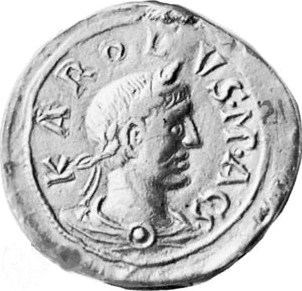
Charles III, also known as Charles the Fat, was the emperor of the Carolingian Empire from 881 to 888. A member of the Carolingian dynasty, Charles was the youngest son of Louis the German and Hemma, and a great-grandson of Charlemagne. He was the last Carolingian emperor of legitimate birth and the last to rule a united kingdom of the Franks.
Charles the Bald, Holy Roman Emperor (d. 877) births

Charles the Bald, also known as Charles II, was a 9th-century king of West Francia (843–877), king of Italy (875–877) and emperor of the Carolingian Empire (875–877). After a series of civil wars during the reign of his father, Louis the Pious, Charles succeeded, by the Treaty of Verdun (843), in acquiring the western third of the empire. He was a grandson of Charlemagne and the youngest son of Louis the Pious by his second wife, Judith.
Xiahou Dun, Chinese general deaths

Xiahou Dun, courtesy name Yuanrang, was a Chinese military general and politician serving under the warlord Cao Cao during the late Eastern Han dynasty of China. He served for a few months under Cao Cao's successor, Cao Pi, before his death. As one of Cao Cao's most trusted generals, Xiahou Dun aided the warlord in his campaigns against Lü Bu, Liu Bei, Sun Quan and others.
Gnaeus Julius Agricola, Roman general (d. 93) births
AD 40 (XL) was a leap year starting on Friday of the Julian calendar. At the time, it was known as the Year of the Consulship of Augustus without colleague. The denomination AD 40 for this year has been used since the Early Middle Ages, when the Anno Domini calendar era became the prevalent method in Europe for naming years.
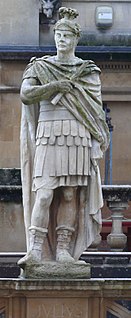
Gnaeus Julius Agricola was a Roman general and politician responsible for much of the Roman conquest of Britain. Born to a political family of senatorial rank, Agricola began his military career as a military tribune under Governor Gaius Suetonius Paulinus. In his subsequent career, he served in a variety of political positions in Rome. In 64, he was appointed quaestor in Asia province. Two years later, he was appointed Plebeian Tribune, and in 68, he was made praetor. During the Year of the Four Emperors in 69, he supported Vespasian, general of the Syrian army, in his bid for the throne.
Christian feast day: Anthony of Padua, Doctor of the Church

Anthony of Padua or Anthony of Lisbon was a Portuguese Catholic priest and friar of the Franciscan Order. He was born and raised by a wealthy family in Lisbon, Portugal, and died in Padua, Italy. Noted by his contemporaries for his powerful preaching, expert knowledge of scripture, and undying love and devotion to the poor and the sick, he was one of the most quickly canonized saints in church history, being canonized less than a year after his death. He was proclaimed a Doctor of the Church by Pope Pius XII on 16 January 1946.

Doctor of the Church, also referred to as Doctor of the Universal Church, is a title given by the Catholic Church to saints recognized as having made a significant contribution to theology or doctrine through their research, study, or writing.
Christian feast day: Aquilina
Aquilina (281–293) was a Christian child from Byblos, Lebanon. At that time, the Church was not yet divided and only one Church existed.
Christian feast day: Cetteus (Peregrinus)

Saint Cetteus is the patron saint of Pescara. He was a bishop of the 6th century, elected to the see of Amiternum in Sabina in 590, during the pontificate of Gregory the Great.
Christian feast day: Felicula

Felicula was a probably fourth-century Roman martyr whose relics Pope Gregory I gave to Bishop John of Ravenna in about 592. She is mentioned in the Roman Martyrology on 13 June: "On the seventh milestone from the city of Rome on the Via Ardeatina, Saint Felicula, martyr".
Christian feast day: G. K. Chesterton (Episcopal Church (USA))
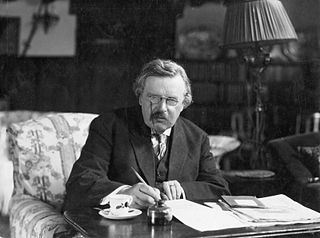
Gilbert Keith Chesterton was an English writer, philosopher, Christian apologist, and literary and art critic. He has been referred to as the "prince of paradox". Of his writing style, Time observed: "Whenever possible, Chesterton made his points with popular sayings, proverbs, allegories—first carefully turning them inside out."

The Episcopal Church, based in the United States with additional dioceses elsewhere, is a member church of the worldwide Anglican Communion. It is a mainline Protestant denomination and is divided into nine provinces. The presiding bishop of the Episcopal Church is Michael Bruce Curry, the first African-American bishop to serve in that position.
Christian feast day: Gerard of Clairvaux
Gerard of Clairvaux was the older brother of Bernard of Clairvaux. He was the son of Tescelin le Roux and Aleth de Montbard. When Bernard entered Cîteaux with a group of young relatives and friends in 1112, Gerard did not join him. Instead, he participated in the military life, but was injured during a siege of Grancy and was also imprisoned. During his imprisonment, he decided to enter the monastic life and went to Citeaux after his release.
Christian feast day: Psalmodius
Saint Psalmodius, also known as Psalmet, Sauman, Saumay, was a 7th-century Christian hermit. Assumed to have been born to a noble family of Scotia, he became a disciple of Saint Brendan as a young boy. Psalmodius, whose original Celtic name is unknown, is said to have been lost at sea for three days as a young boy.
Christian feast day: Ragnebert (Rambert)
Christian feast day: Blessed Thomas Woodhouse

Thomas Woodhouse was an English Catholic priest and martyr at Tyburn on 19 June 1573, being disembowelled alive.
Christian feast day: Triphyllius

Saint Triphyllius was born in Constantinople in the early fourth century. He was educated in law at the school of Beirut. He converted to Christianity and was named bishop of Nicosia. Triphyllius was a follower of Saint Spyridon of Trimythous. He was also an ardent supporter of St. Athanasius of Alexandria against the Arians, and consequently he was persecuted by them. St. Jerome considered him one of the most eloquent Church figures of the era.
Christian feast day: June 13 (Eastern Orthodox liturgics)

June 12 - Eastern Orthodox Church calendar - June 14
Inventors' Day (Hungary)
Inventors' Day is a day of the year set aside by a country to recognise the contributions of inventors. Not all countries recognise Inventors' Day. Those countries which do recognise an Inventors' Day do so with varying degrees of emphasis and on different days of the year.

Hungary is a landlocked country in Central Europe. Spanning 93,030 square kilometres (35,920 sq mi) of the Carpathian Basin, it is bordered by Slovakia to the north, Ukraine to the northeast, Romania to the east and southeast, Serbia to the south, Croatia and Slovenia to the southwest, and Austria to the west. Hungary has a population of nearly 9 million, mostly ethnic Hungarians and a significant Romani minority. Hungarian, the official language, is the world's most widely spoken Uralic language and among the few non-Indo-European languages widely spoken in Europe. Budapest is the country's capital and largest city; other major urban areas include Debrecen, Szeged, Miskolc, Pécs, and Győr.
Suleimaniah City Fallen and Martyrs Day (Iraqi Kurdistan)
This is a list of public holidays in Iraq.

Iraqi Kurdistan or Southern Kurdistan refers to the Kurdish-populated part of northern Iraq. It is considered one of the four parts of "Kurdistan" in Western Asia, which also includes parts of southeastern Turkey, northern Syria, and northwestern Iran. Much of the geographical and cultural region of Iraqi Kurdistan is part of the Kurdistan Region (KRI), an autonomous region recognized by the Constitution of Iraq. As with the rest of Kurdistan, and unlike most of the rest of Iraq, the region is inland and mountainous.
International Albinism Awareness Day (international)
International Albinism Awareness Day (IAAD) is celebrated annually on June 13 to celebrate the human rights of persons with albinism worldwide.
Lists of holidays by various categorizations.